PARADIGM SHIFT
IN DRC HEALTHCARE ARCHITECTURE
:Evidence- Based, Affordable, and Appropriate Sustainable Design




















By Jennifer Muganza







:Evidence- Based, Affordable, and Appropriate Sustainable Design




















By Jennifer Muganza






1. Preview
Discourse
Method
Site Analysis
Program
Concept
Massing
Schematic
Physical Model
DRC, or Democratic Republic of Congo, is the second largest country in the African continent. Congo is also known for its rich soil, which includes copper, gold, diatomite, cobalt, uranium, etc. Though its resources are so significant, the average life expectancy in Congo is 48 years old, while in the United Kingdom, it is about 80 years old, and in the world, it is about 70 years old. The primary factor behind such low life expectancy is the condition of life in DRC, supported by the current design approach to healthcare facilities, and more specifically, Hospitals. Hospital Designs in the Congo are currently influenced by one, the design ideas that colonizers left in the country, and two, building modernization that does not take into consideration the cultural and climatical condition of the country itself. Several “architects” and designers have attempted to find a solution to sanitary and cultural issues raised by the community (patient and medical staff). Though these attempts have provided a basis for this thesis, they have yet to find an ultimate solution. This is where “Paradigm Shift in DRC Healthcare Architecture” comes in. This study aims to generate evidence-based, appropriate, and affordable sustainability design strategies in order to understand how architects may adapt new trends in environmental technology for tropical climates whose nation urgently needs access to medical care as a beacon for the Great Lakes region of central and eastern Africa. This thesis also provides an introduction to how culture might influence hospital design in the Democratic Republic of Congo and thus directly respond to the needs of its people.

Multiple fields of study in architecture can be prevalent, but the topic of interest in this thesis is centered on healthcare. Healthcare can be studied for various reasons, but architects, in particular, have taken a different approach to the healing process, which provides another layer to patient success in healing. In the healthcare system, three prominent aspects must be considered to have a cohesive facility that produces a faster and better healing process.
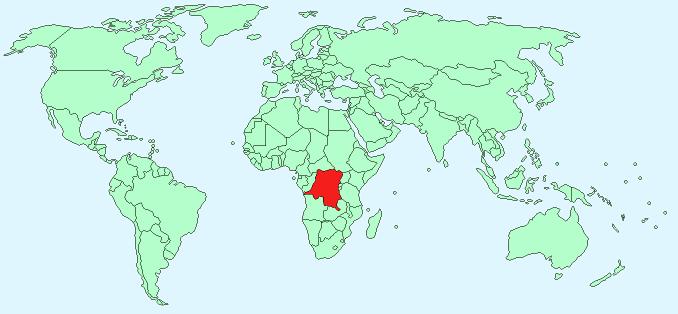
One of these aspects is the medical staff who diagnose the patient and suggest solutions to heal the disease. The second aspect is the patient, who should do their part in being willing to heal. The third component of the healthcare system is the facilities, which should be designed to complement the two aspects previously mentioned, and this is where the architect comes in. The role of the architect in health care is to provide a facility that will ease the work of medical staff and speed patients’ recovery.
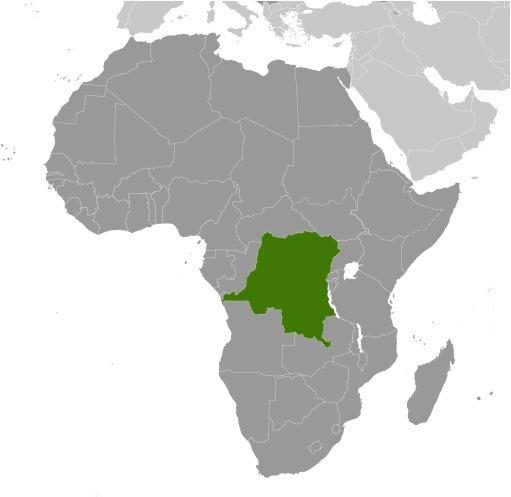
As for the thesis at hand, the focus is to ameliorate the condition of hospitals in the Democratic Republic of Congo from a sustainable, functional, and cultural point of view. Therefore, phase one of the thesis would consist of understanding what aspects of the Congolese Healthcare Model do not quite work, why the resulting aspects of Congolese healthcare need improvement, and how we start to shift the current model into establishing a model that will be evidence-based, appropriate, and affordable sustainable design strategies for healthcare facilities in DRC.
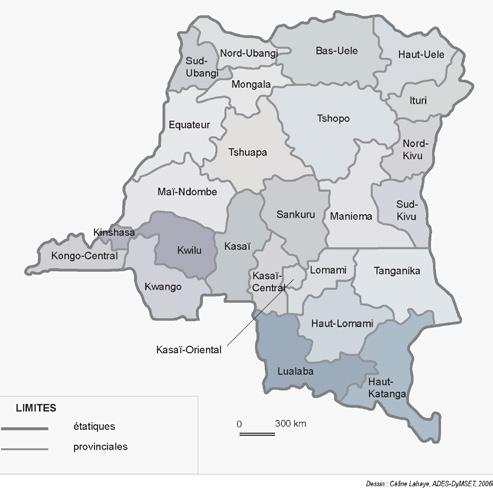
Republic of Congo and four other secondary languages are Swahili, Lingala, Tshiluba, and Kikongo. The Democratic Republic of Congo is about 95% Christian, with 50% Roman Catholic. The Democratic Republic of Congo also has one of the wealthiest African soils, containing Minerals like diamonds, gold, and coltan (a vital material for mobile phones, such as Apple, which uses Congolese coltan), copper, cobalt, tin, manganese, lead, and zinc. Moreover, Congo possesses energy sources such as coal, uranium, and oil.
Located in the center of Africa, The Democratic Republic of Congo is the Second largest country in Africa. Its neighboring countries are Angola, Burundi, the Central African Republic, the Republic of the Congo, Rwanda, South Sudan, Tanzania, Uganda, and Zambia. The country has a 25-mile coastline on the Atlantic Ocean, but other than that, DRC is a landlocked country. The capital of the Democratic Republic of Congo is Kinshasa, which is located along the Congolese River, which is 320 miles long. The Democratic Republic of Congo is often referred to as DRC or
Congo Kinshasa and is not to be confused with the Republic of Congo or Congo Brazzaville. Congo has a surface of 2,344,858 sq km with 2,267,048 sq km of land area and 77,810 sq km of water area. The DRC has a population of 111,859,928 with 250 Ethnic groups. The official language spoken in the Congo is
Though the Democratic Republic of Congo is blessed with many resources, the life expectancy of the Congolese, on average, is about 60 years old, which is very low. Countries like the United States have an average life expectancy of 77 years, about 17 years greater than DRC.
. Life expectancy in the Democratic Republic of Congo could get much better if the health conditions were to be improved. Dr. Franck BITILASI TEMA, who is a medical researcher for the government in the Democratic Republic of Congo in the Province of Katanga, went through sanitary research in Katangese hospitals and established that the current condition of Hospitals does not allow the population to heal properly. Moreover, Congolese hospital staff are not equipped to serve the population size of DRC. For a population of 111,859,928, there are about 13839 doctors available, which means that
one physician will serve 8,082 people. The country itself lacks medical assistants as well, with one medical assistant for 1,060 people. These numbers could significantly be improved with the right learning environment for current doctors to teach the next generation.
Looking around the Republic Democratic of Congo, a couple of hospital cases have been observed to locate the issue in the following Region: Haut Katanga, Kinshasa, Nord-Kivu, Sud Kivu, Kongo Central, Kasai, and the Haut Uele.


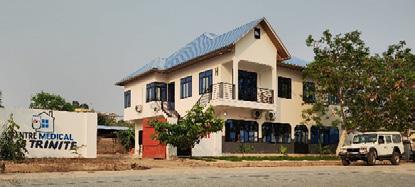

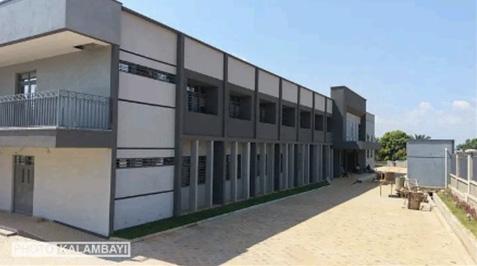
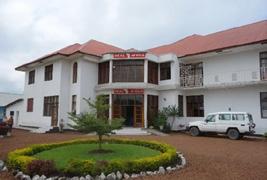
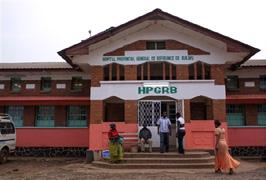

Case 1: CMC is located in Lubumbashi, province of Haut Katanga.

This Hospital is a facility that I have experienced first-hand; therefore, I will be the first reference for this case. Compared to other hospitals in the surrounding area, CMC is considered one of the best hospitals in Lubumbashi. One of the reasons why it is considered one of the best hospitals is because they have a cleaner environment and a program that follows the codes. Most Doctors working there appreciate the quality of the resources they provide to their medical staff. There is also a green area on the outside with community spaces.
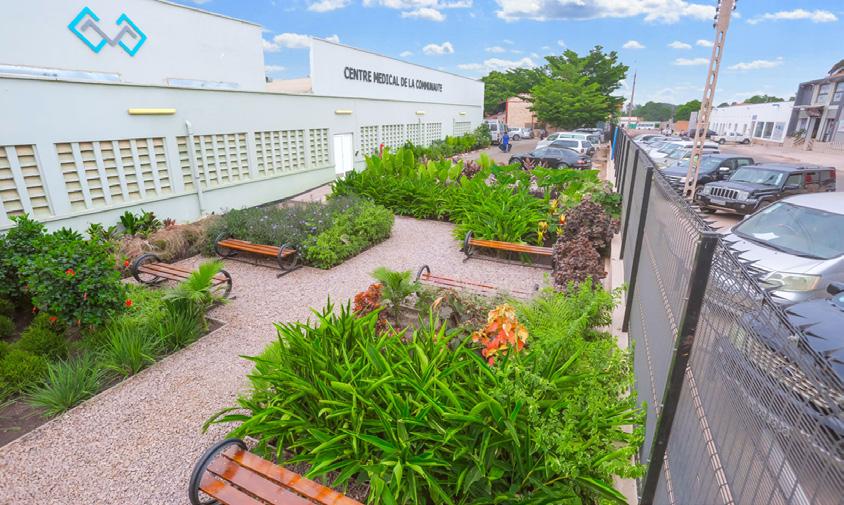
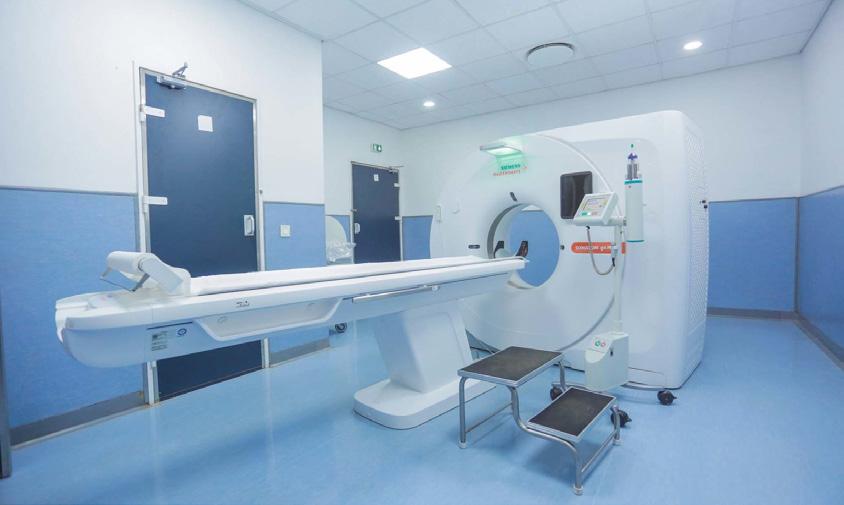
This hospital also has louvers and windows that facilitate natural light entry. Nonetheless, this hospital is close to perfection; this hospital still deals with humidity in the building. Parking spaces are a big issue, as well as getting more medical staff.
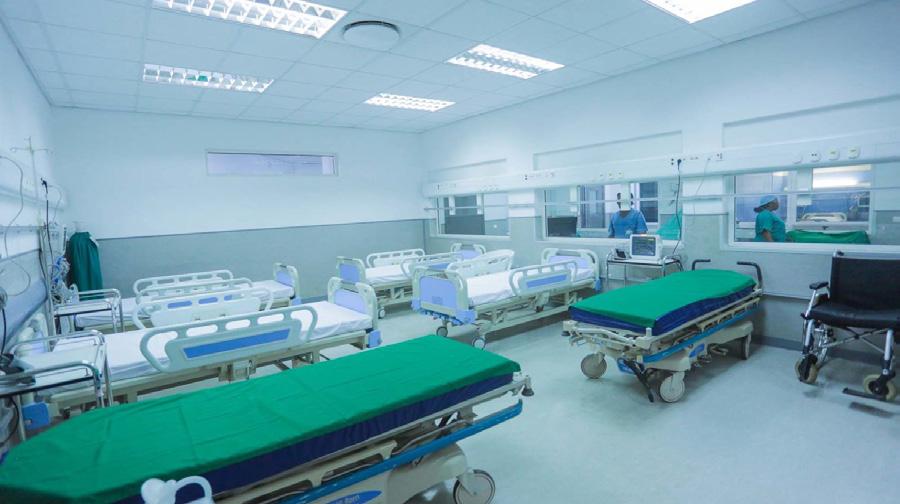
Case 2: HJ Hospital is located in Kinshasa, province of Kinshasa.

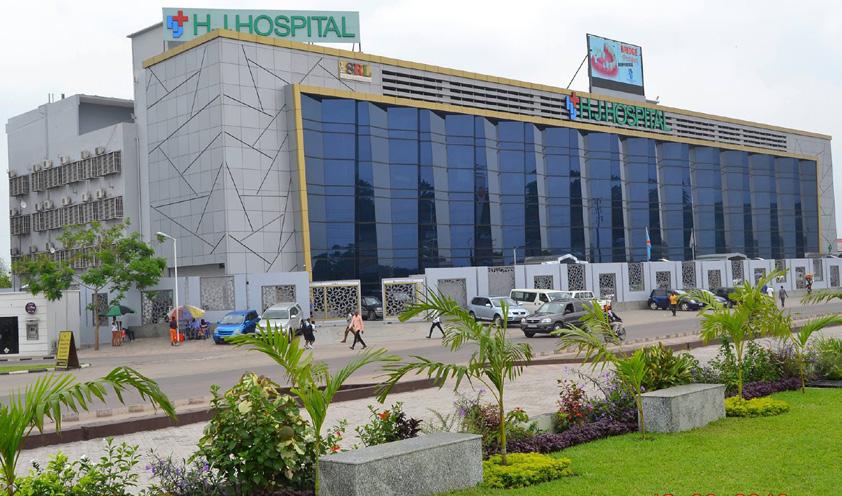
This hospital is one of the best in Kinshasa. They offer multiple services such as science, dermatology, lasers and cosmetic sciences, oncology, orthopedics, mother and childcare, general and laparoscopy surgery, ENT, gastroenterology, ophthalmology, emergency and critical care, urology, nephrology, neuroscience, internal medicine, dentistry, bariatric surgery, diagnostics, plastic, and cosmetic care. They have one of the larger bed capacities in Kinshasa, which is 205 beds.
HJ Hospital owns a lot of machines and systems relative to Congolese healthcare. HJ hospital design has a large glass wall on the front facade, which is uncommon in the DRC, especially considering that the capital gets most of the highest temperatures in the country. HJ does not have a lot of space for vegetation or landscape design. However, the overall architectural design of HJ provides its users with what they need to heal.

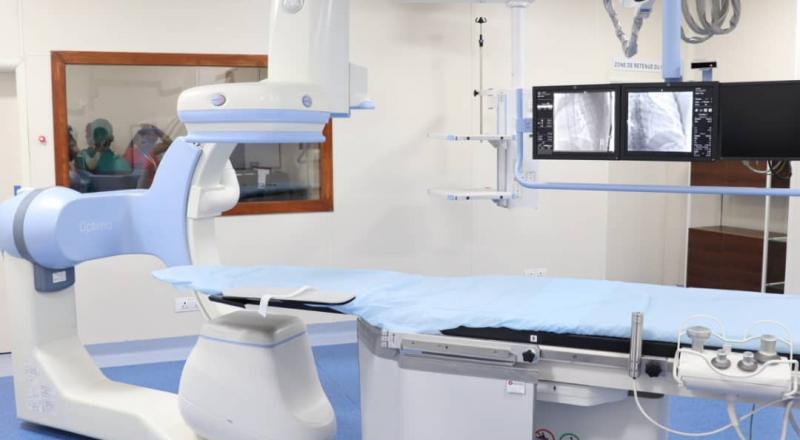
Case 3: Heal Africa Hospital in Goma, province of Nord-Kivu.

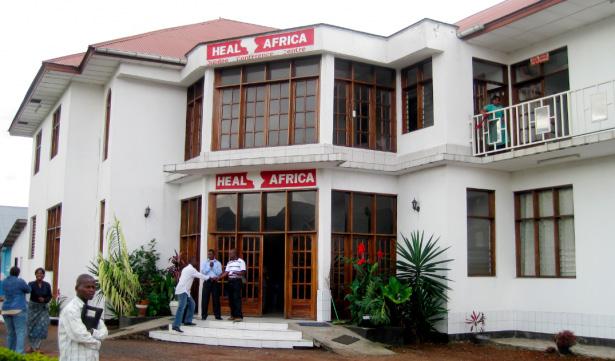
This hospital was first built to treat the physical and psychological effects of war on the local people of the Democratic Republic of Congo (DRC). In 2008, the hospital started providing other healthcare services to the population. This hospital has the opportunity to receive senior staff from Australia to train local doctors, and today, it functions as a general hospital. This hospital just acquired new buildings that were opened on June 2, 2023. However, the previous building had sanitary issues and did not have enough space.

Humidity once again was the big issue, but the old local was also not equipped to receive patients who were not affected by war.
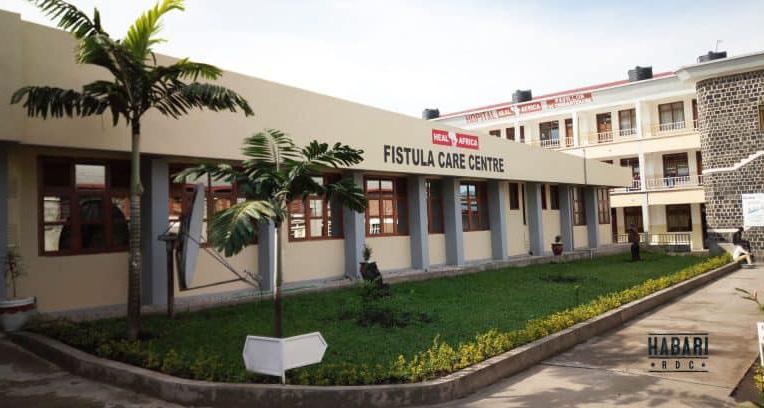
Case 4: General Hospital of Bukavu in Bukavu, province of Sud-Kivu
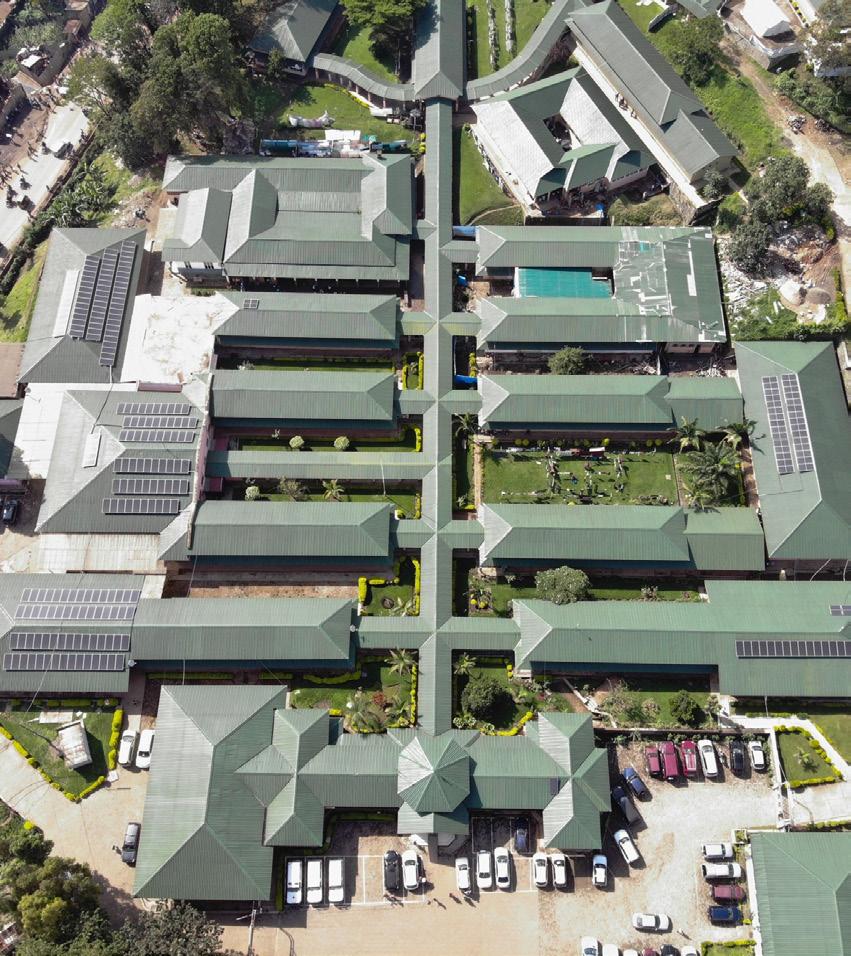

This Hospital possesses 152 beds, with 130 people working at the Hospital. Only 8 of the Hospital workers are Doctors. The master plan design, on the other hand, allows people to have quick access to nature. Though the health care condition is not at its best, natural hair provides a lot of advantages to this Hospital design. The design of this Hospital also considers circulation during the rainy season, which shows an attempt to resolve some of the circulation problems in Congolese Hospital.
Parking is still an issue that is not being addressed in this hospital as well.

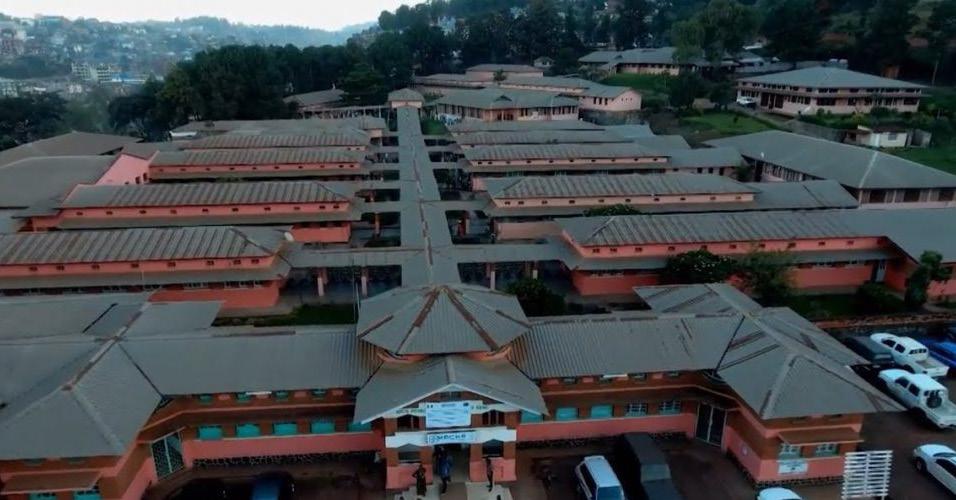
This Hospital design is very interesting. This is the first Hospital that uses colorful bedrooms. However, the hospital was converted from a house design, making circulation very inconvenient. The hospital also has staircases and does not have an elevator, which takes a lot of time and does not allow disabled or very sick patients to use the space.
The lack of resources in this hospital is tremendous. At first, the hospital was a house that had been turned into a hospital. Therefore, the condition of the hospital itself is not good, and the programmatical needs of the hospital are not respected as well, given the fact that they tried to fit within the parameters of the house instead of making the house the hospital.
This center is dedicated to kids. The hospital has a lower scale compared to the preview hospital. This Hospital was founded by Benoît MBIYA, who studied medicine in Belgium. The hospital has two floors with no elevator, a problem that we have observed in most of the hospital designs.



As observed through the above cases of hospitals in the Democratic Republic of Congo, we can make a couple of observations. One, ventilation is a big issue in these hospitals, which some try to address but cannot resolve. For example, case one and case two have the most resolved hospitals in terms of ventilation, but cases three through seven have yet to tackle the humidity problems. We also can observe that most of the hospitals were not originally hospitals, like in cases three, five, and six.
A hospital’s programmatical needs are unmet, and therefore, the hospital cannot function properly. Moreover, most of the cases present multiple floor levels with no elevator. A cousin of mine who is interning at a public hospital in Lubumbashi has mentioned that a patient died once because they could not get oxygen fast enough in the operating room, which could have been avoided with an elevator; keep in mind that the mentioned hospital has four floors without an elevator.
A couple of other comments from the survey indicate that it is very hard to know what the patient died with because the bodies are not autopsied. The survey also mentioned the need for more medical professionals and larger hospitals that function correctly. Although Congolese hospitals present a large need for sustainable and fitted design, most of the conditions mentioned in all seven cases are related to site conditions. CMC and HJ hospitals, for example, are located in the country’s richest and most developed part, meaning they have access to more resources than the rest of the hospital.
. Case three was originally a military place to heal and get treated psychologically, as much as physically, while cases five and six were houses that had been turned into a hospital. The problem with turning a house into a hospital or a healing center into a hospital is the program.
a survey we conducted mentions that most hospitals were built during the colonial years and are still currently being used the way they are, said a doctor in DRC with eighteen years of expertise who has worked in seven hospitals across the country.
Haut-Katanga, Haut Lomami, Lualaba, and the province of Tanganyika make up about 70 % of the DRC wealth, while Kinshasa makes up 15%, which together, they make up about 85% of the country’s wealth, leaving only 15% to the rest of the provinces.
The percentage mentioned previously alone provides a strong case for the underdevelopment of healthcare in the rest of the country. In his book House Form and Culture, Amos provides a better insight into the correlation between the site and the architecture. Amos mentions that geography has always been linked with history and even prehistory, and in the past, history has also played an important role in architectural studies. Therefore, location is an important factor in healthcare design because it gives us factors that will influence the user’s condition of life.
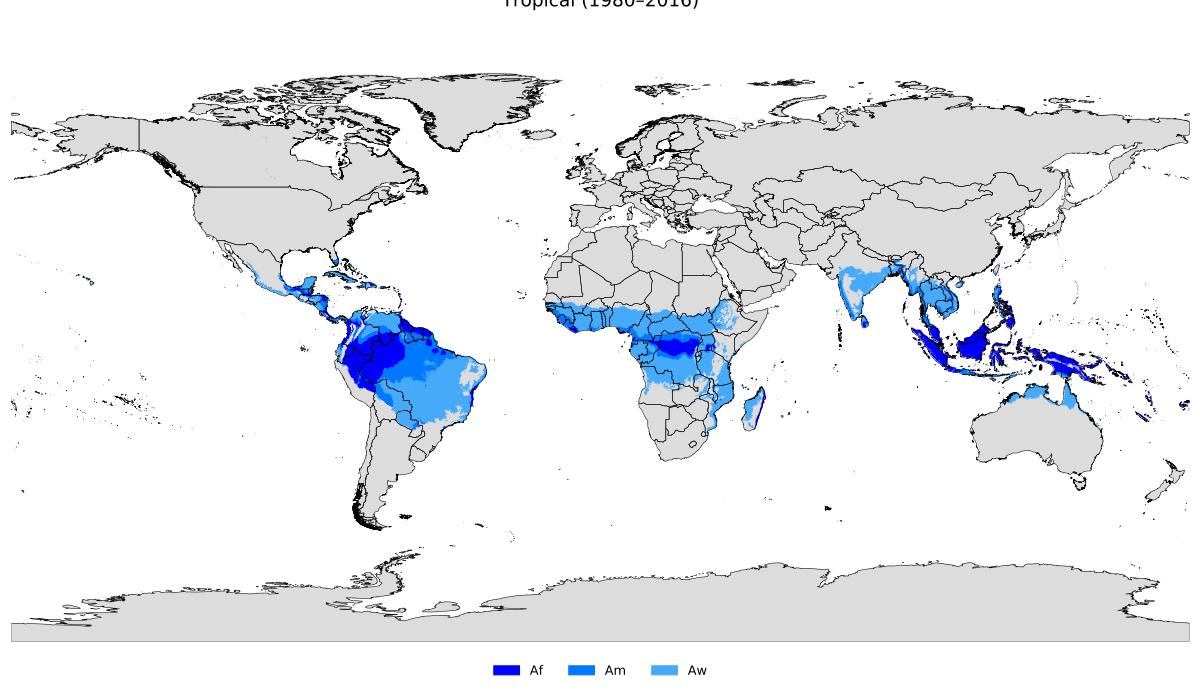
More than 125 countries are located within the tropical zone, including The Democratic Republic of Congo, one of Africa’s fully tropically submerged countries. Tropical climate is located roughly in the middle of the globe. The tropical region is defined by the Tropic of Cancer above the equator and the Tropic of Capricorn below the equator. The tropical region includes the Equator and parts of North America, South America, Africa, Asia, and Australia. The tropical region includes about a third of the world’s population and accounts for 36 percent of Earth’s landmass.
The tropical climate is characterized by temperatures of 77 to 82 degrees Fahrenheit, bringing warmth all year. The reason behind high temperatures in the tropical zone is that the Tropics have a higher exposure to the sun than other parts of the world.
There is no winter season per se in the tropical zone due to the fact that it is
warm most of the time. The tropical climate consists of two seasons: the wet and dry seasons. The amount of rain depends on the location within the tropics. Areas like the Amazon basin in the south of America get about nine feet worth of rain per year. Other parts of the tropical climate zone get less rain, like the Sahara Desert in northern Africa. Though the tropical climate brings beautiful greenery in some areas, it also comes with undesirable features, which are:
• low access to potable water and hygienic sewerage systems
• insufficient energy poverty
• lack of pollution prevention and control
• There is a high number of infectious tropical diseases.
• inferior infrastructure
• high-level and widespread poverty
• low education levels
All the unpleasant conditions cited above result in multiple sicknesses, such as Scrub typhus13, Malaria14, Dengue, Leptospirosis15, Typhoid fever16, Oroya fever, Melioidosis, Brucellosis, Visceral leishmaniasis, Penicilliosis, Histoplasmosis, Paracoccidiodomycosis. Given the fact that plant or animal species vary depending on which location in the Tropics we find ourselves in, Congo presents the following Tropical sickness that is particular to DRC:
We previously identified general observations made across the seven Congolese hospital cases. Two of them were a lack of air quality and sanitary conditions caused by the lack of ventilation and humidity control in the building design. Now, tropical regions have 12 to 9 1/2 humid months in the tropical rainforest. This information is relevant because DR Congo hosts the second largest forest in the world after the Amazon, which is the equatorial forest or Congo rainforest.
We can conclude that climate conditions in the Democratic Republic of Congo greatly affects living condition in the country more or so that the common sicknesses in history are directed by the tropical climate.
Most cases of diseases diagnosed in Congolese hospitals are:
1. Tuberculosis
2. Cholera
3. Malaria
4. yellow fever
5. Hepatitis A & B
6. Typhoid
7. Polio
8. Dengue fever
Onchocerciases, Filariases Lymphatic, Trachoma, Schistosomiases, Geohelminths. Therefore, the majority of the conditions we observed in the Congolese hospital cases are related to the climatical condition of the country itself.
Knowing that tropical rainforests get humid almost all year long, the current condition of Congolese hospitals is greatly affected not only by the tropical climate but also by the equatorial forest, which affects the humidity condition even more.
9. Influenza
10. Measles
The diseases mentioned above are commonly found in tropical regions and are caused by the undesirable features of tropical climates.
Thus, so far, we have identified that there is a need for a better healthcare model in the Democratic Republic of Congo through seven case studies. Moreover, we have identified that climate is of great importance in Congolese hospital design. The next step is to consider what design move we, as architects, should consider in tropical climates. For centuries, architects have used precedent to define what works and what does not quite work, so we will consider the following 3 countries within the tropical region.
The first example is tropical architecture in India:
Their architecture provide a start to design consideration in tropical conditions.
The article addressing Tropical architecture in India mentioned that the overall project walls, doors, and windows were designed to provide shade from the scorching tropical sun and deflect monsoon downpours. Some of the projects examined provided courtyards that facilitated ventilation and provided natural light in the rooms. In most of these examples, contemporary material has been used to tie back into the Indian culture and bring the community together.
Bahga and Raheja interviewed the architects of the project shown in the picture above, and the architects mentioned a piece of relevant information in a tropical zone, which is the poverty of the people surrounding the project area. Furthermore, the air condition in India regularly soars above 104 degrees during the summer, so the architects argue against air conditioning in view of rising temperatures. They also expand on it by saying that hermetically sealed, fully air-conditioned buildings tend to eliminate passive cooling features (such as overhanging eaves or recessed windows).

The second example is tropical architecture in Cuba:
The commonality between these projects is the use of concrete material for roof design. Additionally, this project uses the roof design to let the tropical breeze come in; this is an architectural solution and response to the tropical climate. This roof is also overhand and provides shade for the people to enjoy. Other considerations that Obregon made after looking through multiple case studies. First ventilation: interior spaces must have natural ventilation directly to the exterior. Secondly, lighting and orientation:
the design of the facades will follow orientation: Dealing with the morning sun: South facade with horizontal louver to minimize direct sun penetration while maximizing natural daylight. Dealing with the afternoon sun: North facade with vertical louver to minimize direct sun penetration while maximizing natural daylight. Dealing with the most intense sunlight: East and West facades with opaque walls. Thirdly, natural lighting: interior spaces and circulation must have natural lighting.
Next, the thermal packaging has to be reduced to minimize the solar heat gains within the building to allow natural ventilation to be taken more into consideration. Encourage a lot of Internal Circulation and corridors.

Tshiunza started with historical buildings from the colonial period and drew a connection to what the Belgians built in Congo in connection to the climatical condition of the country. The big aspect he discusses is the shaded method used, like balconies and wall façade. The façade in the case studies starts to shape and bring fresh air into the building while acting as a sun barrier. Mainly, tall buildings in DRC play around with the façade design to reduce sun glare in the building.
One thing to know is that in DRC, there is no electricity, which is a big issue even though the country itself has the resources to make it better. Therefore, natural ventilation is important for buildings in the Democratic Republic of Congo, given the fact that people do not get enough energy to supply any type of air conditioning for a long period of time. Moreover, the climate conditions provide many opportunities for fresh air to get into the building. Thus, air conditioning is not needed for a long period of time.

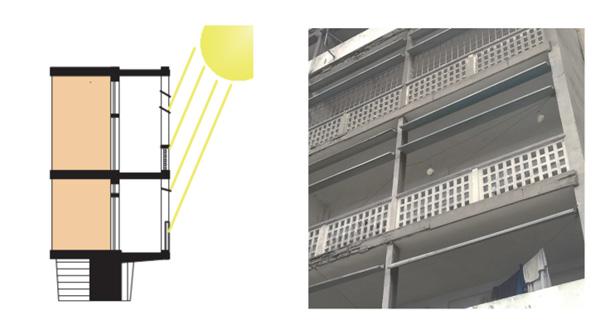

After looking into all three tropical design cases, the following design considerations can be observed across the scope:
1. Site Orientation: the building orientation is important. As mentioned in Indian cases, most of the sun would be on the East and west sides, so blocking that sun will help reduce warmth in the building, which could be using louvers, double-sided glass, or a lower roof.
2. Sun Shading: the sun shading divided or measured plays a big role in the construction of buildings in tropical climate because most tropical countries cannot afford to pay for air conditioning, and sun shading allow the tropical breeze to come into the building.
Providing open spaces close to the roof or around the edges of the roof allows hot air to escape from the building.
4. Wall material and Construction: Material has a means to enhance the design of facilities if well used. While some materials can function well in countries like the United States, Tropical countries require very specific materials that will stop humidity from creating sanitary issues, especially since these countries’ budgets are tight.
6. Exterior spaces: Providing green spaces outside the building generates enough space for the air to flow from the outside in. In providing courtyard or garden spaces, we promote natural ventilation. A couple of climatical cases, for instance, in Congo, where they have an example of
7. Water Energy Efficiency: It rains about half of the year in tropical regions; thus, water circulation and usage must be taken into consideration for the efficiency of the building.
3. Natural Ventilation: Tropical climate provides a lot of vegetation, which cools the environment of countries within the tropics. Therefore, in tropical design, we have to consider having large windows and multiple points of entry for air to flow through the building.
5. Roof Design: using a pitched roof like the one seen in the Congolese cases allows the air to rise high above the people, which is an advantage for the building. Double-sided roofs also help reduce the amount of warmth in the building; the Cuban case is a great example of that.
The above architectural observations were made in response to tropical climates in India, Cuba, and Congo. The tropical climate presents elements such as solar radiation, temperatures, relative humidity, evaporation, wind, and precipitation different from other regions that have been taken into consideration.
Though climate is the cause of most of the issues in Congolese hospitals, resolving the climate condition would tackle part of the problem in DR Congo’s healthcare design. Other issues like the size of the hospital, the lack of medical professionals in the country, the patient’s ability to heal faster, and the functionality aspect of the hospital have not been addressed entirely. We have addressed the context and the Tropical climate condition that causes some of the hospital’s sanitary conditions.
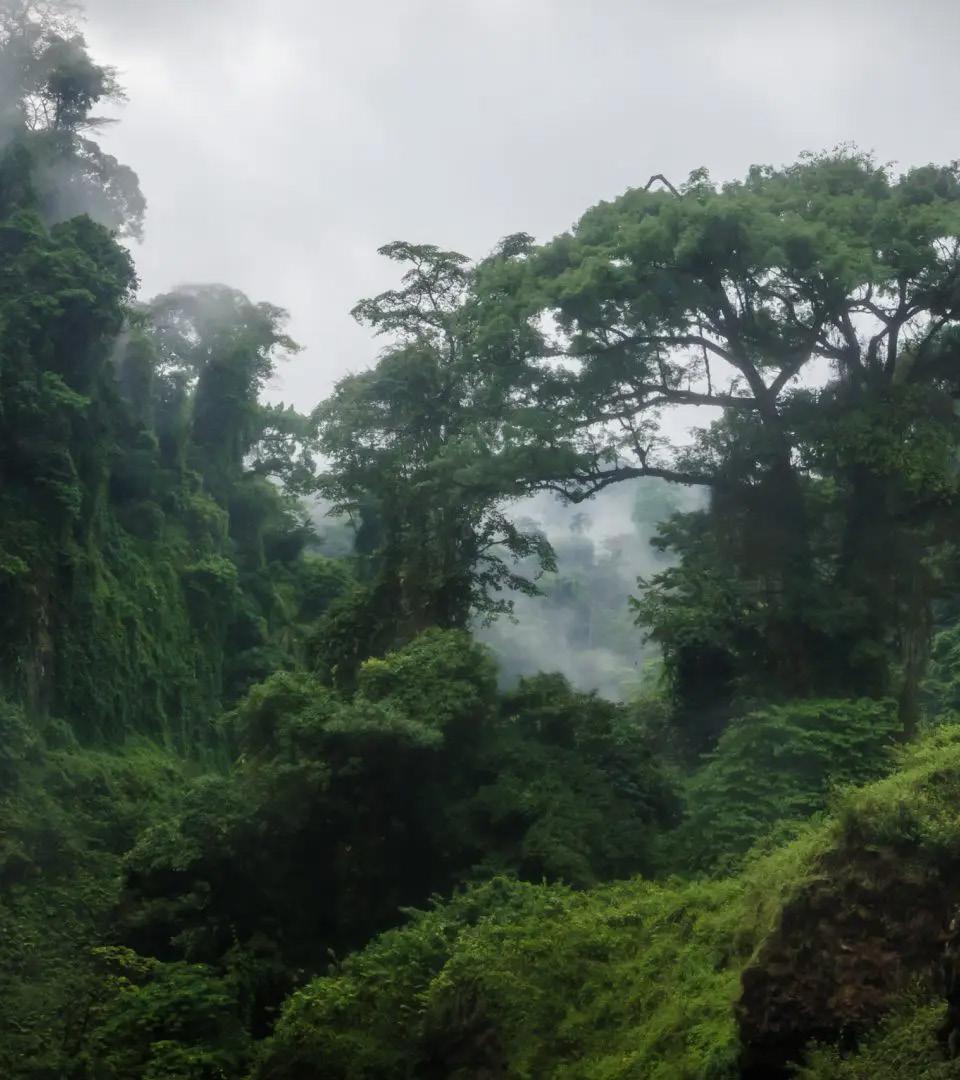
However, we have yet to address the overall experience of the hand users, which are the patients and the medical or hospital staff.

To promote a cohesive healing environment for the patient and for the staff to operate effectively, we need to have a good understanding of what a wellexecuted healthcare model looks like. First of all, let’s define what a well-executed healthcare model means. A well-executed healthcare model will demonstrate a high level of environmental consideration as it relates to the site and the hand users. Additionally,it will provide a high level of performance in healing the patients and easing the staff’s mobility of action.
Given that the desired healthcare model is acknowledged, we determine through multiple academic articles and journals that the United States of America, Germany, Canada, France, and Sweden host some of the best hospitals design-wise and performance-wise.

Type: It is a general medical and surgical facility (Teaching Hospital)
Size: 11.6 million square feet of Mayo
Clinic building space
Cost: 13 million
Program Description: Mayo has 2000 + hospital beds and 120+ Operating rooms. They have an emergency department, trauma center, children’s hospital, and pediatrics.
Completed: 1889 and the new building in 1996
Climatical Zone: Humid Continental
Medical Staff:
• 2500+ Physicians and Scientists
• 33000 + Allied health staf Services offered:
• Intensive care units
• Cardiac treatment
• Emergency Department, a Trauma Center,
• Epilepsy Monitoring Unit
• Neonatal intensive care.
• Mayo Psychiatry and Psychology Treatment Center
• Neurosurgery
• Rehabilitation units
• Research laboratories
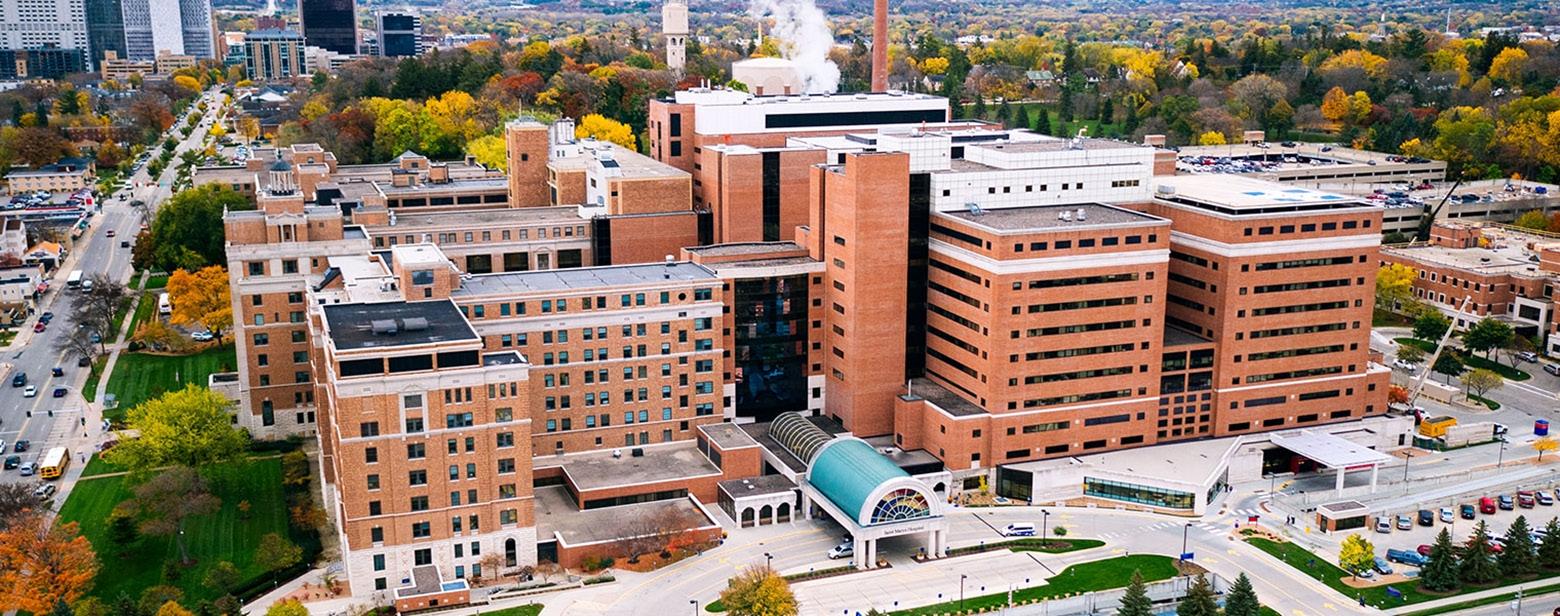
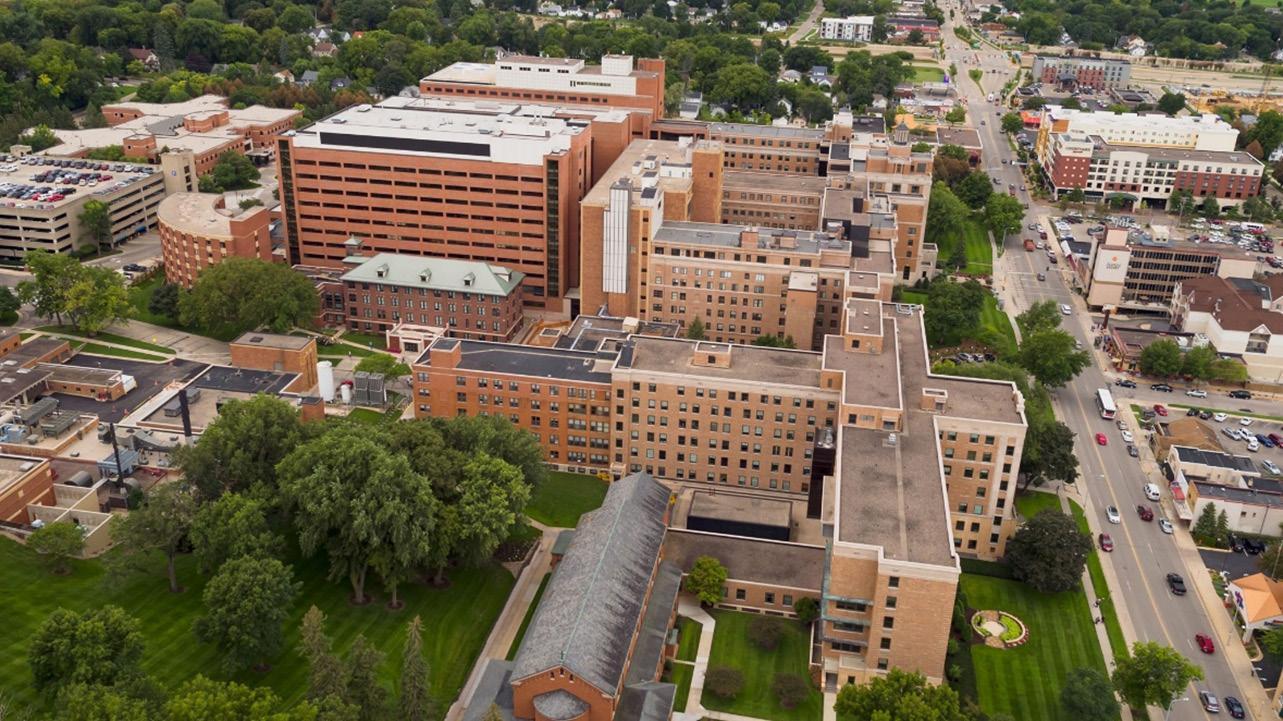
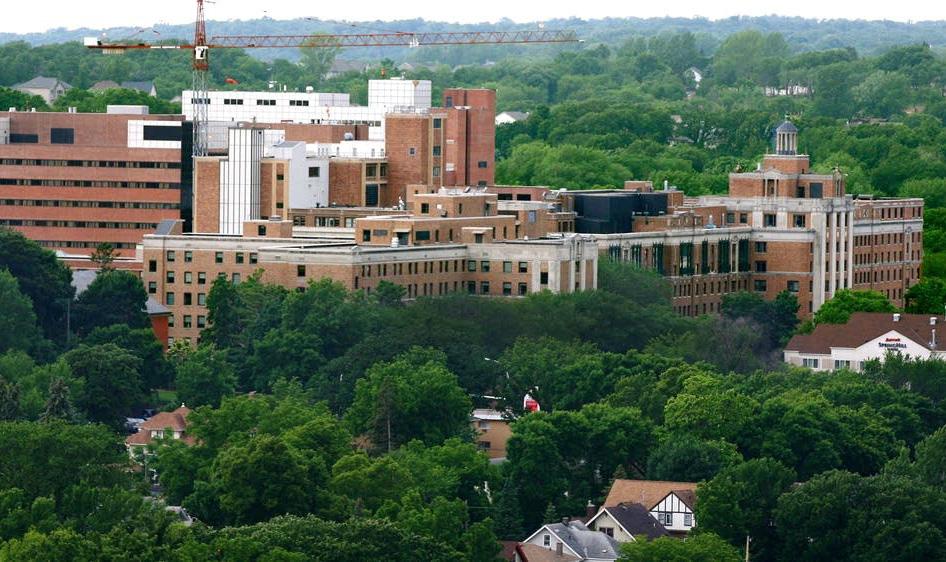
All the buildings are connected by an underground subway to get around no matter what the season. The subways are a response to climate considerations. The subways allow the patient and the doctors to circulate even during cold climates. We can observe in Figure 20 that the buildings are segmented to allow airflow. The Hospital also uses bridges between buildings to minimize outside circulation as much as possible.
There is vegetation in between buildings that allows the natural environment to interact with the building and the patient. Through the pocket of windows, patients have a direct view of the natural space outside the building. The hospital also has a Shuttle system that eases circulation from one department to the other. Though is very linear, Mayo Clinic accomplishes what it was designed for.
Brick is the main material used for this hospital, which reflects on the surroundings that have about the same material. In Figure 22, we have a better view of the gardens surrounding the hospital.
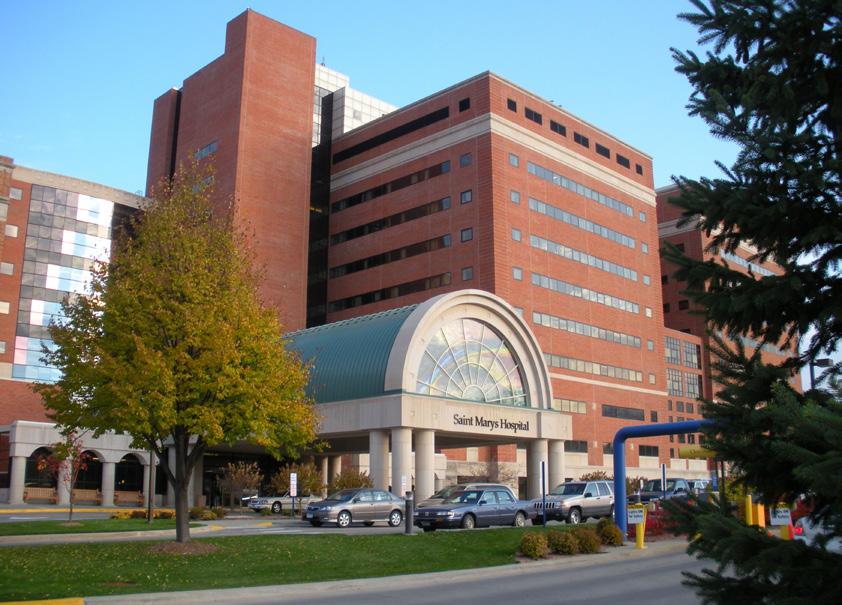
II: Charite Comprehensive Center, Berlin. Germany

Charite Hospital was at first a military hospital where physicians and nurses were trained for military conditions. However, this hospital has been turned into a university hospital as of today.
Type: University Hospital
Program Description: 3011 Beds and 130000 patients per year Completed: 1710
Climatical Zone: temperate climate Medical Staff: the following staff is an ensemble of four locations of the same hospital across Germany.
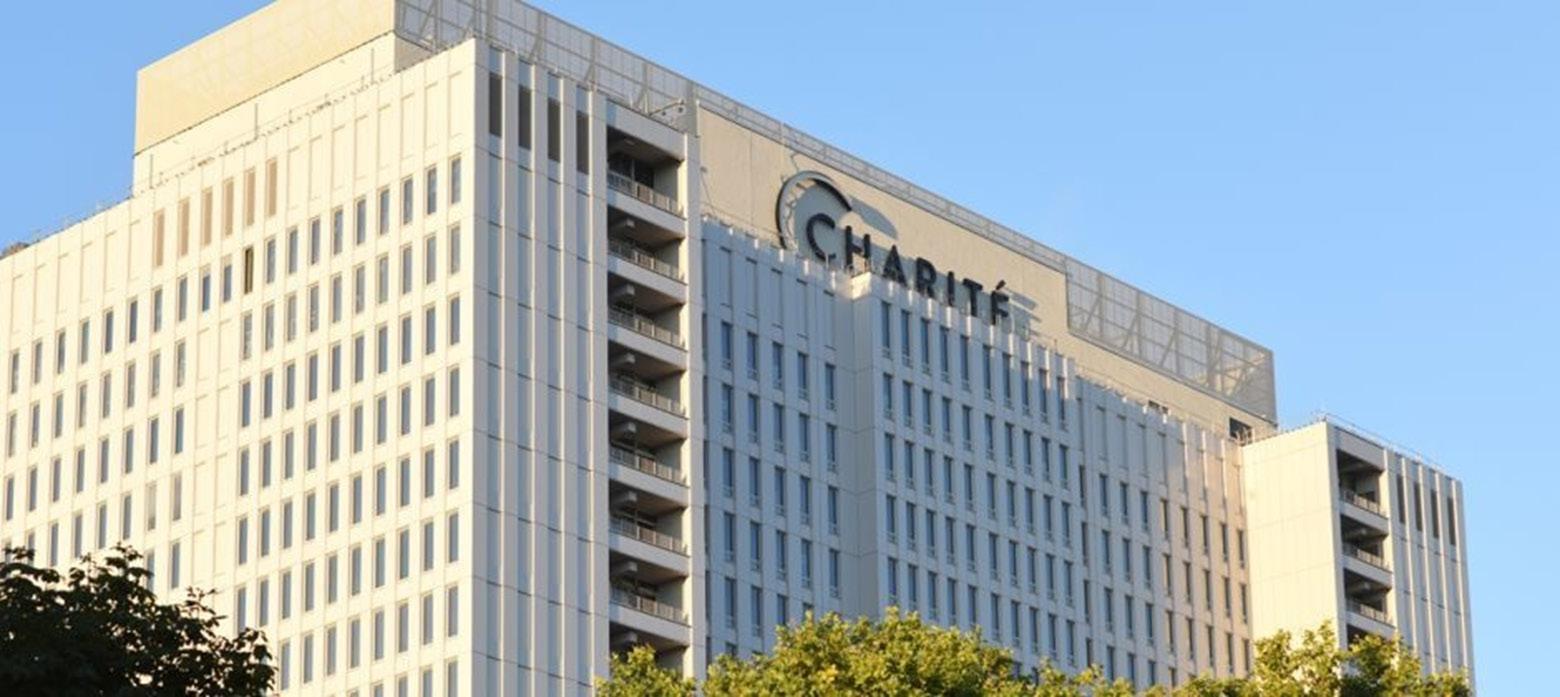
- 4500 Doctors working at 100 clinics and institutes.
- 300 professors are contributing their knowledge and experience.
- 4500 + Nursing and staff
- 600 operations are performed every month.
- 15 fulling digital operating rooms
Charite is unique in the sense that it is a very tall building in the middle of the city without a lot of opportunity for natural interaction. However, they use other techniques to enhance the patient’s experience. One cool idea that they have in their bedroom to compensate for natural plants is lighted ceilings. Figure 24 demonstrates how this hospital uses a colorful ceiling to heal patients.
They specifically use rooms with special colors and illuminated machines to promote the healing process. Therefore, aside from the window that brings the air from the outside in, Charite uses light effects to create an environment that helps the patient to heal faster.
. Figure 23 shows the exterior façade, and within pockets of moments, there is an array of outside balconies that provide a space for passion to connect and create a sense of community. The balconies also offset views into the buildings surrounding the area, and they are beautiful. Charite Hospital is very tall compared to the other surrounding buildings, which are about two to four stories. Therefore, the views into the city from each window of the building add a plus to the patient and doctor’s experience.
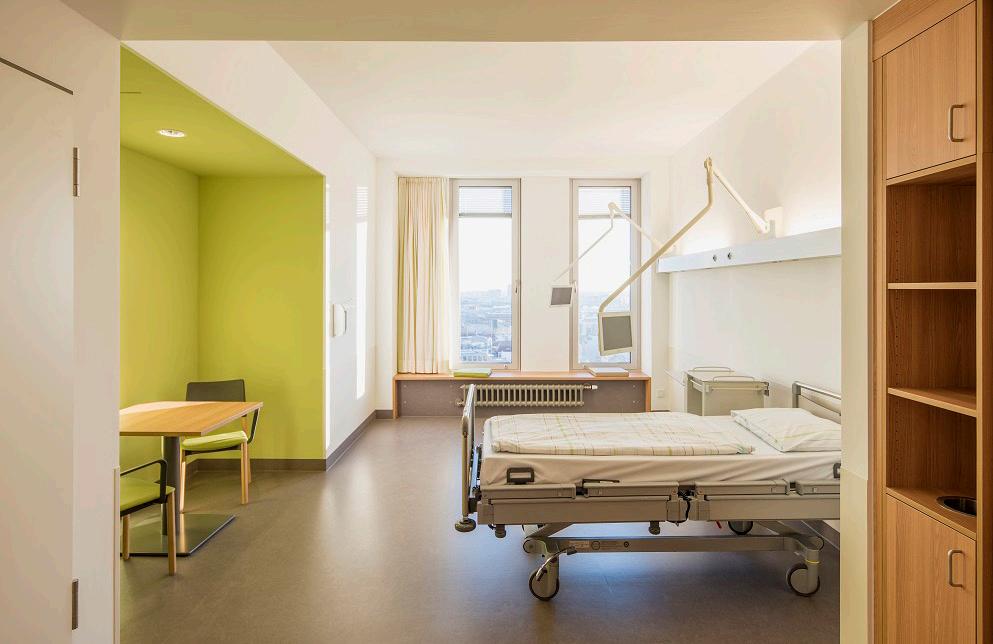
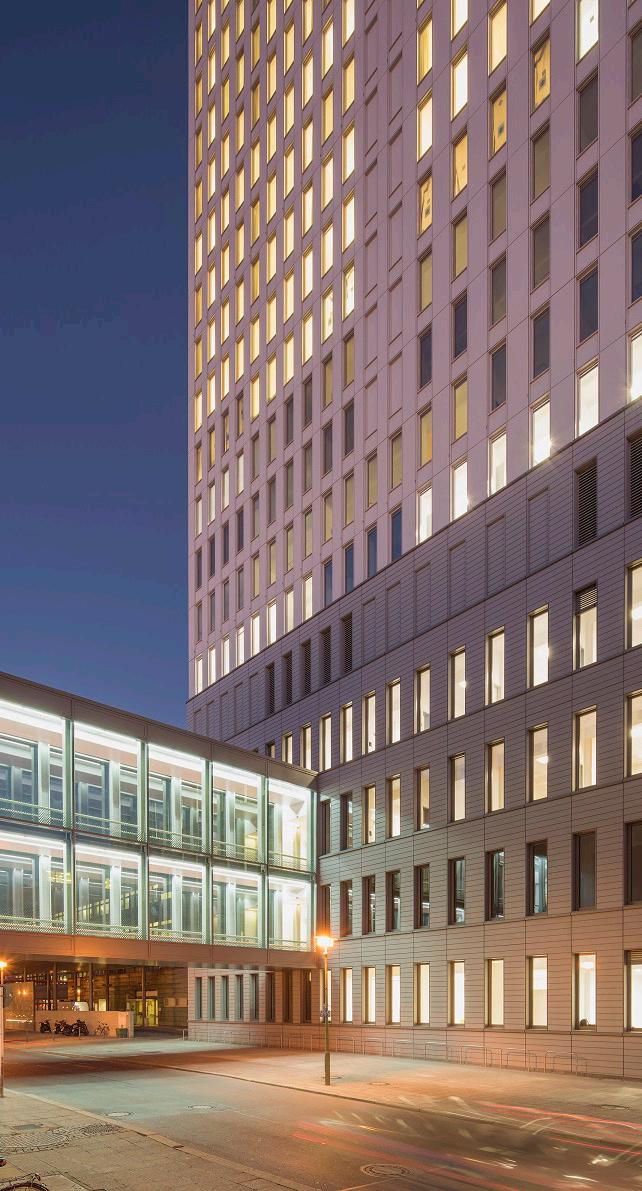
III: University Health Network/ Toronto General, Toronto. Canada

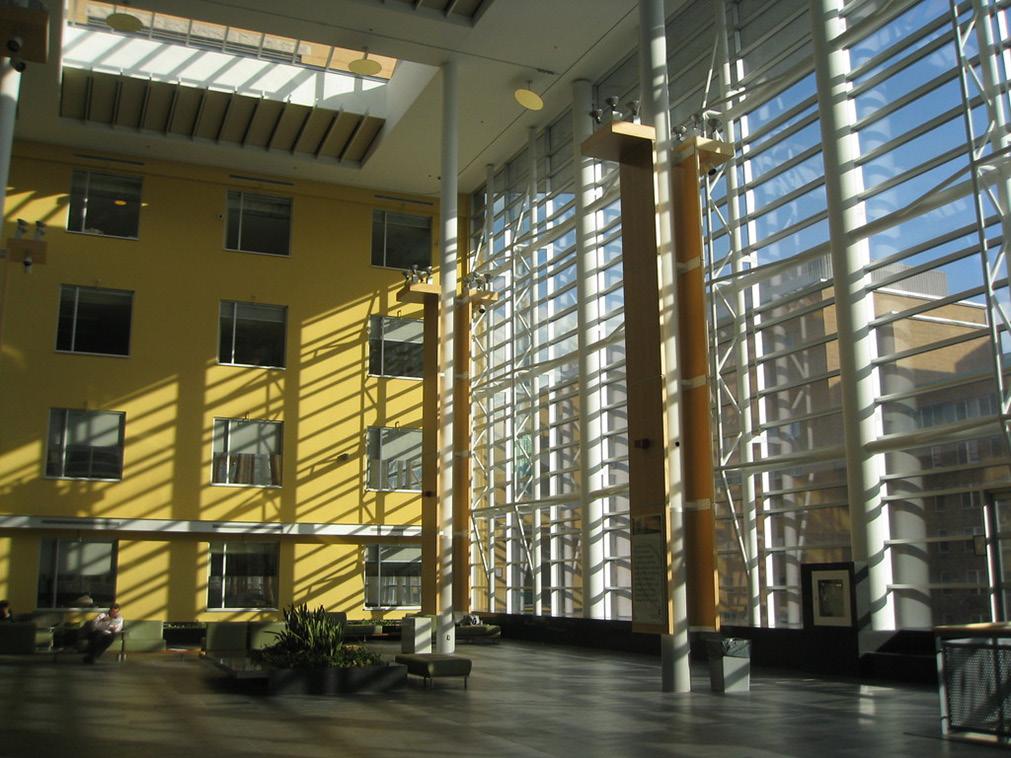
Type : Teaching Hospital
Program Description: 471 number of beds
Completed: 1829
Climatical Zone: Continental Climate
The use of Natural Light in Toronto Hospital is one of the most striking elements. Toronto has two glass façades that let light into the building and a couple’s skylight.
The hospital has a large community and circulation space at the entrance of the building, which promotes community gathering. There is a small park at the back of the building, which brings a little bit of greenery and another opportunity to engage with the community. This building is in the middle of the city, so it is interesting to see how they manipulate materiality to allow the hospital to fit in.
The building introduces louvers as a mechanism to control the infiltration of natural light, which reduces the need for artificial light in the building and provides the patient with a view toward the outside. Figure 26 starts showing how the building interacts with the outside.
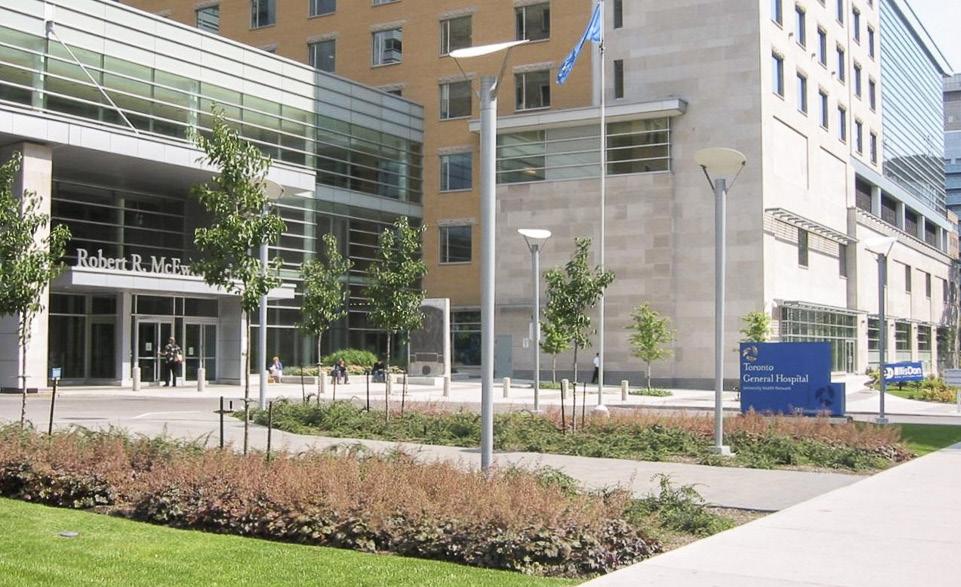
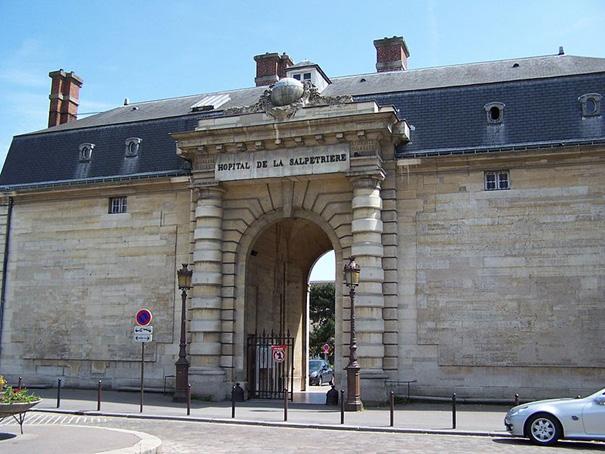

Type: University Hospital
Size: 3.552.000.000 sq feet
Cost: 8.000.000
Program Description: Pitier Salpetiere has about 90 buildings in total, with 77 services divided into 10.
Completed: 1964
Climatical Zone: Continental Climate
Design Move:
Pitier Salpetiere is very unique in its own way because it really embraces French architecture.
From materiality to the concept of a French palace, this hospital link clearly its design to Paris, France. One thing that makes this hospital special is the garden surrounding the area, which can be observed in most French gardens from back then, like the Garden of the Palace of Versailles. Thus, greenery is a huge part of this design, which creates good airflow within the building. Natural ventilation is a huge aspect of the hospital design, given the number of natural elements that surround the building. . Figure 28 shows a catholic church that a patient or doctor could go to.
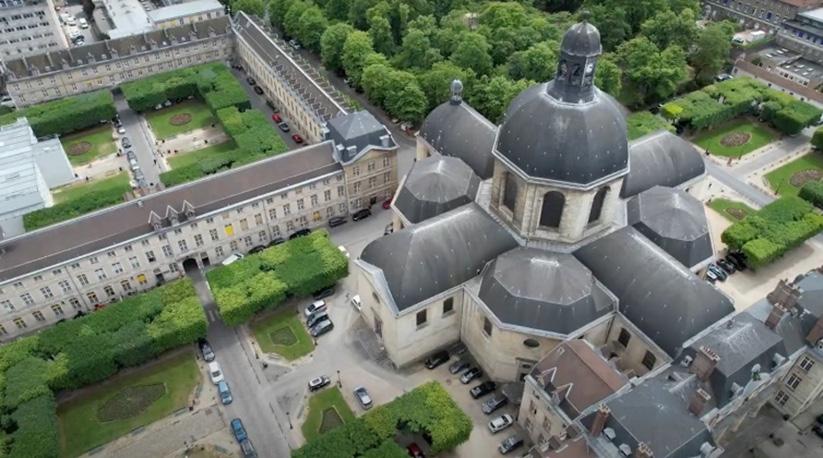
. I think that it is a nice move to have the church because Christianity is a big part of French culture. The gardens provide sitting areas and walking space for the patient to enjoy and a beautiful view of natural elements, which are favorable for the patient and the doctors.

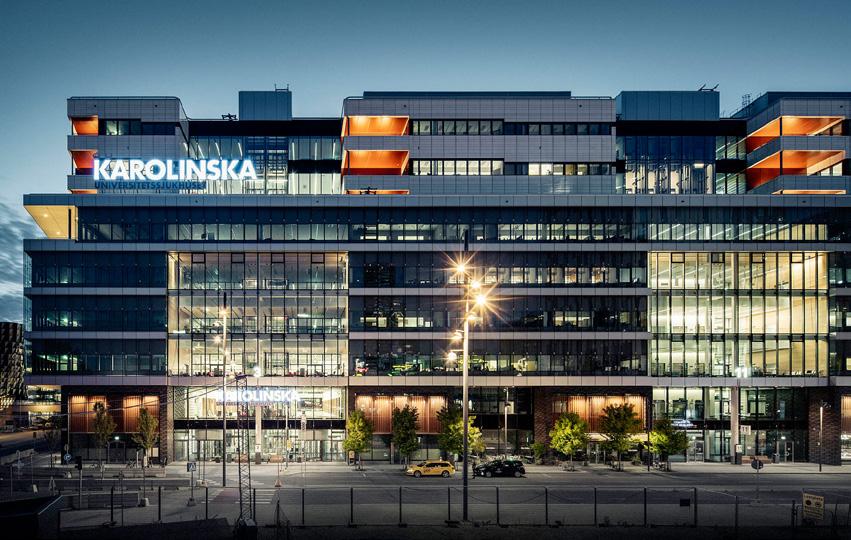
Type: University Hospital
Size : 330,000 sqm (9-12 storeys)
Cost: 16.2 bn SEK
Program Description: 630 inpatients and 100-day patients
Completed: 2017
Climatical Zone: Humid Continental
Medical Staff: The hospital has about 15,200 employees, with 32% of them being nurses, 19% assistant nurses, 17% biomedical analysts, 9 % other professional groups, 9% administrative staff, 4% health professionals, and 3% medical secretaries.
This hospital receives about 1.4 million patients visiting per year.
Area of Expertise:
• Cancer
• Children /Astrid Lindgren Children’s Hospital
• Emergency and Reparative Medicine
• Heart & Vascular and Neuro
• Inflammation and Aging
• Women’s Health and Allied Health Professionals


Karolinska is a very unique building, which is the best-case study to end with because it has more information and incorporates multiple other points that we already mentioned in its own way. The first element that Karolinska uses is a double skin that we can observe on the façade of Figure 30. The double façade allows the flow of air into the building and reduces sun glare. Karolinska also uses an atrium in between buildings to create community space and let natural light into the building.
The design of this hospital also connects to the biophilia to enhance green outside spaces for the patient.
In Figure 31, we start seeing how this building addresses circulation using bridges in between buildings to help circulate from one building to the other easily. Moreover, the bridges connect the higher level with each other, which facilitates the circulation on the higher floor to the building next to it. . From Figure 33, we can see how the hospital started using colors,
Karolinska’s HVAC system is exponential, as you can see in Figure 32, and it is necessary to have such HVAC in order to produce appropriate ventilation within the building and control the temperature of operating rooms or other that needs specific attention.
Additionallythe architect used color to differentiate one department from the other and make it easier for the doctor and the patient to find their way.
Daylight: the use of daylight within the building has been observed across the cases that we mentioned previously. Mayo Clinic uses glass walls to let light into the building in community space. The location of the Mayo Clinic pushes them to take that approach. In the case of Karolinska, it is a little more obvious because they use two atriums to let light into the building and provide a naturally light space for their patient. UHN, on the other hand, had a sunroom for the lobby/ community space for patients to bring in a lot of light.
Congo mentioned that ventilation was a big issue, especially because it is a double-sided knife; it could cause sickness if not controlled properly. Thus, ventilation control is very important in Hospital design for the patient’s healing.
Airflow: this element is also seen across the board. It could be through windows, skylights, or just the gap in between the buildings, creating a path for airflow into the building.
Site-appropriate moves within the program: Each hospital has a part of its program dedicated to the site.
There is a triumphal arch at the entrance of the building, making the entrance obvious.
Community space: Open community spaces are incorporated throughout all the hospitals studied. Karolinska has balconies around the atriums, which help with circulation and integrate some community space that allows patients and family members to interact.
Integration of natural elements: We can observe that there are trees around the case hospital, which offer fresh hair and overcast shadows around the hospital.
Ventilation: Ventilation is essential for hospitals, especially because some of the hospital rooms need very controlled ventilation. Karolinska probably has more information on their ventilation system than all three hospitals.
Mayo has an underground circulation that allows doctors and patients to circulate well from one department to the other, even when it rains or snows outside, given the site condition. Pitier saltpeter architecture reflects French architecture, looking castlelike.
Landscape around the building: Pitier Hospital integrated landscaping very well to the point that patients circulate outside and integrate with nature. That was proven to have helped patients heal faster.
View to natural elements: The windows and wall glasses allow air to come in and for patients to have a view of the outside. The use of color delineates the different parts of the program: Karolinska uses color to recognize the department or type of room. In some cases, this practice makes it visually effective for doctors to recognize where to bring the patient faster. Moreover, it is also easy for patients to remember their room. Moreover, there is also a Sustainability aspect to consider:
We first started by defining the issues of healthcare in DRC hospitals. Some of the issues are sanitary and humid conditions, lack of doctors, and inappropriate building programs and design, which result in the discomfort of the patient and difficulty for doctors to operate in the hospital fully. Then we moved to search for the cause of humidity and sanitary issues, which is the Tropical climate. We discover that Tropical countries get rain for more than half of the year.
a study was conducted on the top five healthcare countries around the world. The finally observations made was based on the hospital cases researched on, and couple ways that other countries approach climate conditions and patient satisfaction were find. Thus, from the research, we drew a set of principles that will help shape the new DRC healthcare model that proposed. Next;”Method.”
• Preferred hybrid vehicle Parking
• Water efficiency
• Energy efficiency
• Photovoltaics
• Daylighting
• Renewable energy
• Enhanced indoor air quality.
Tropical climates was discovered to come with a lot of humidity, especially in tropical rainforest regions like the Democratic Republic of Congo. After that, we move into looking at how successful healthcare models tackle the aspect of context and program. in the top five healthcare countries around the world.
This thesis plans to engage the discourse through seven principles, which were identified through the research phase. Each of the seven principles has a different level of priority, which allows the architecture to uniquely draw itself into its environment later on in the project. The seven principles are as follows: natural ventilation, natural light, energy efficiency, landscape, community space, water usage, and regional material.
Next, it was established that natural light is connected to the issues that healthcare facilities in Congo experience. Another priority for the healthcare facility in the Congo is energy; DRC is rich in natural energy, considering the presence of an equatorial/ tropical climate. Nonetheless, the natural energy in Congo is not being harvested enough. Therefore, producing energy-efficient buildings is important as well.
Once the seven principles are acknowledged, it is easier to segment each of them and provide details on how each of the principles responds to the needs of Congolese healthcare architecture directly:
In the research phase, we came across the D.R. Congo government report on healthcare facilities’ current conditions and needs. The document emphasizes that ventilation is a top issue that architects should further examine.
The previous observations are primary observations that need to be addressed with more emphasis, but four other observations have to be resolved to a second degree. Nonetheless, they should be considered carefully as well: Landscape, Community space, water usage, and the use of regional material.

First, let’s provide more detail on how natural ventilation responds to the tropical climate in the DRC. The Democratic Republic of Congo provides great conditions for thermal comfort, which allows most buildings to stand without air conditioning systems. Therefore, most architects design with natural ventilation in mind because it is a large component of the ventilation system in the building.
to ventilate the building and improve air quality. Healthcare facilities require ventilation to be controlled as much as possible to take advantage of the thermal comfort brought by tropical equatorial climates rather than becoming the issue.
As mentioned in the research phase, Congo possesses a lot of resources that are not fully used as of today, and electricity is one of them. The DRC does not provide electricity
There are multiple ways of providing natural light, but only specific ones fit within the tropical equatorial climate demand. The goal is to use natural light as primordial light in healthcare facilities and use the warmth of the sunlight as a tool to reduce humidity caused by the climate of Congo.
Both natural light and natural ventilation contribute to the building’s energy efficiency system. However, given the type of facility we are designing,
One way the architect responded to the climate condition was by installing air vents that allowed natural air to enter the building. However, there are different types of air vents that will be tested through the implementation of the thesis to determine which air vents allow natural ventilation
24/7 to its people. Thus, natural light becomes an important element because, most of the time, it is the first source of light that the users have access to. Therefore, minimizing the use of artificial light and providing natural light across the whole facility is primordial.
Therefore, as architects, we need to plan for the building to produce energy without having to depend on outside sources. Some energy sources that should be greatly considered are solar panels, which would be a great addition to a hospital that needs reliable 24/7 energy.
Other sources of energy could be water recollection. In the tropical climate, it rains about half of the year in most areas and 70% of the year in Tropical equatorial rain forests, which is the case in DRC. Therefore, taking advantage of the climatical conditions to bring in water for the facility to use strengthens the building overall and tremendously reduces the consumption of outside sources of energy, allowing the building to sustain itself, which is the objective.
Landscape is an element that must be carefully examined because the savanna present in DRC is also one cause of diseases in Congo. Vegetation in Equatorial and Tropical climates come with mosquitoes and other insects that must be kept away from the hospital to prevent the patient from being sick again; thus, carefully controlling the flora and fauna of the tropical climate is essential. The consideration of landscape as a way to heal and not as a way to propagate diseases would be the aim of this design principle.
The climatic conditions of DR Congo provide a large region with a lot of vegetation to take into consideration. So, the use of landscape in the Congo region is of great importance.
African families often work in packs from close family members to extended family and beyond. Therefore, in Congolese culture, community spaces require a lot of space because they are often used.
In the DRC healthcare system, the number of visitors is not limited, so it is easy to find patients with seven or more visitors in their rooms. Family support greatly contributes to the healing process, as discovered in the research process; therefore, while designing for Congolese patients, architects must provide and plan for the large group of visitors that populate Congolese hospitals.
Another type of communication that has to be considered is the communication among hospital staff themselves or with the patient, or communication among patients themselves—all these types of communication shape circulation and other elements of the hospital architecture design.
Water is one of the leading factors of ineffectual diseases present in the DRC. Considering the size of the Congo, it is hard to get potable water to every part of the country. Therefore, some zones in the DR Congo do not have access to potable water and end up drinking water that they should not drink. Water usage becomes indispensable to the set of principles that we produced,
The Democratic Republic of Congo has one of the richest soils in Africa, owning multiple mineral companies and multiple mineral resources. However, Congo exports most of its wealth to other countries, which benefits more than the people of Congo. Through the use of natural resources, the goal is to reduce the building cost overall and culturally enrich the design of Congolese healthcare facilities.
In summary, after the research process, it was established that DRC Hospital needed improvement. Then, still, through the discourse, the tropical equatorial climate was identified as the leading factor of issues in Congolese healthcare architecture. By the end of the discourse, a couple of hospital precedent studies gave us a good base of how to begin addressing the issues in tropical healthcare architecture from the architect’s standpoint. In this method, the position taken through the thesis has been clarified and the resulting principles have been clearly defined.
because it gives the architect space to provide potable water to the community that the hospital will serve and design a safe and healthy environment for the patient to recover and the staff to work in.
Moreover, natural materials have been sustained through the weather conditions of the Congo and thus are more suitable for architectural edifices in the Democratic Republic of Congo.
Next are the survey and statistics deducted from the survey that are being referred to throughout the research portion and used to define the means and method of the thesis.
1. What is your name and title (doctor, nurse, etc.)
2. What is your specialty if you had one?
3. How many hospitals have you worked for?
4. How long have you been working in the medical field?
5. What do you think about Congolese hospitals? (Are they perfect or do they need to be improved?).
6. What areas of improvement should Congolese hospitals address?
8. The following hospitals are types of hospitals that you can find worldwide:
- Women’s hospitals
-Children’s hospitals
-Heart hospitals
-Oncology hospitals.
-Psychiatric hospitals.
-Trauma centres. (These hospitals are for injured patients who have experienced some form of trauma.).
-Cancer treatment centers.
-Teaching hospital (this is a general hospital affiliated with a school, and doctors teach students to read in the field rather than in class).
10. In your opinion, what aspects of the hospital helped the patient to heal more quickly (specifically architecturally speaking: perhaps how the room was organized or designated)?
11. In your opinion, what has helped you do your job better? This could be having a private or shared office, or maybe the patient’s room was closer to you or anything, shared below.
12. In your opinion, what was the thing the patient most complained about in the hospital other than being sick?
7. General hospitals in the United States treat the following services: medicine, surgery, gynecology, obstetrics, pediatrics, eye, ENT, dental, orthopedics, neurology, cardiology, psychiatry, etc. What type of hospital do you think Congolese hospitals need the most?
-General Hospital (contains several specialties, but the educational aspect). In your opinion, what type of hospital do we need in Congo?)
9. In your opinion, what is the most deadly disease in the Congo?
13. in your opinion, what do architects or contractors forget to add to hospitals or on which they make the most mistakes?
14. What do you like about Congolese hospitals?
15. Do you think we should separate children and adults in a hospital, or does it not matter?
16. Other hospitals have different floors or neighborhoods for critical and non-critical patients; do you think that matters?
17. What should an architect keep in mind when designing a Congolese hospital?
18. What did you like the most in the hospitals where you work? (Congolese or not).
19. What area of medicine should be present in a Congolese hospital it could be surgery, pediatrics, or any other area?
20. Comment section

Below is couple statistics from the survey that can be referred to:
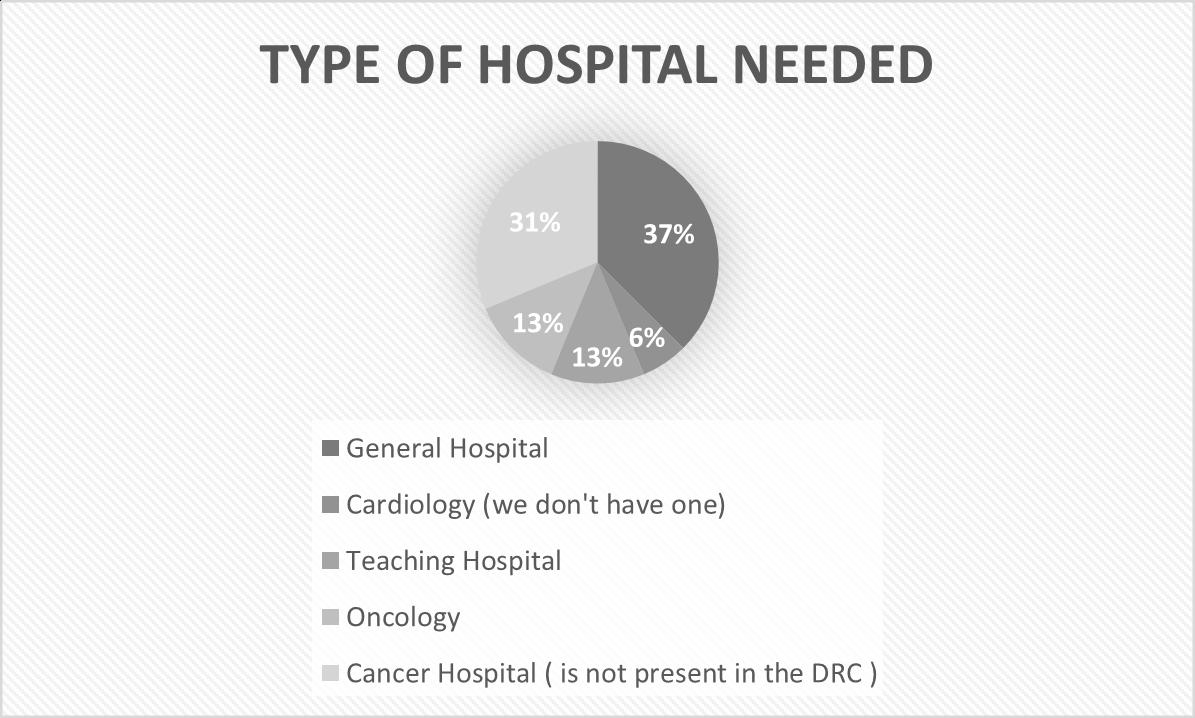

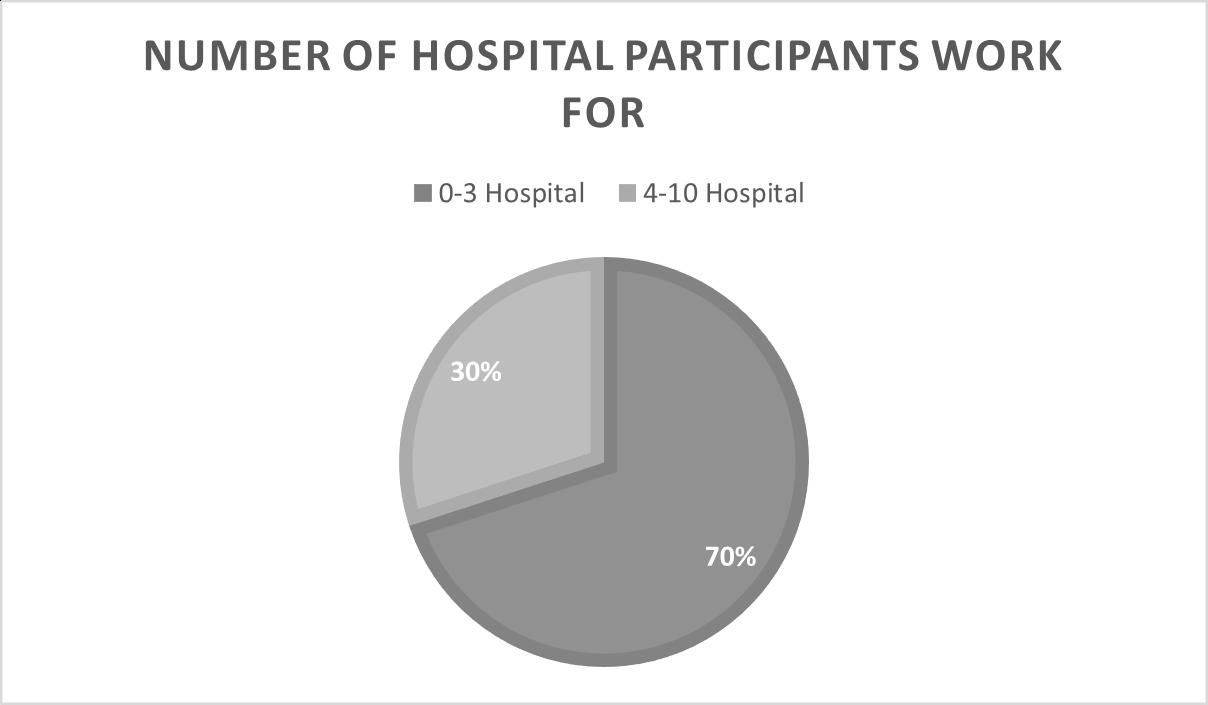
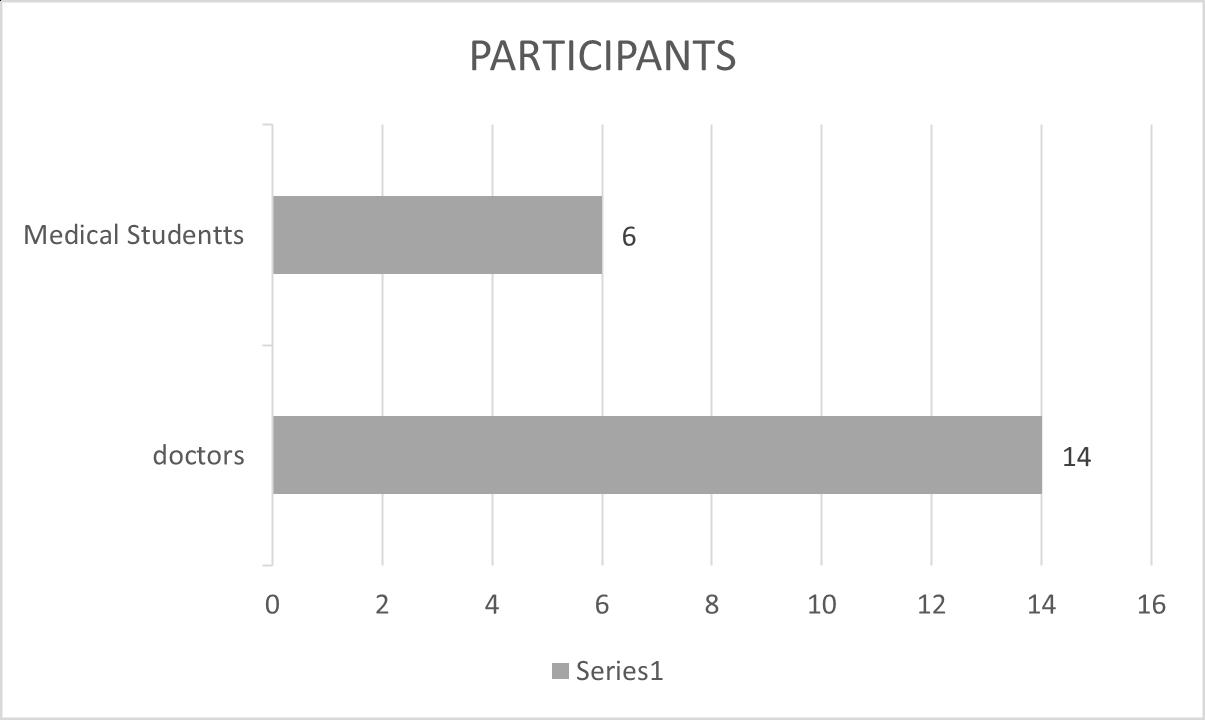



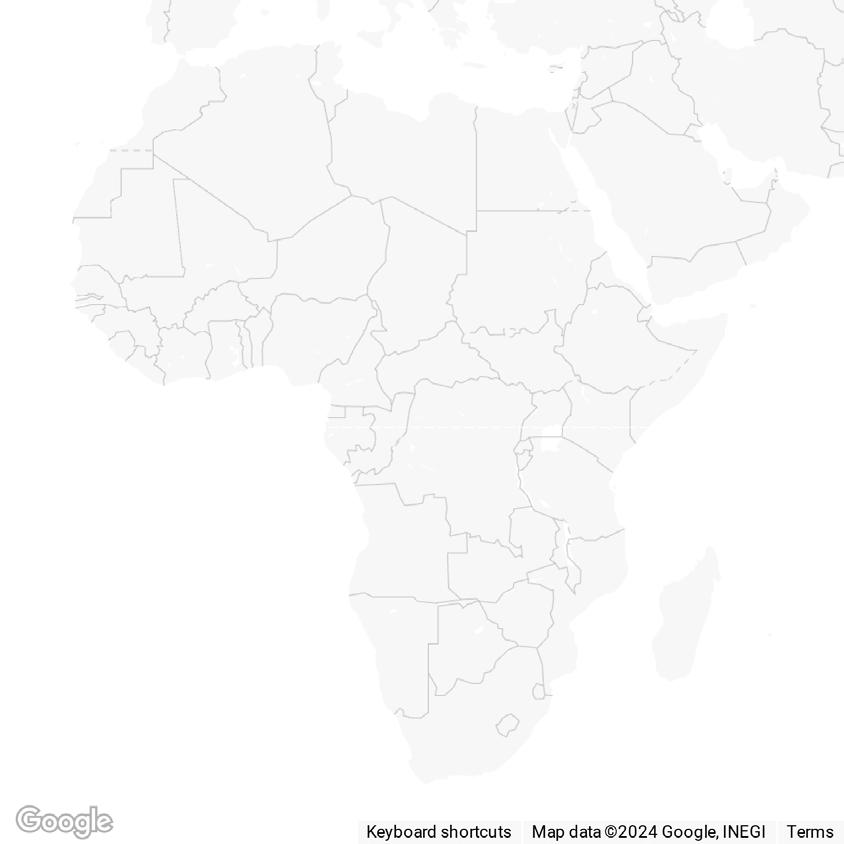
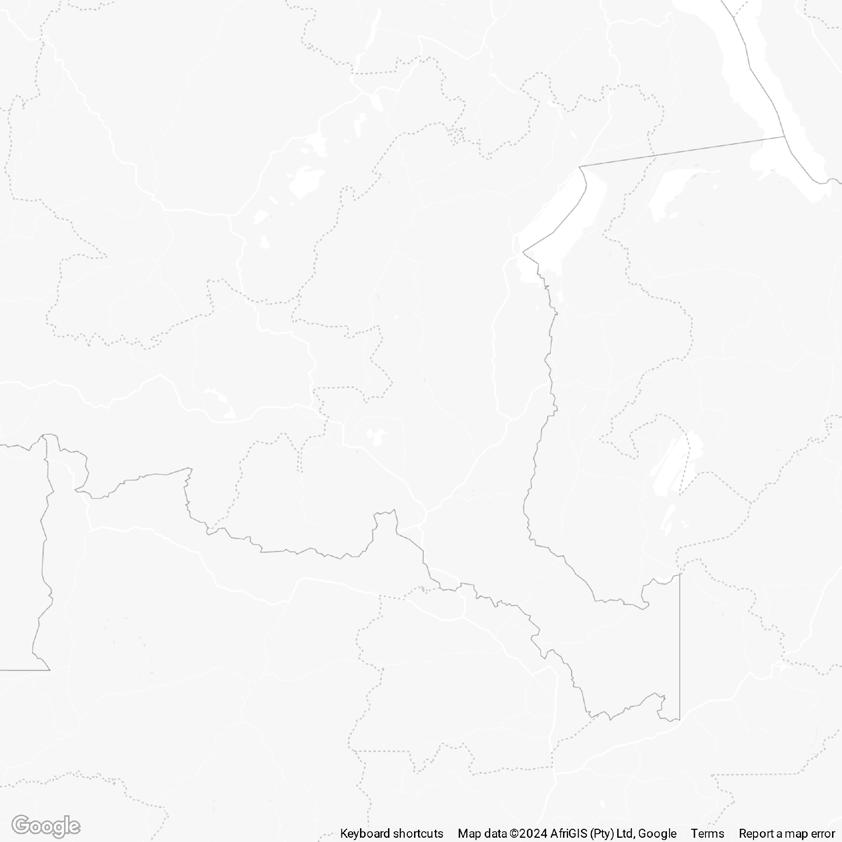

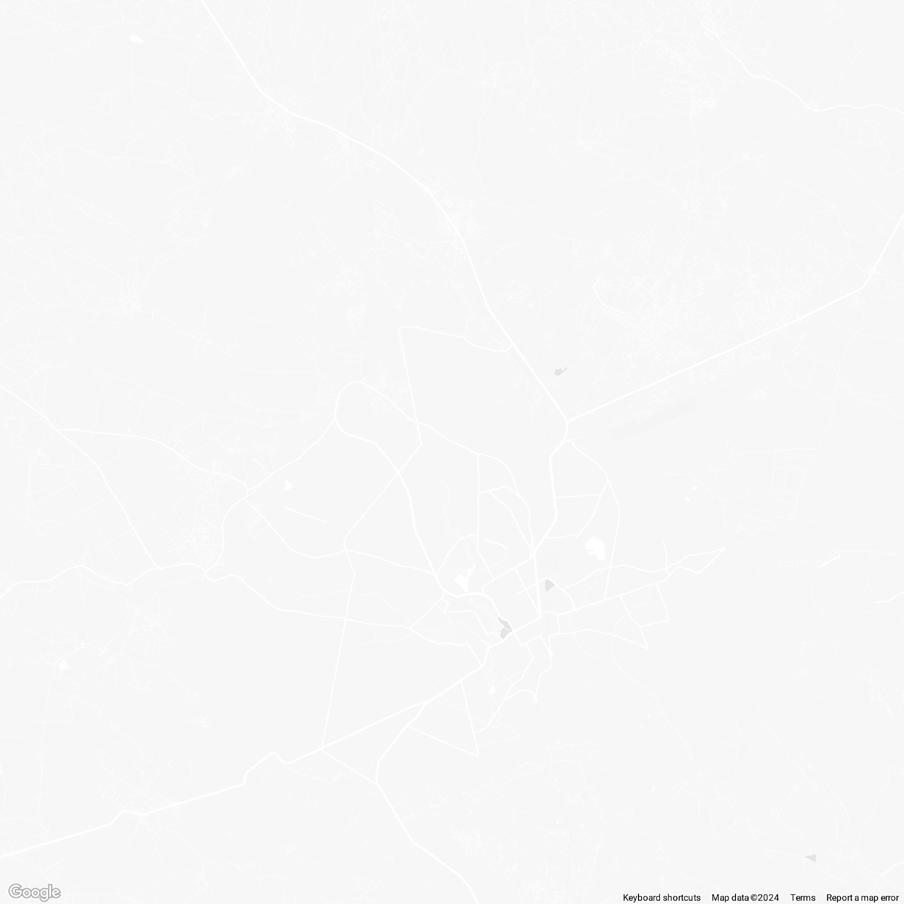

Continental Scale Provincial Scale City Scale
The site is located between Tumbwe and Lukuni. The site is alongside the new development of Lubumbashi. It is about twenty-five minutes away from Lubumbashi airport providing easy access for people outside the HautKatanga and inside Lubumbashi.
The site is about 96,875 sq feet each and we have two sites. The site dimensions are as follows: 492.126’ X 196.85’. The location chosen allows easy access, and construction considering that Lubumbashi is one of the richest cities in RDC.
747 km square : Superficie
1 786 397 hab. (2012): Population
2 391,43 hab./km square: Densité
UTC+02:00: Fuseau


Hospital Locations

















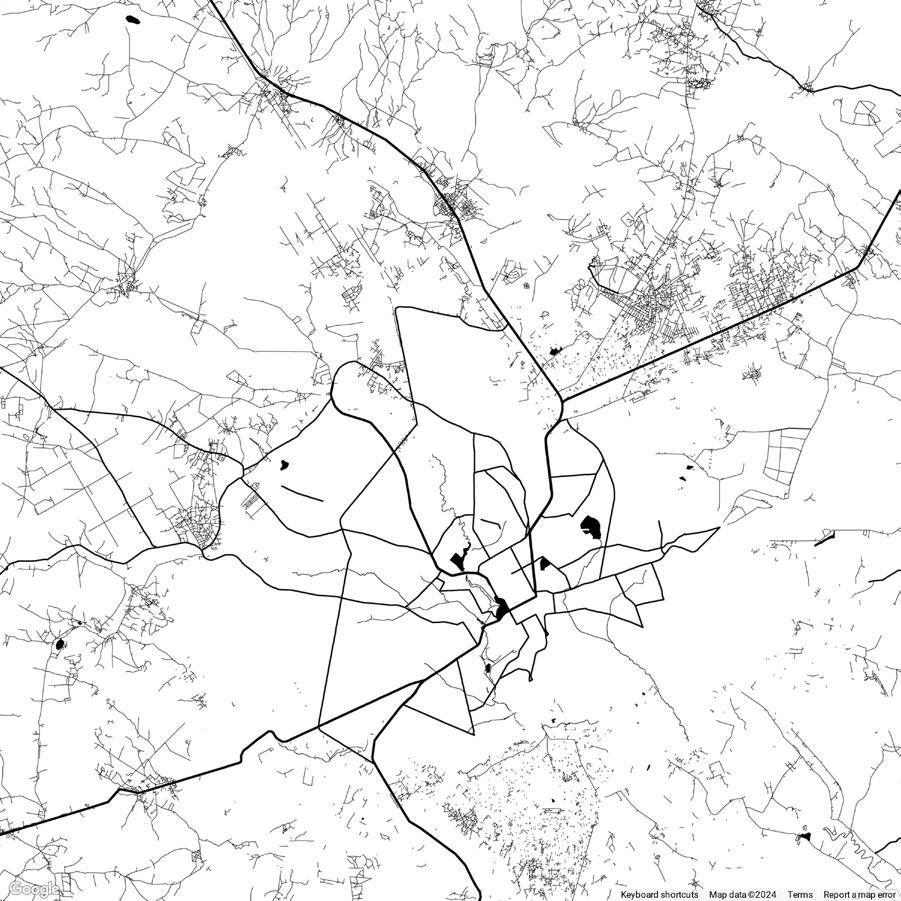
Connecting Road
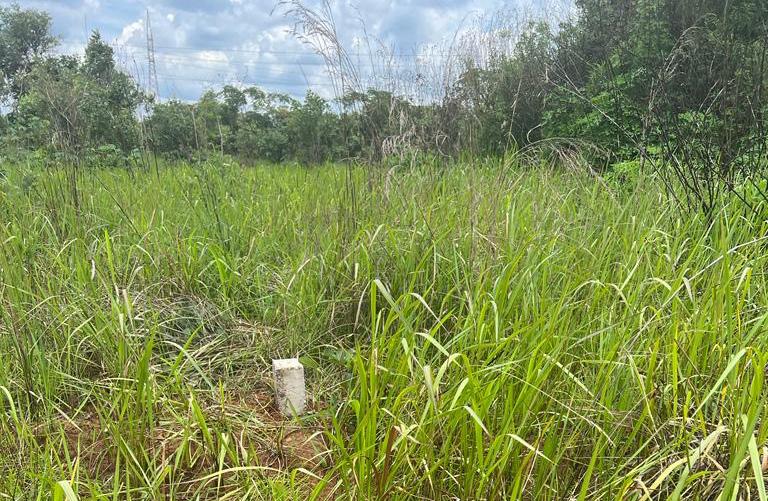
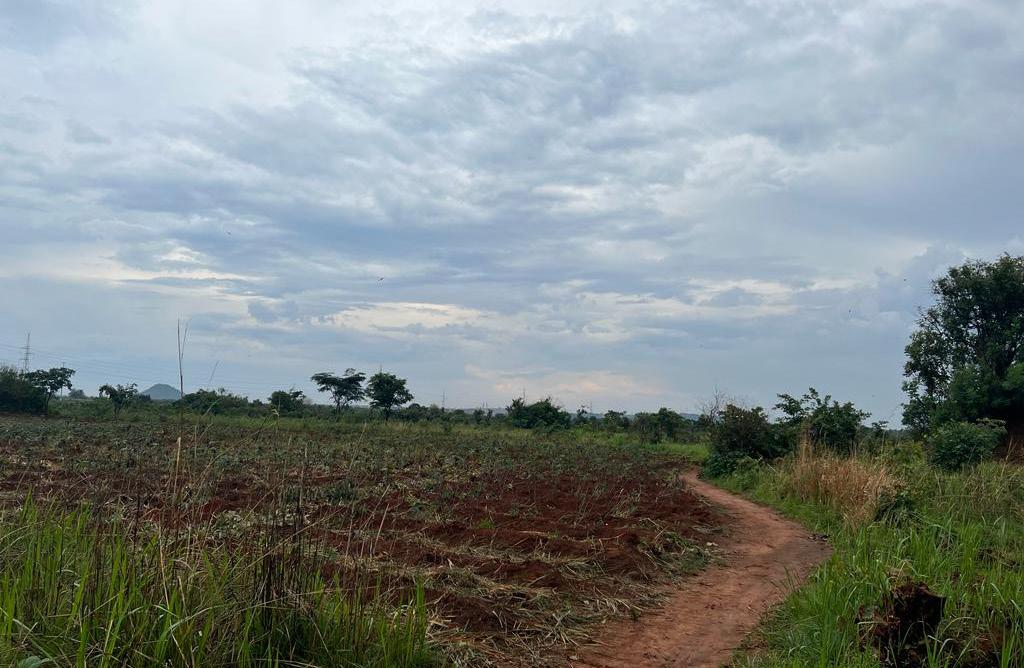
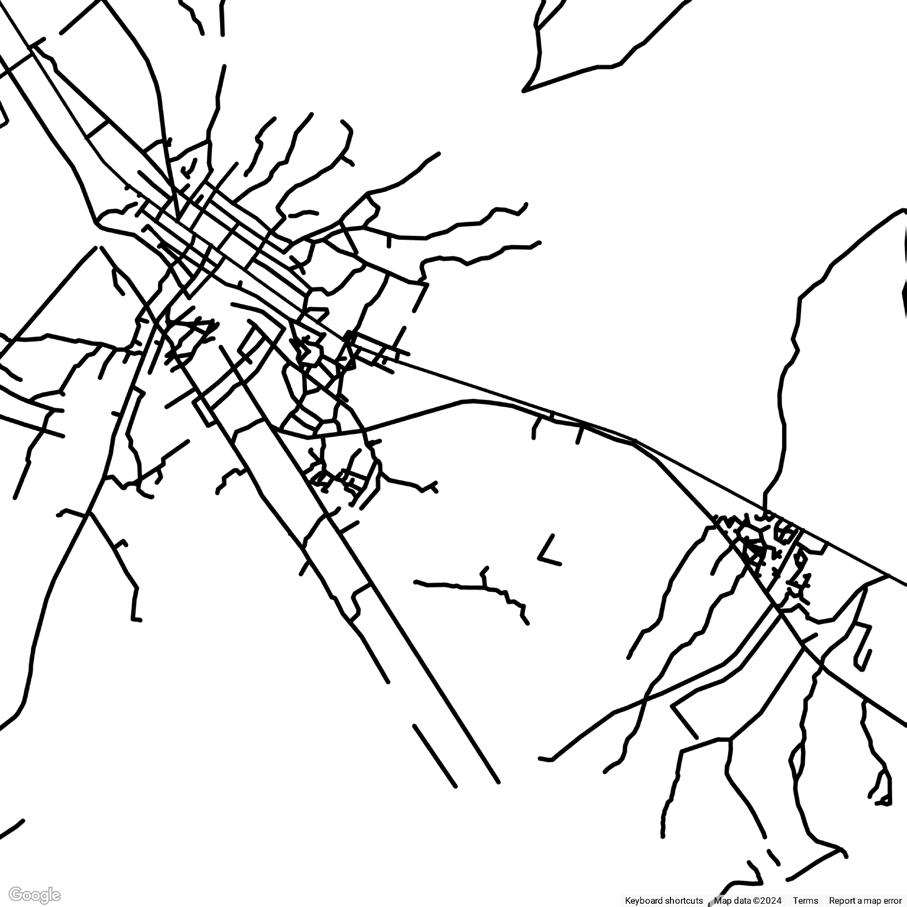
Major Access






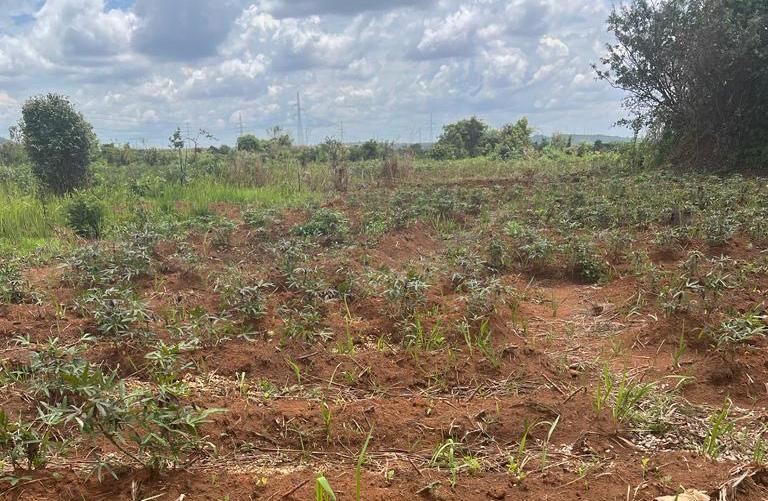

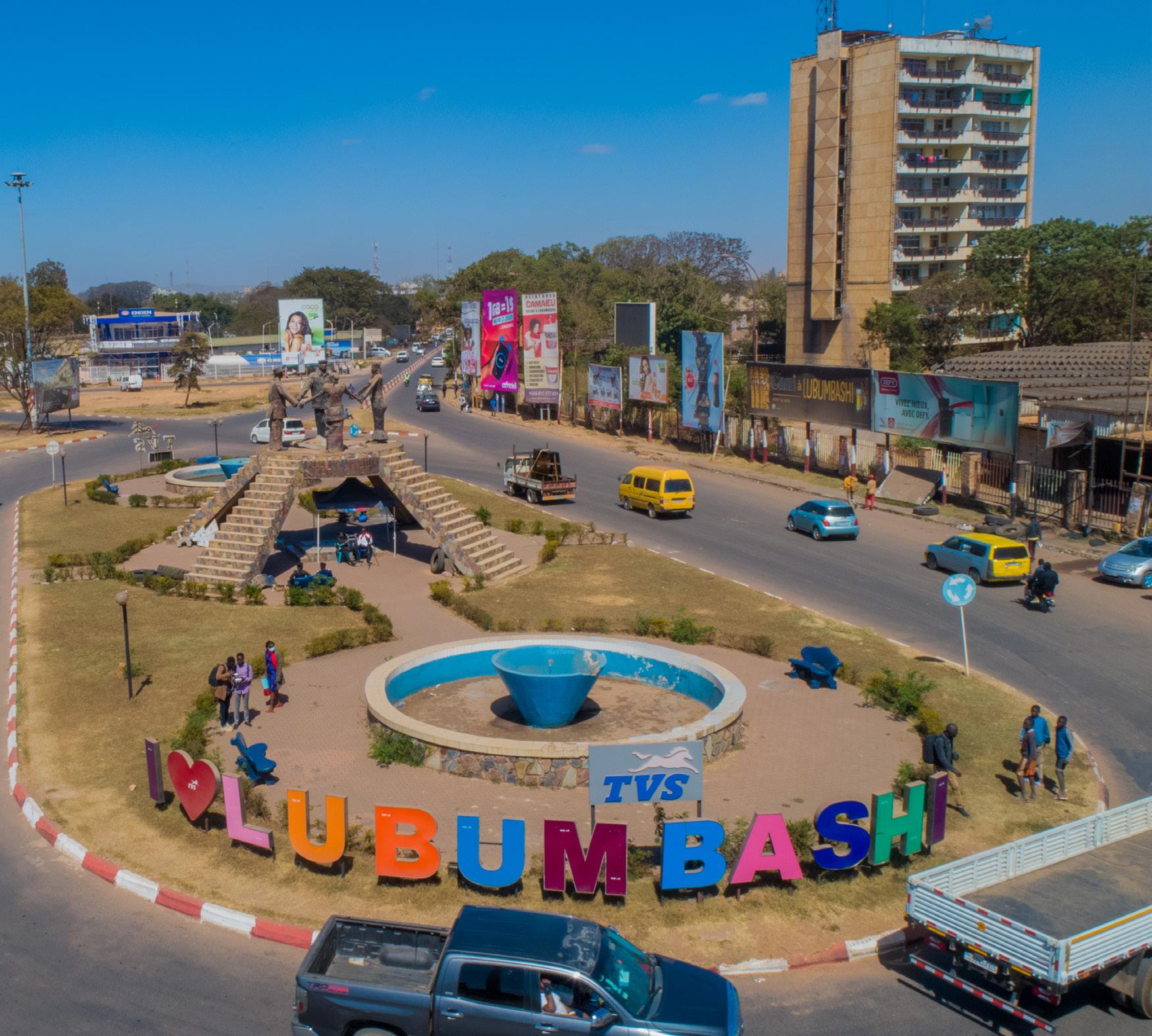
Lubumbashi is the second largest town in RDC it is also home to multiple mineral companies’ offices and headquarters. Lubumbashi hosts a large amount of copper which is often used in multiple ways such as for artwork, construction, and others. People in Lubumbashi are very hard-working, but also explore multiple other ways of having fun through sports, art, and music. Major architecture includes the government building, The central Cathedral, a famous Hotel, Kiwele ( one of the largest campuses in Lubumbashi), The Senate, and so on.

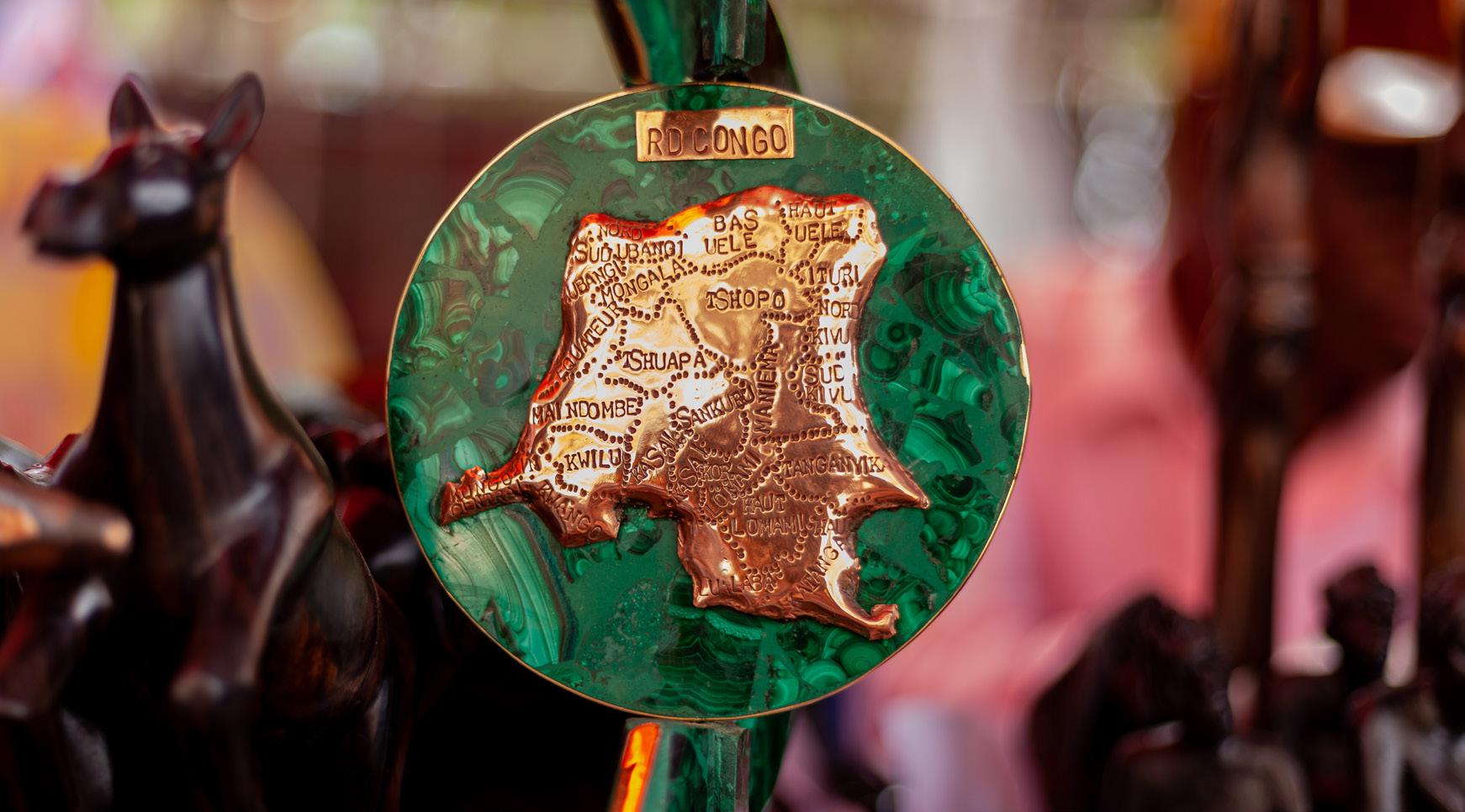


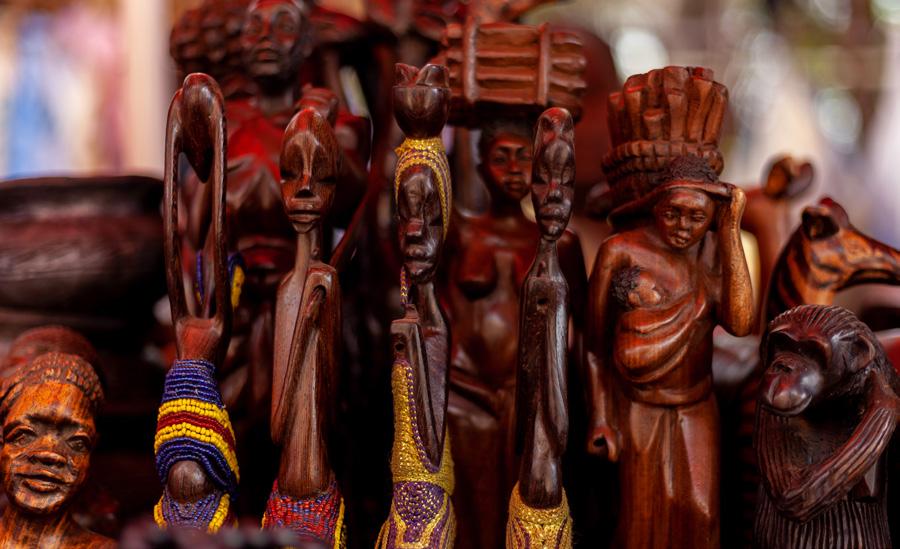
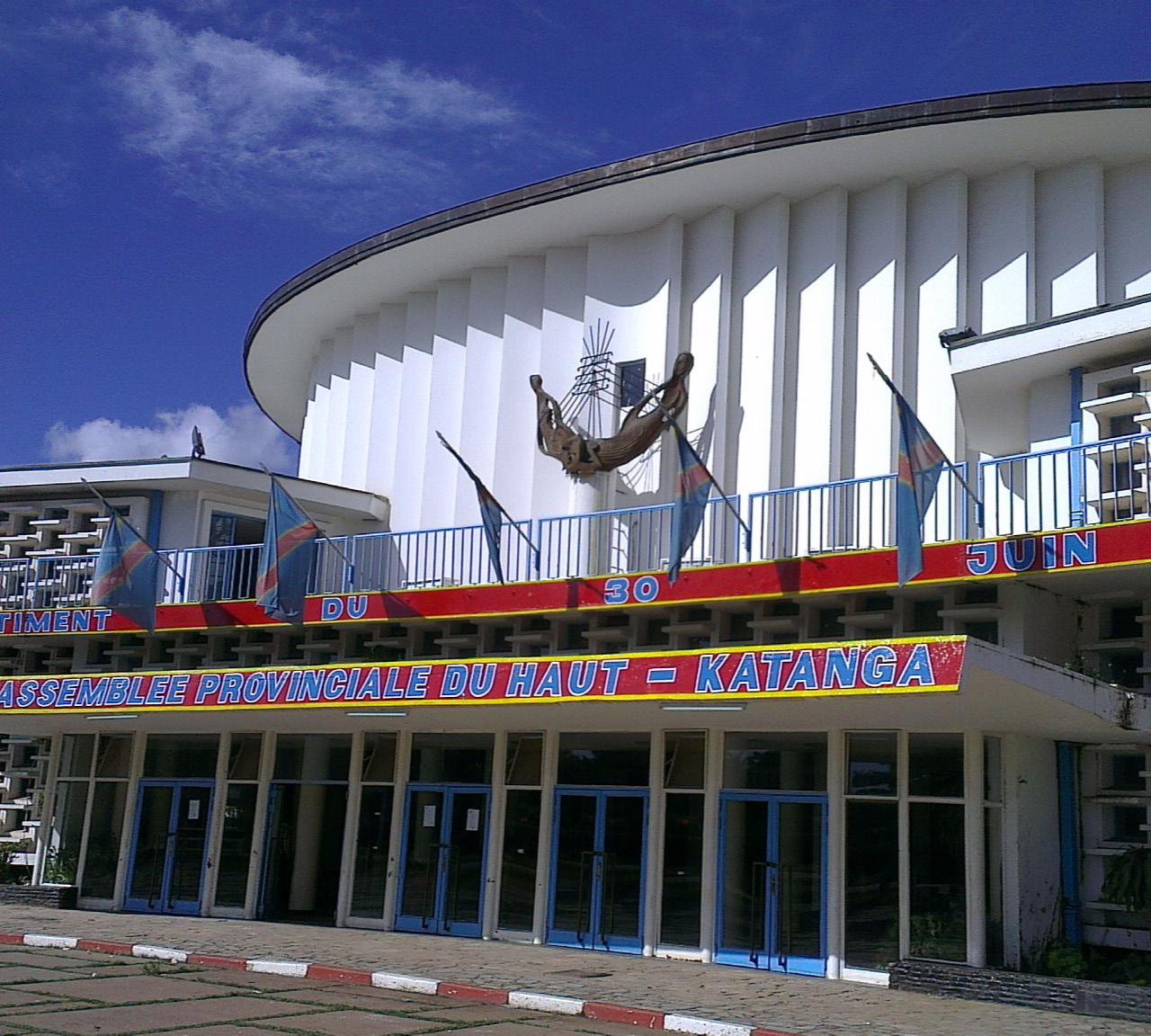







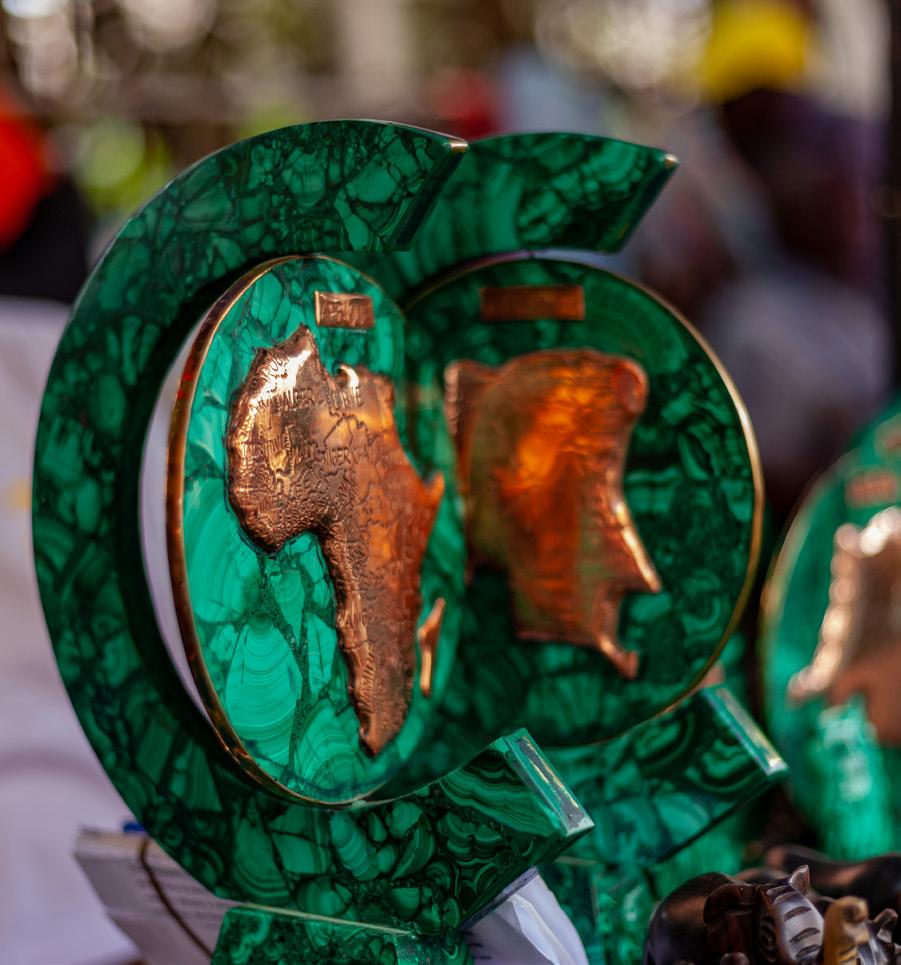

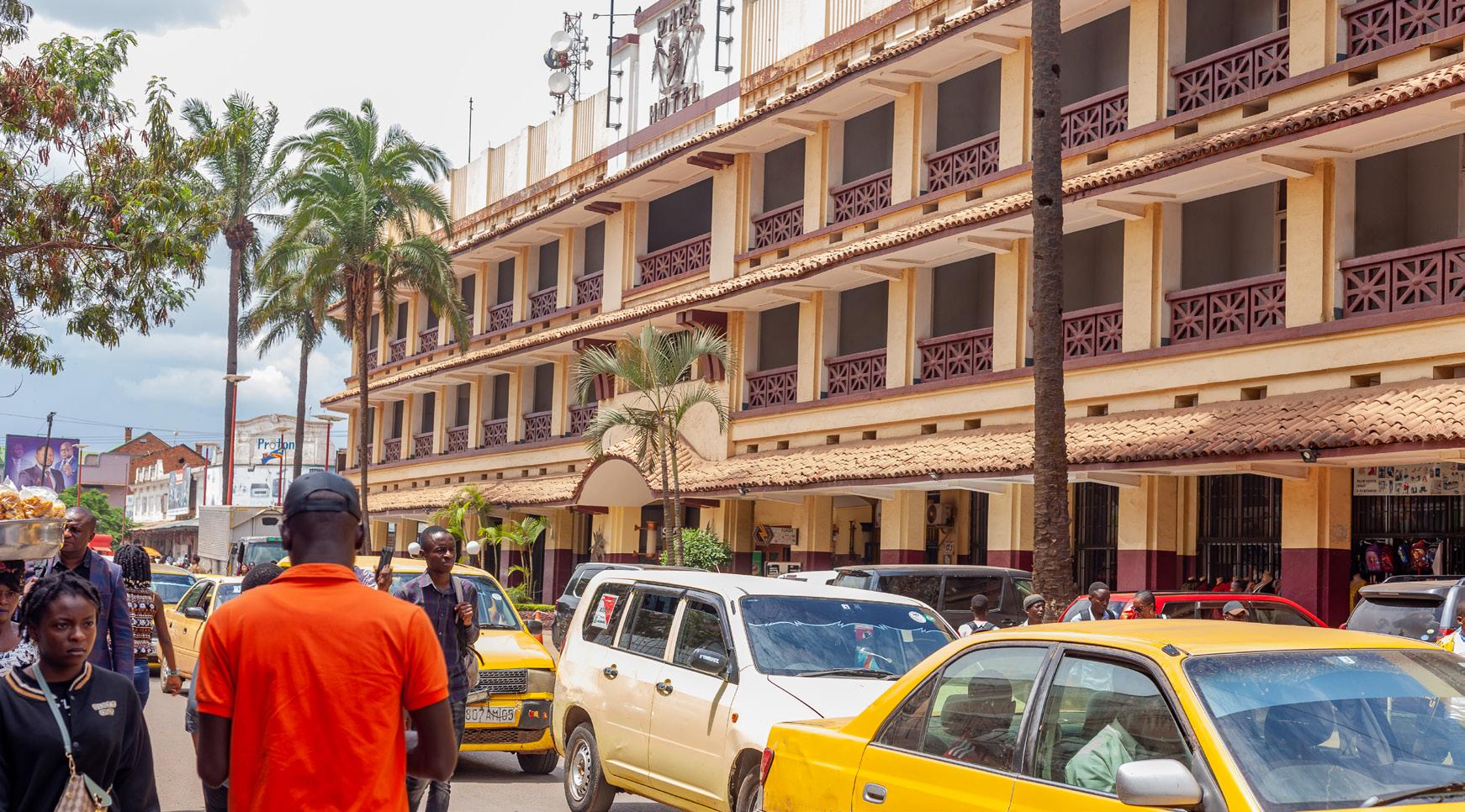


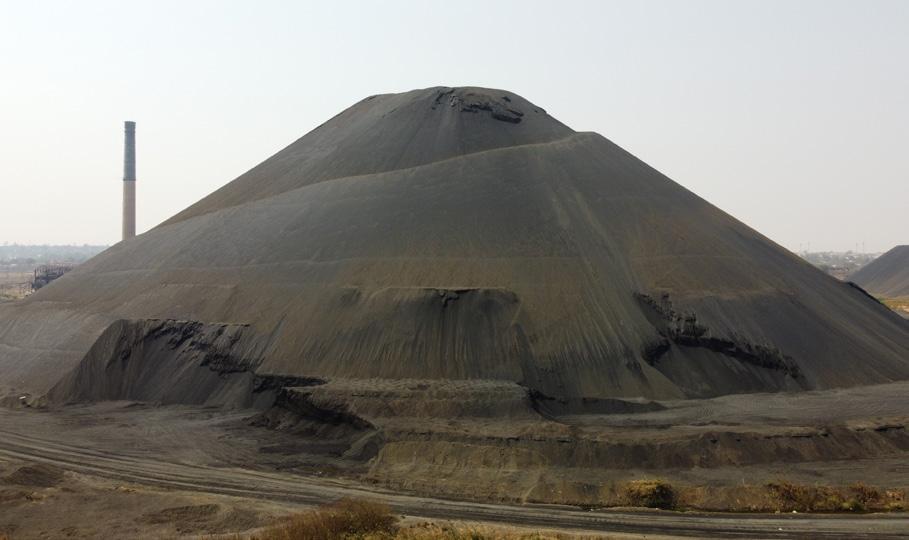
Lubumbashi, located in the Democratic Republic of the Congo (DRC), experiences a tropical wet and dry climate, typical of much of equatorial Africa. Here are some key features of Lubumbashi’s climate:
Temperature: Lubumbashi generally has high temperatures throughout the year. The average daily temperature ranges from around 20°C (68°F) to 32°C (90°F). It can get even hotter during the dry season, with temperatures occasionally exceeding 35°C (95°F). Rainfall: Lubumbashi has two distinct seasons: a wet season and a dry
dry season. The wet season typically lasts from November to April, with the heaviest rainfall occurring from December to February. During this time, Lubumbashi receives significant amounts of rain, often accompanied by thunderstorms. The dry season, from May to October, sees much less rainfall, with occasional showers.
Humidity: Lubumbashi can be quite humid, especially during the wet season. Humidity levels tend to be higher during periods of rainfall and decrease during the dry season. Climate variability: Like many equatorial regions, Lubumbashi’s climate can be influenced by various factors, including El Niño and La Niña events. These phenomena can lead to fluctuations in temperature and rainfall patterns, affecting agricultural activities and overall living conditions.
: The climate in Lubumbashi plays a significant role in the region’s agricultural sector.
The wet season provides essential moisture for crops, while the dry season allows for harvesting and preparation for the next planting cycle. However, excessive rainfall or drought can pose challenges for farmers, impacting crop yields and food security.
Overall, Lubumbashi’s climate is characterized by high temperatures, distinct wet and dry seasons, and the occasional influence of climate variability phenomena. Understanding and adapting to these climatic conditions are essential for various aspects of life in the region, from agriculture to urban planning and infrastructure development.
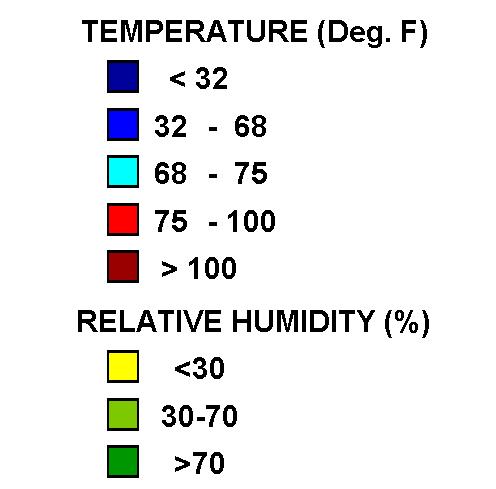
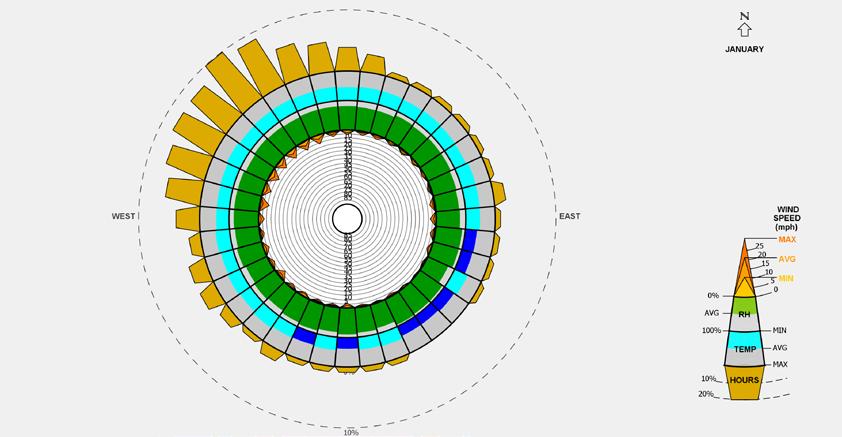
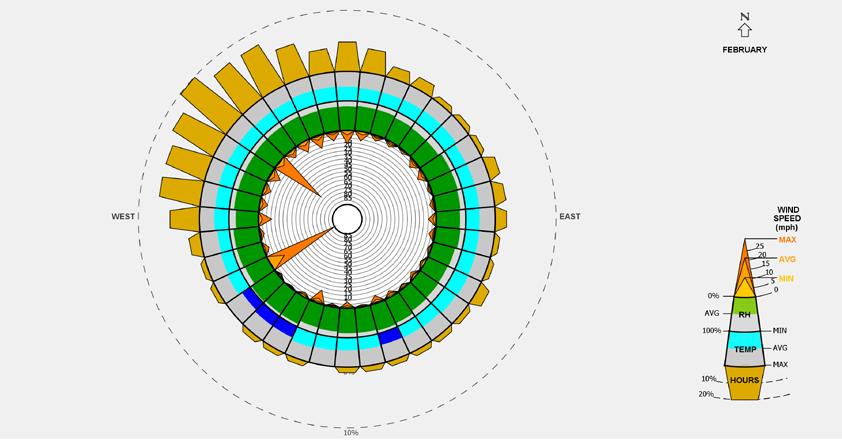




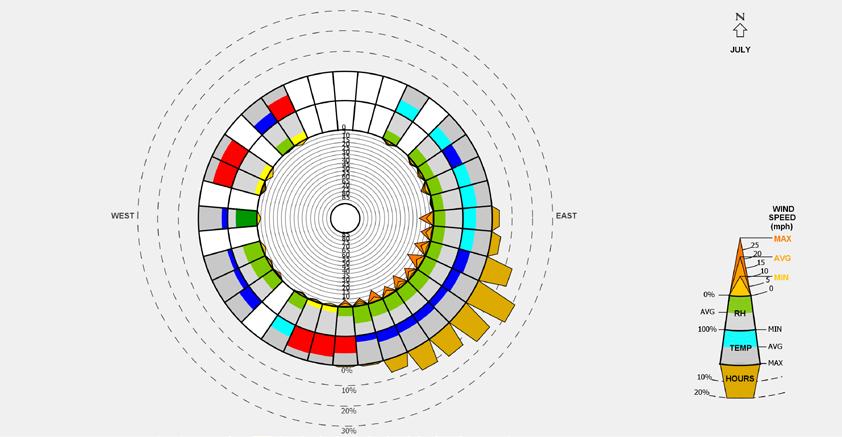
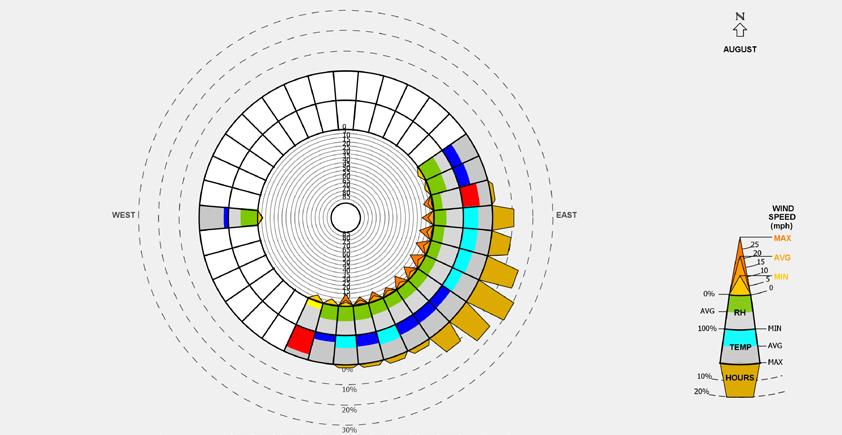

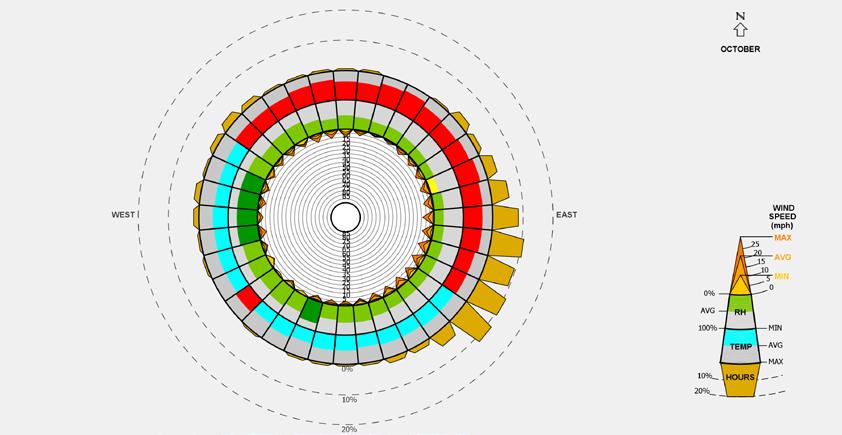
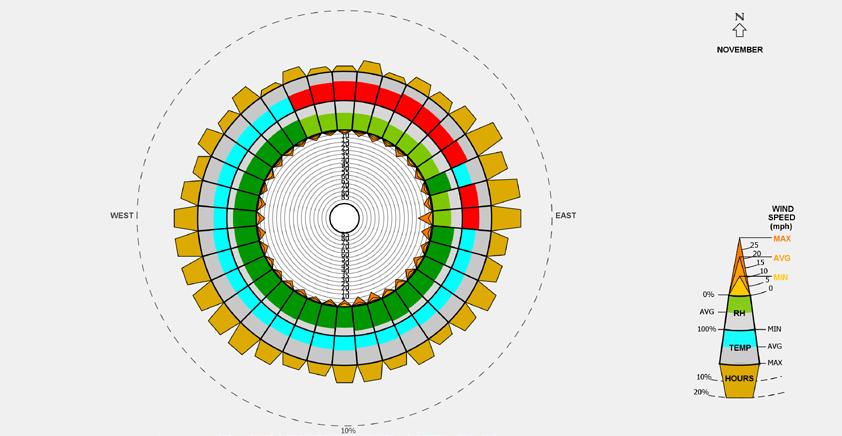
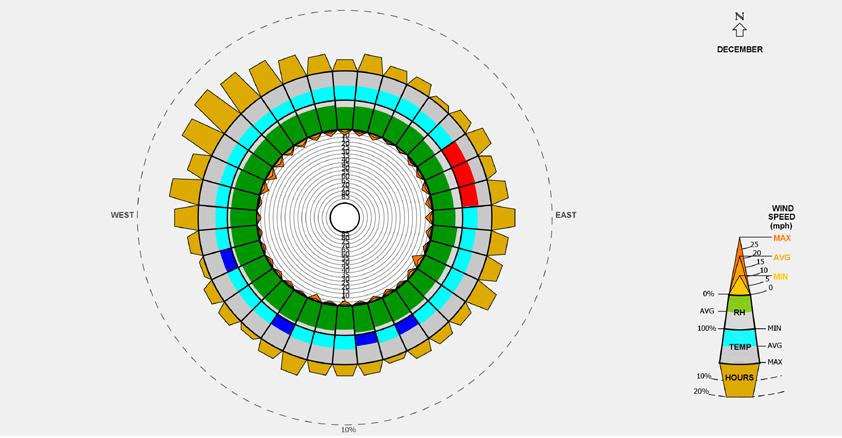
Designing in Lubumbashi’s climate requires careful consideration of several factors to ensure comfort, sustainability, and resilience. Here are some key things to keep in mind:
Passive Cooling Strategies: Given the high temperatures experienced in Lubumbashi, passive cooling techniques are essential for reducing the reliance on mechanical cooling systems. Incorporate features such as shading devices, natural ventilation, and building orientation to minimize heat gain and maximize airflow.
Material Selection: Choose building materials that can withstand the tropical climate of Lubumbashi. Opt for materials with high thermal mass to regulate indoor temperatures and resist heat transfer. Additionally, prioritize materials that are locally sourced and sustainable to minimize environmental impact.
Energy Efficiency: Aim to design energy-efficient buildings that reduce reliance on fossil fuels and minimize carbon emissions. Incorporate features such as passive solar design, energyefficient lighting and appliances, and renewable energy systems like solar panels to reduce energy consumption.
Water Management : During the wet season, heavy rainfall can lead to issues such as flooding and erosion. Design buildings and infrastructure with proper drainage systems to mitigate the risk of water damage. Additionally, it create Humidity that we are trying to avoid.
Cultural Considerations: Take into account the local culture, traditions, and lifestyle preferences when designing buildings and public spaces. Engage with the community to understand their needs and preferences, ensuring that the design reflects and respects the cultural identity of Lubumbashi.
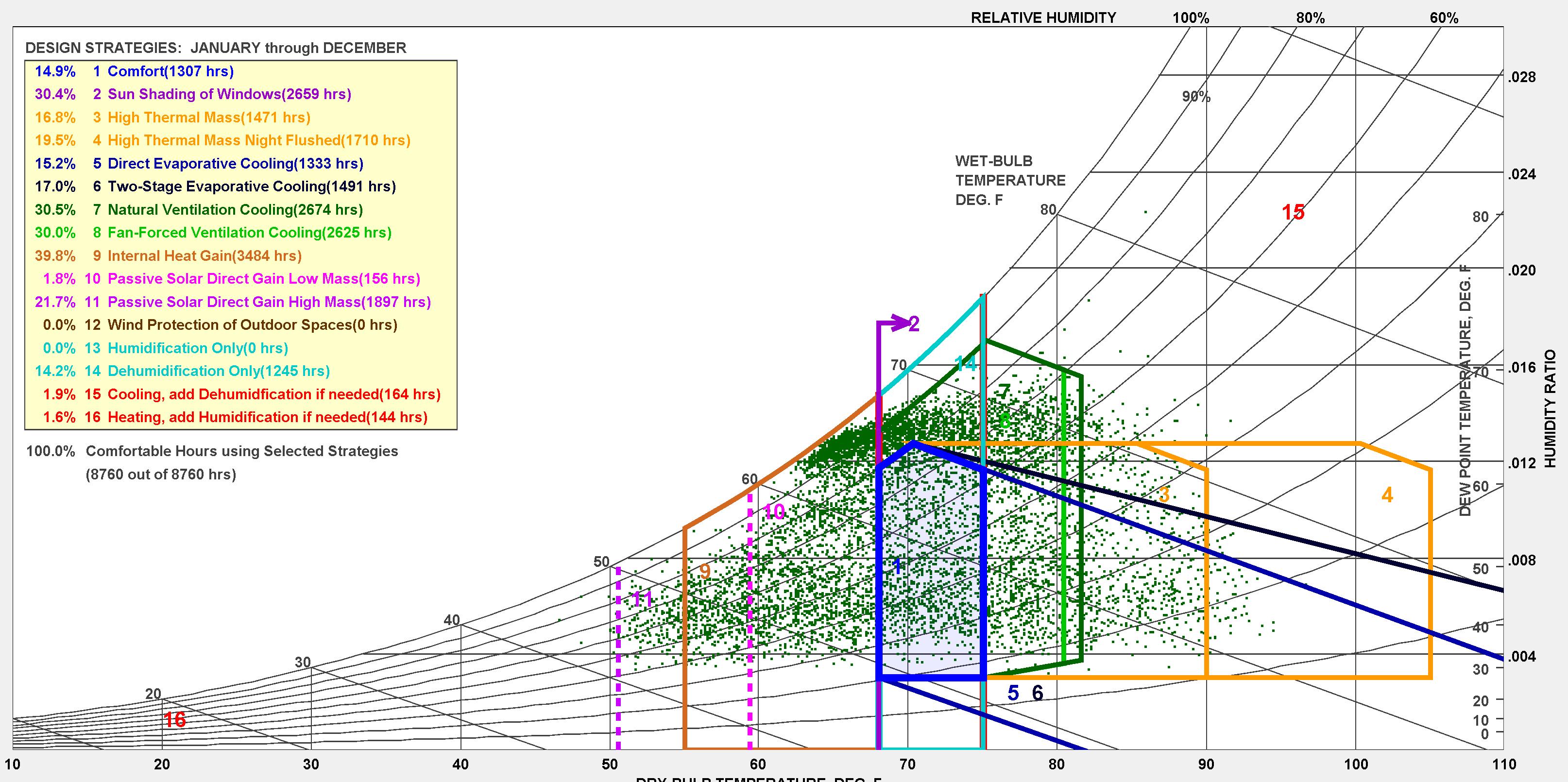
By considering the following factors and integrating sustainable design principles, architects and urban planners can create buildings and environments that are well-suited to Lubumbashi’s climate while promoting comfort, resilience, and sustainability.
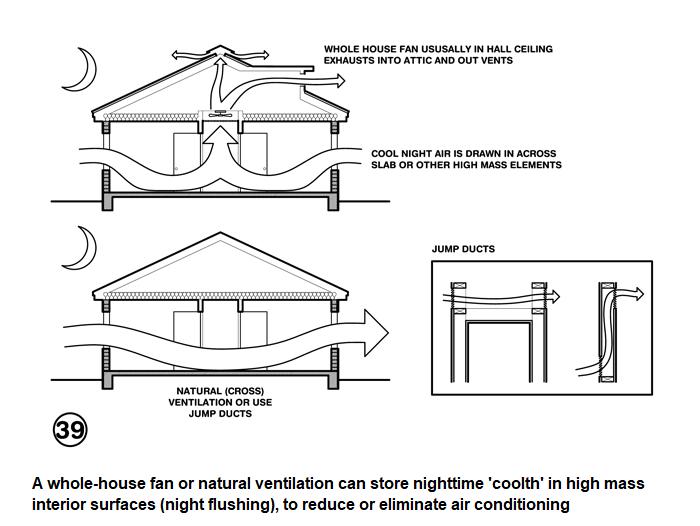

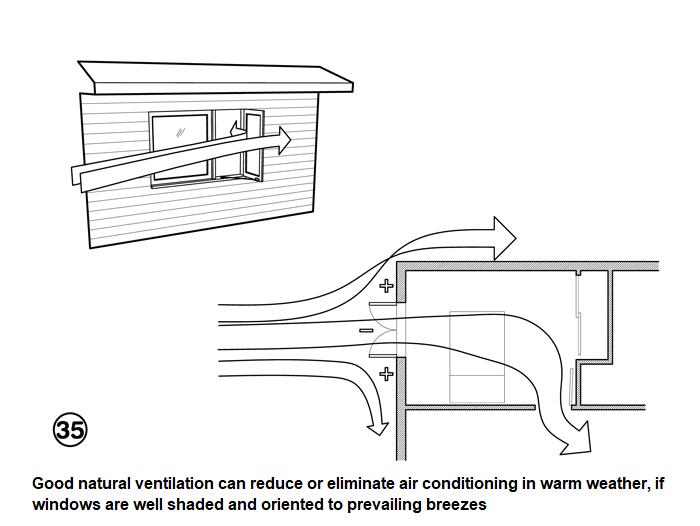

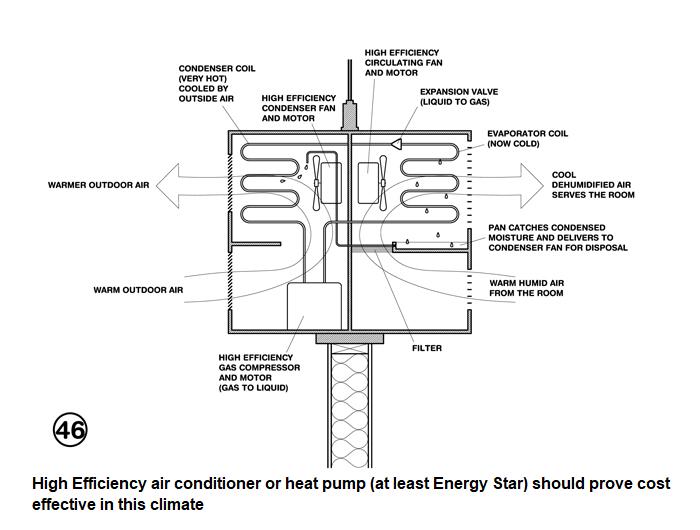
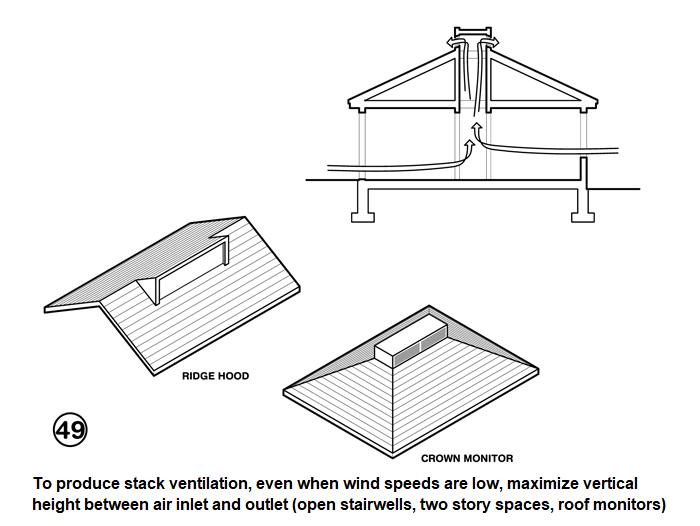
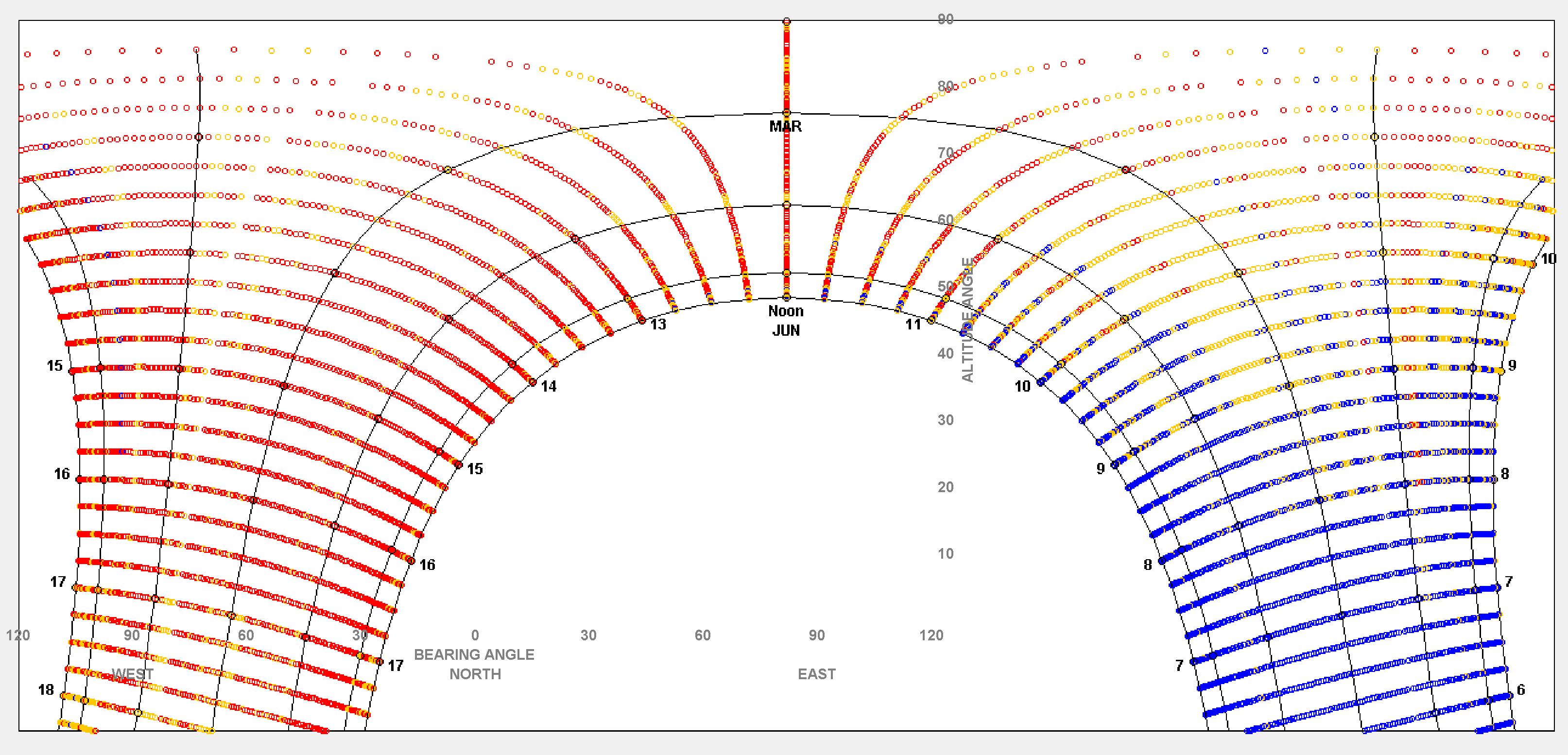
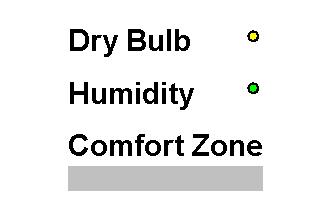
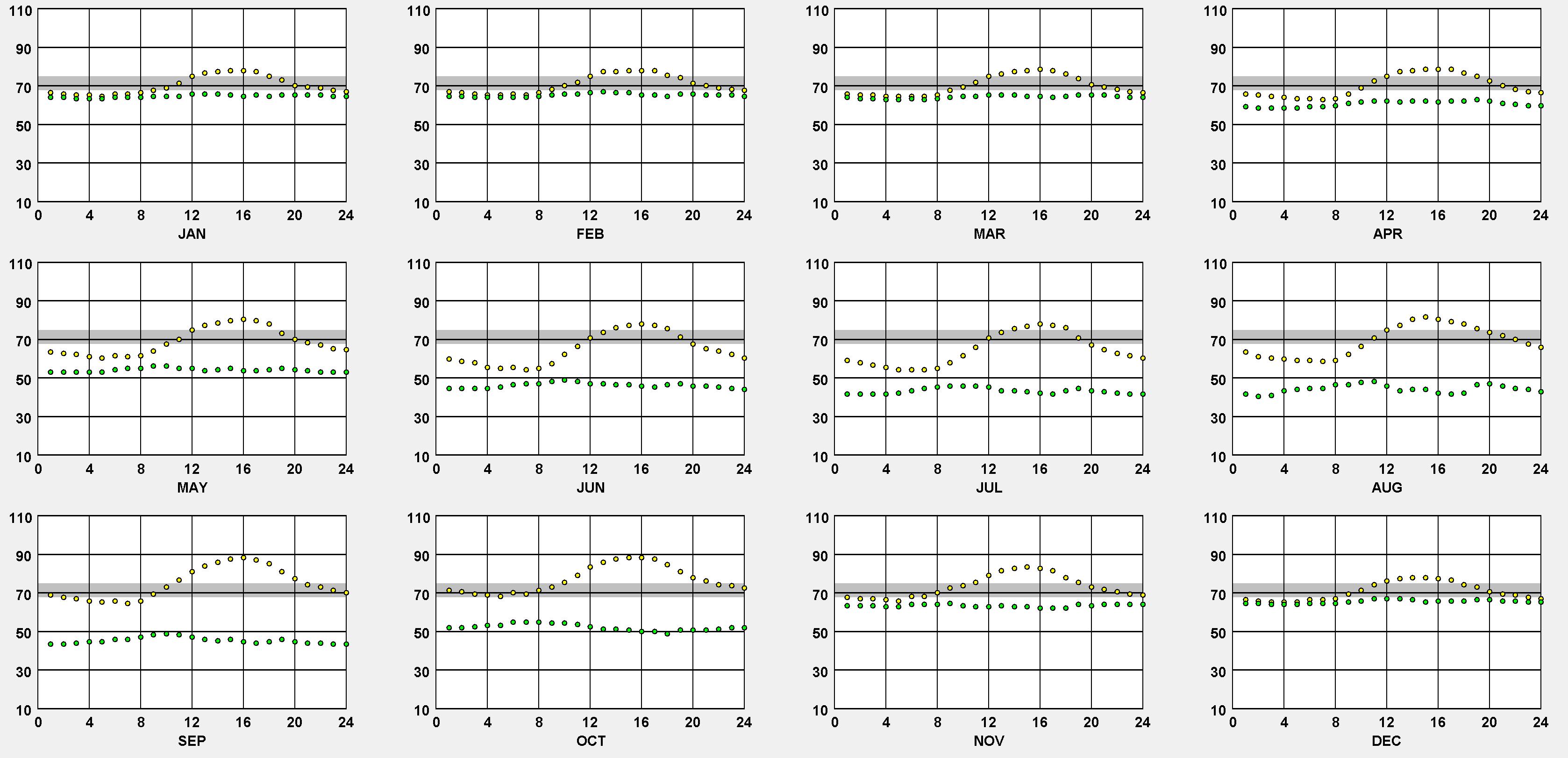
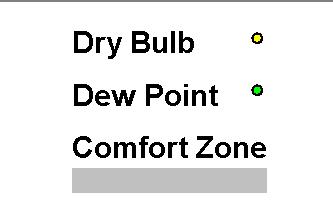
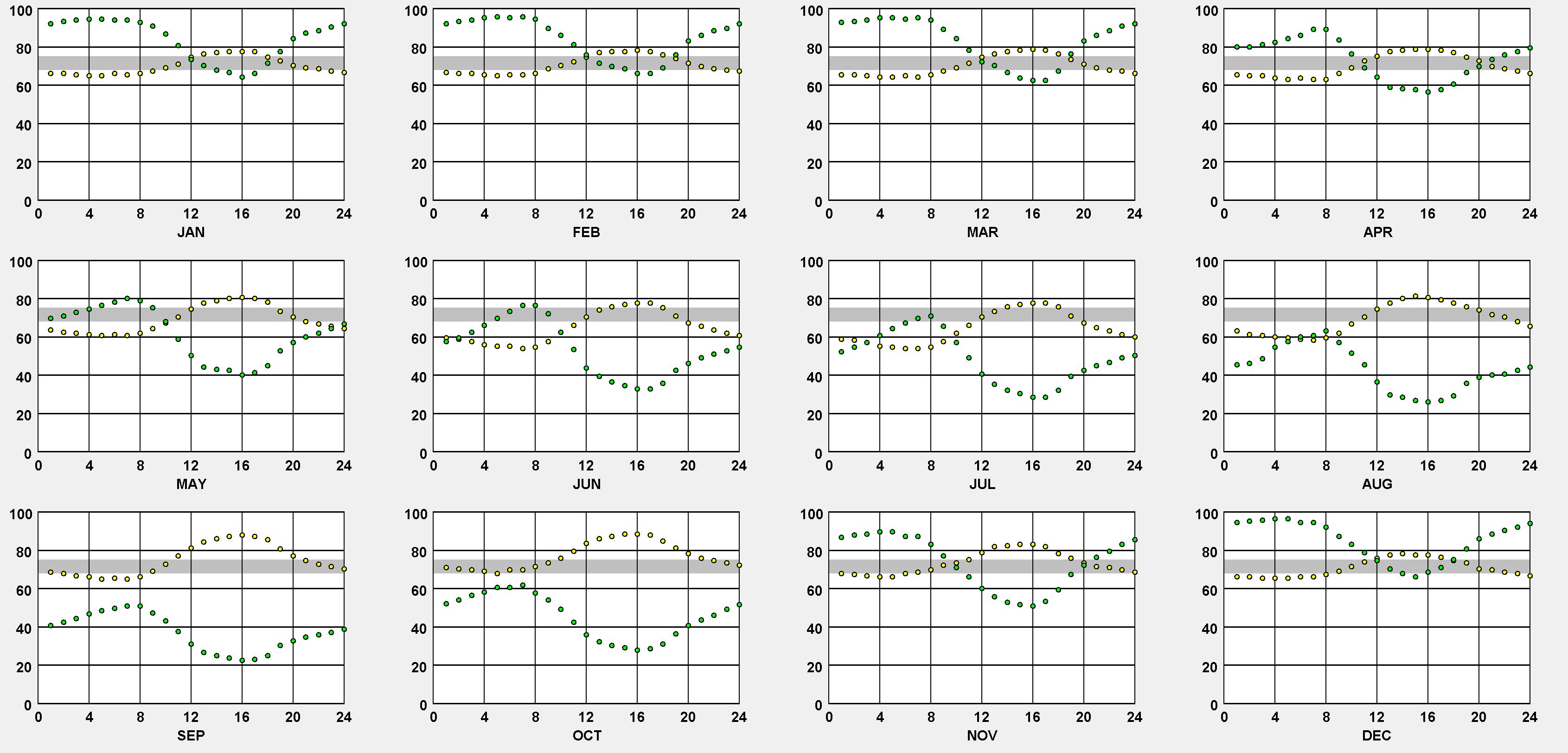
For this project, a teaching hospital better fits our clientele. Therefore, the thesis will engage into designing a teaching hospital. Designing the department-to-room program for a teaching hospital involves allocating space for various clinical, administrative, educational, and research functions. Here’s a breakdown of how the department-to-room program might be structured:
Clinical Departments:
Medical/Surgical Units: Allocate space for medical and surgical inpatient units,
Emergency Department (ED): Designate space for the ED, including examination rooms, trauma bays, triage area, observation units, and support spaces such as radiology and laboratory.
ADJUNCT DIAGNOSTIC FACILITIES
SURGERY DELIVERY

Operating Rooms (ORs): Allocate space for OR suites, including operating rooms, preoperative and postoperative areas, sterile processing, and anesthesia support spaces.
Intensive Care Units (ICUs): Design ICU spaces, including patient rooms, nurse stations, equipment storage, and specialized areas for critical care procedures.
Labor and Delivery (L&D): Allocate space for labor and delivery rooms, postpartum rooms, neonatal intensive care units (NICUs), and support areas for obstetric care.
Diagnostic and Treatment Areas: Designate space for diagnostic imaging, laboratory testing, rehabilitation services, infusion therapy, and outpatient treatment areas.
Administrative Departments:
Administrative Offices: Designate space for hospital administration, including executive offices, finance, human resources, and other administrative functions.
Educational and Research Departments: Classrooms and Lecture Halls: Allocate space for classrooms, lecture halls, and conference rooms for educational activities.
Simulation Center: Designate space for simulation labs and training facilities for medical education and professional development.
Library and Resource Center: Allocate space for a medical library, research facilities, and access to digital resources for students and staff
Faculty Offices: Allocate space for faculty offices, administrative support areas, and academic departments..
By carefully planning and allocating space for each department and function, the department-to-room program ensures that the teaching hospital can effectively deliver high-quality patient care, support medical education and research activities, while responding to the culture.
INPATIENT DEPARTEMENT
DIAGNOSTIC AND TREATMENT
In response to Congolese doctors’ recommendations, the hospital program included most of the characteristics that they mentioned in the survey, such as Medical ICU, Surgery ICU, Pediatric ICU, Delivery ICU, Cardio/ Neuro ICU., and Orthopedic ICU. each space has been allocated to a specific department to facilitate the understanding of the program.
Given the large square footage of our building, Stone’s program is divided into two parts. The first part is the individual building which regroups buildings that will benefit from having a centered location rather than being divided into multiple locations. The second part of the program consists of modules that would be repeated three times to fulfill the entirety of the building space and facilitate the conception and design of the building.
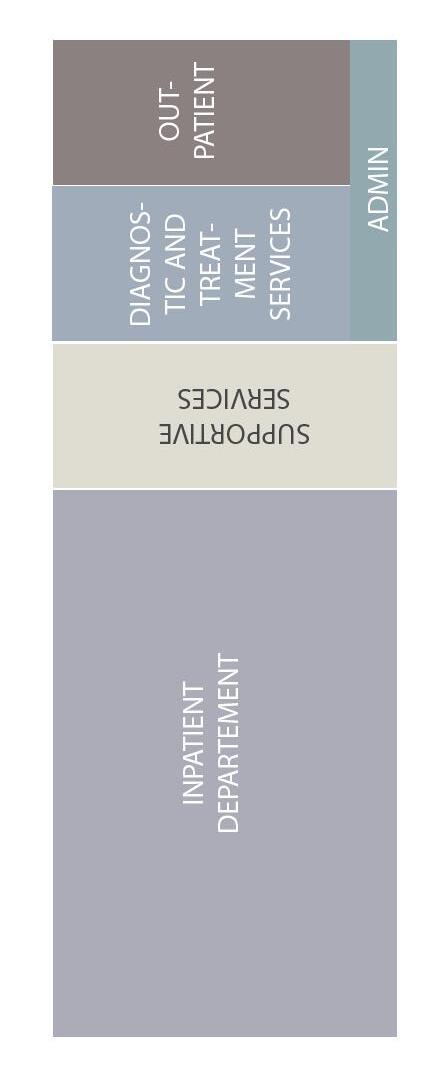
Individual Building Massing
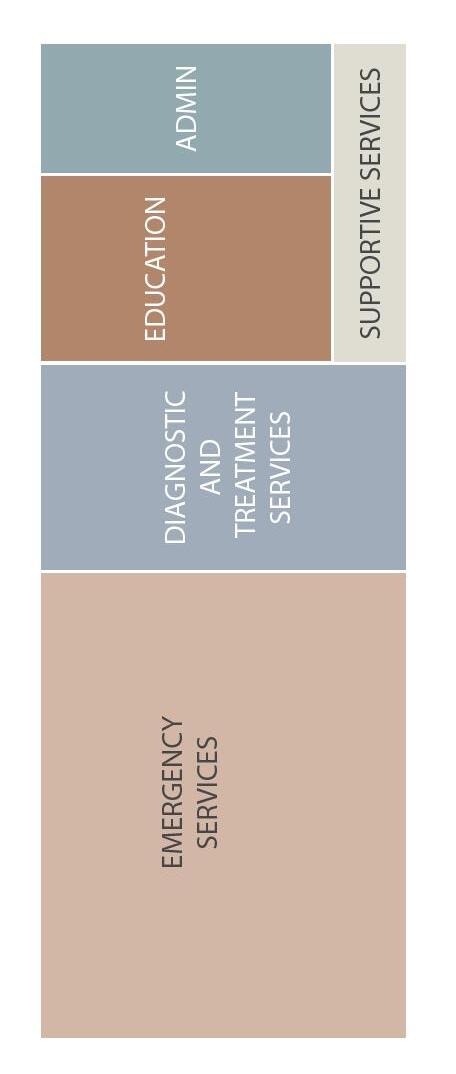
Individual Building Massing
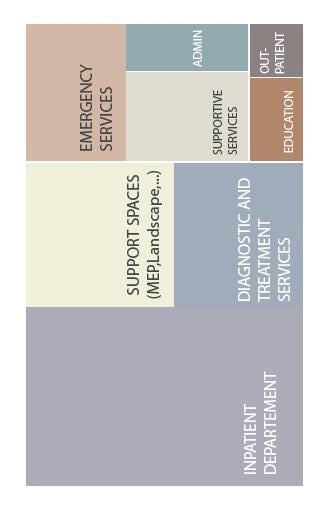
Overall Building Massing

Dividing the program into parts makes it easier to examine and design each section of the healthcare facility with precision. Since functionality is crucial in this context, breaking down the building into specific pieces allows for a thorough understanding of each part. Assigning each piece to its corresponding department helps delve deeper into the details, leading to more informed design choices for every aspect of the building. The adjacency diagram provides a visual representation of how various components of the program are interconnected and how they support each other’s functions. It allows designers to analyze the relationships between different spaces, such as patient rooms, treatment areas, and support services, to optimize efficiency and convenience. The diagram presented on the left represents the first draft or initial iteration of the spatial arrangement. It outlines the sequence in which different spaces will be organized within the facility.
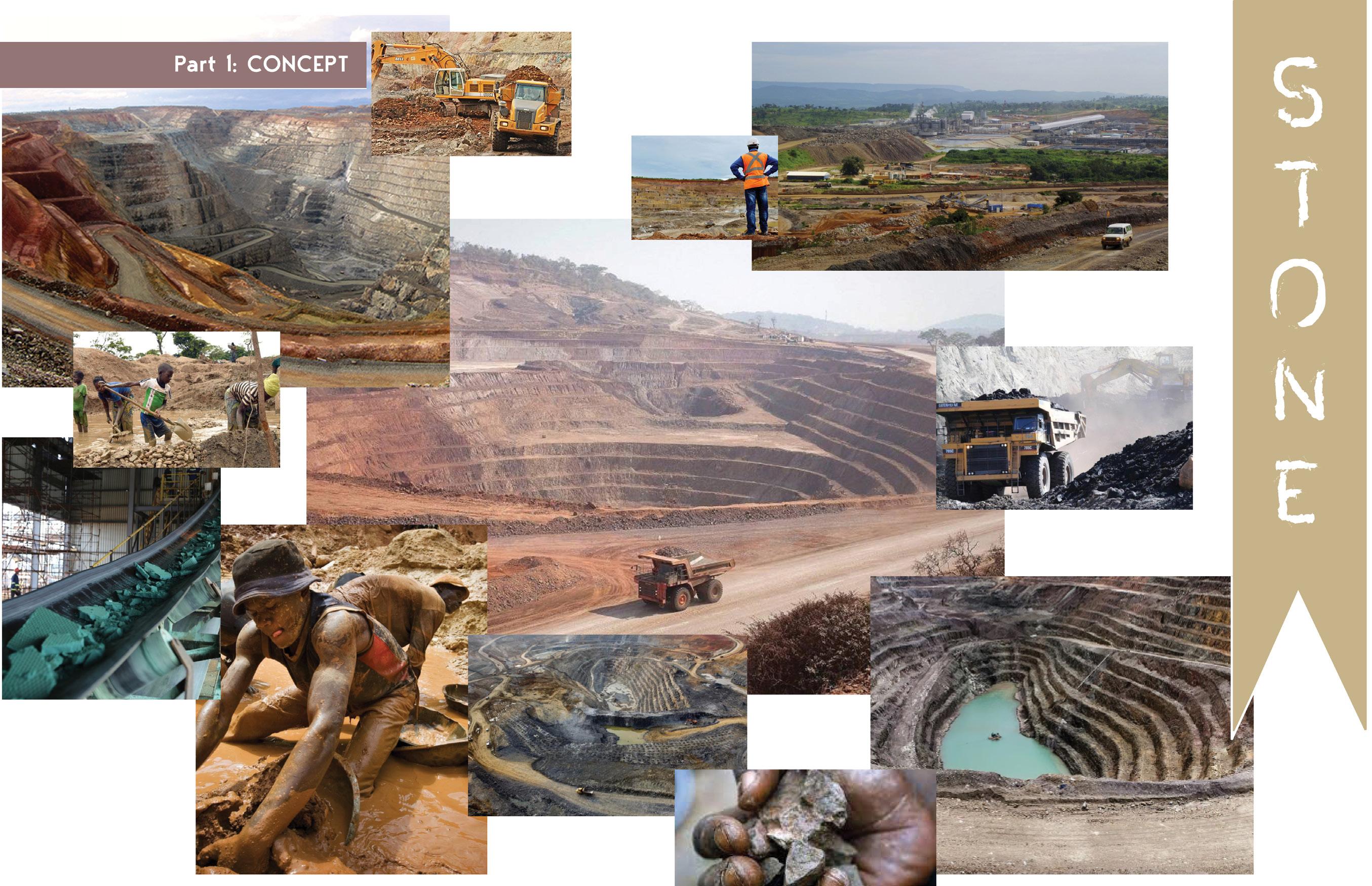
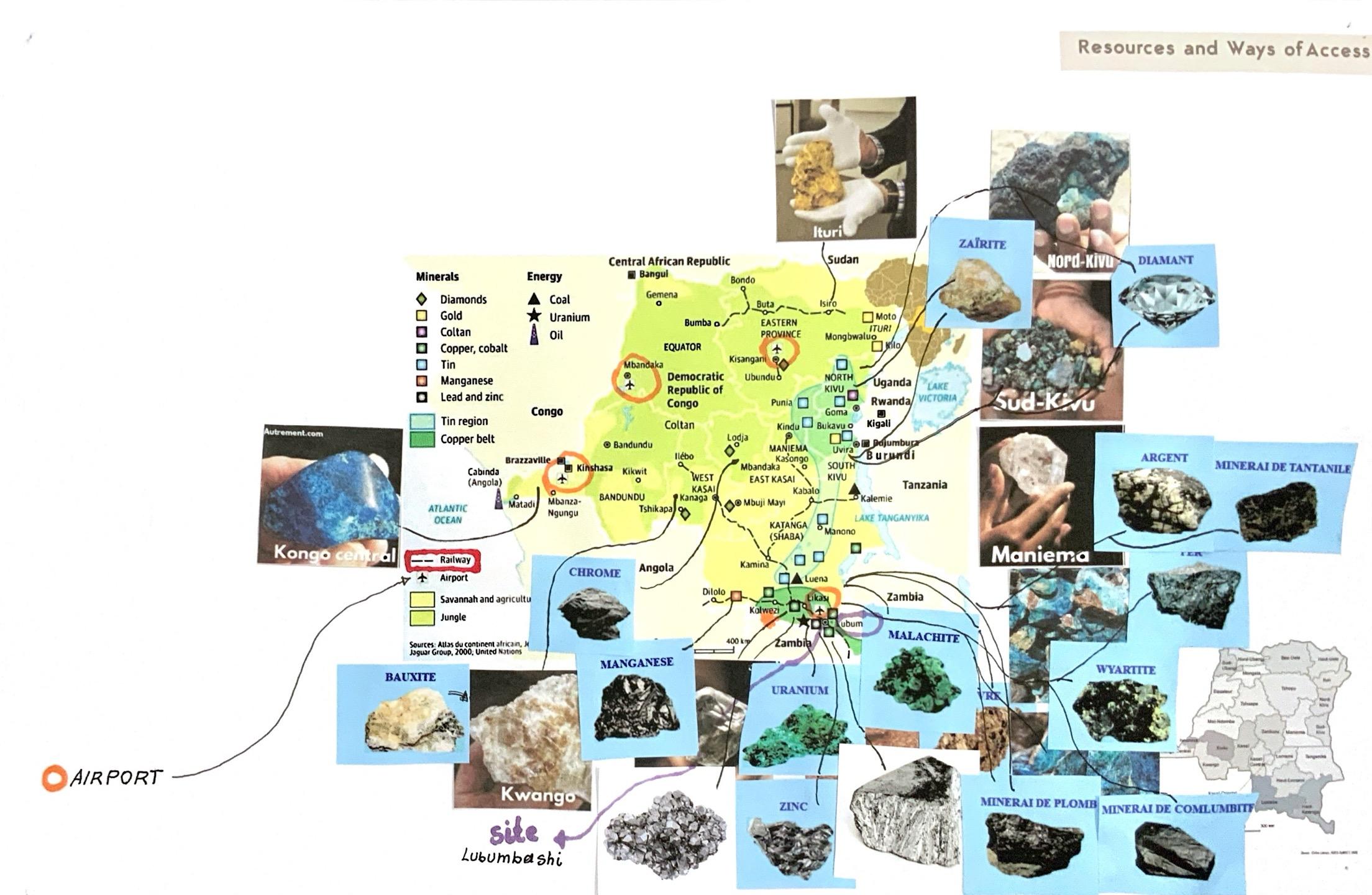
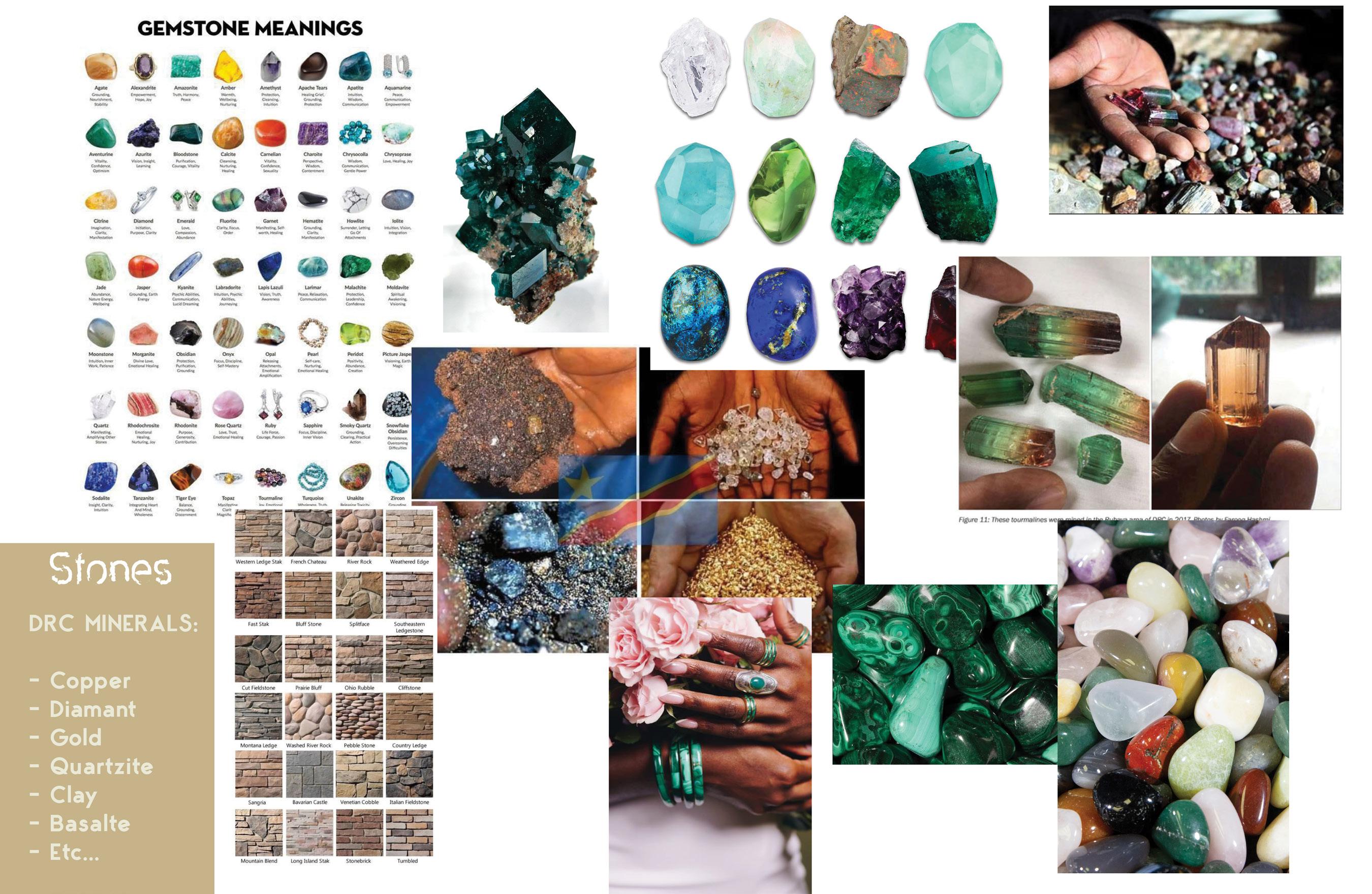


Through the research conducted, The Congo is considered to own a variety of minerals that make up most of the country’s wealth. Minerals in the DR Congo have launched the acknowledgment of the country worldwide. One good example is Apple which uses Coltan from the Congo to make iPhones. Though the Congo does not process refineries for its resources, Mineral companies in the DRC provide the largest job opportunities for the people, thus tremendously impacting the Congolese lifestyle.
Therefore, the concept of a stone portrays the DRC, on multiple levels: culturally, Economically, and environmentally. In the city of Lubumbashi, one stone prevails in particular: Malachite. Malachite is embedded into the City of Lubumbashi as one of the most harvested. Therefore, Stone explores Malachite and how it could shape a Congolese Hospital.


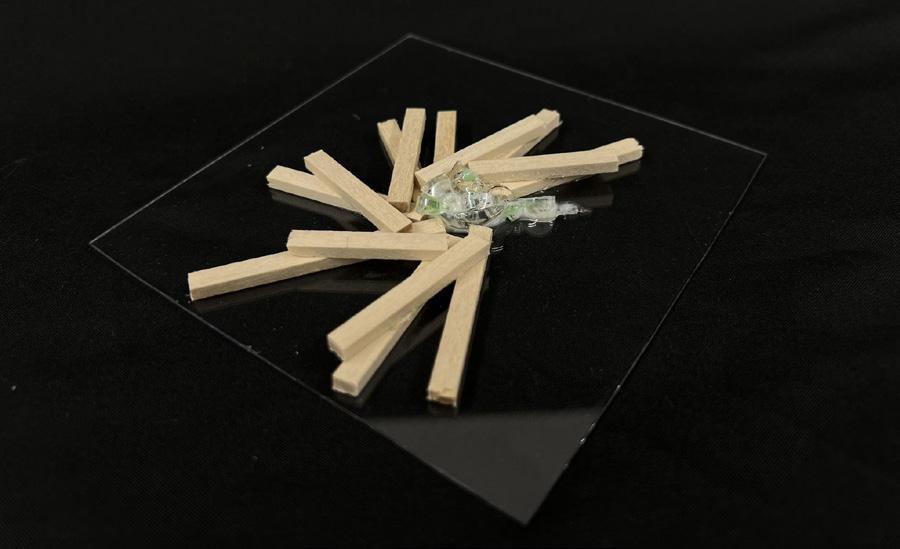

The concept diagrams serve as visual representations of the strategies employed to leverage the access points of the Malachite in order to unify the various components of the program. In the first concept model, lines and their central points are utilized as design elements to create a sense of harmony and cohesion throughout the space. On the other hand, the final picture portrays a different approach, with four corners being emphasized to encourage interaction and engagement between them. This design concept seeks to create focal points at each corner, promoting connectivity between different parts of the program..
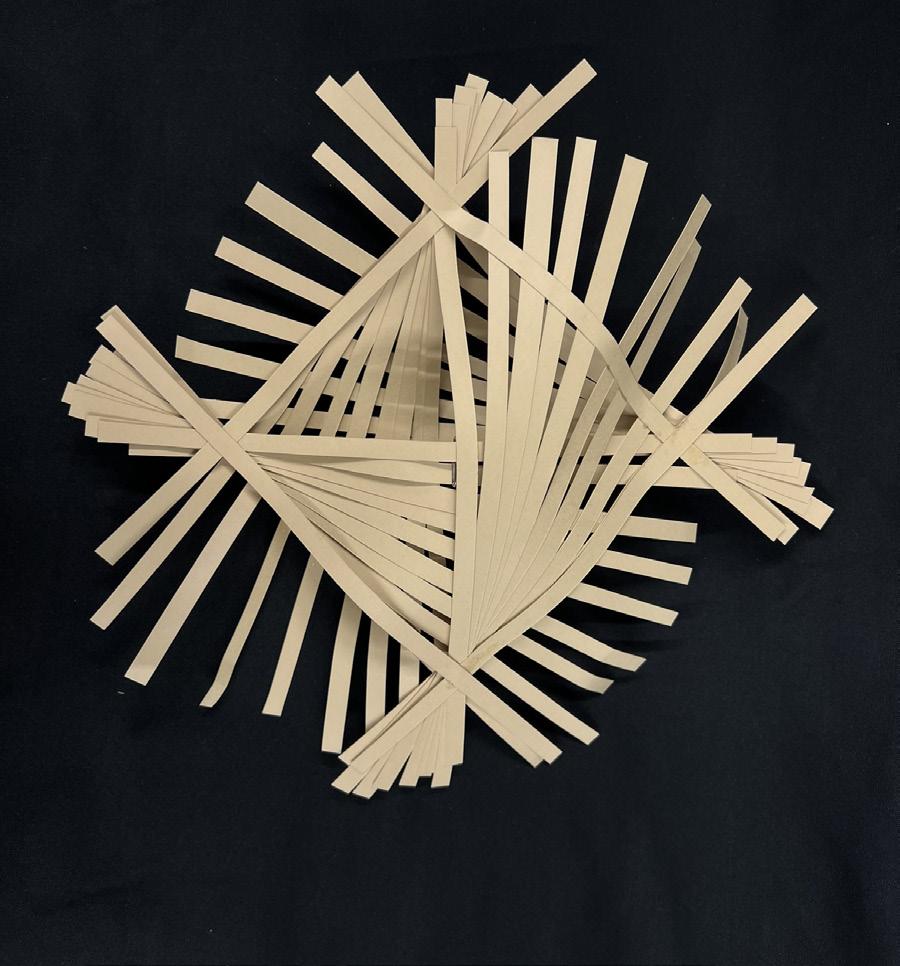

In the initial phase of conceptualizing the project’s design, it was determined that the diagrams representing the massing should be categorized into two distinct groups: one focusing on the overall building structure and the other specifically on the singular modules within it. This
By segregating the diagrams into these two categories, we aim to provide a clearer depiction of the overall building composition and facilitate a more straightforward understanding of its various elements.

Essentially, the massing diagrams serve as a tool to visually convey the architectural intentions and spatial relationships of the project, thereby aiding in the comprehension of its design concepts by stakeholders and
Given that the thesis aims to respond to Congolese healthcare facility through the seven principles enounced in the method portion, it is crucial to keep the triad in mind as designing this building.
The first diagram examines how the modules work together like a sequence, with the idea that all three modules are connected without interruption.
Adjacency Diagram
The second option aims to explore the concept of separating modules while ensuring they still function effectively together, achieved by utilizing individual modules
The third option suggests that Radiology should expand into other areas of the program while keeping space in the middle section.
The final option aims to determine what should be placed behind the house compared to what should be visible first, while also considering how they are all connected.
MODULE
MODULE MODULE
(Mortuary, Chapel, Prep Kitchen,Engineering and Maintenance )
(Radiology )
(Entrance Lobby,General reception, Arcade, Pharmacy, Control room, Training and Research )
Module Adjacency Diagram
The first option examines which tasks need to be located next to each other and how to connect all the other parts of the program.
The diagram above explores the different ways each part of the program connects and how they relate to each other even when separated
Individual Building Adjacency Diagram
Finally, this diagram examines how we can centralize certain parts of the program and how these connections will impact the centralization formed on one side of the module.
The module massing organizes outpatient, administrative, diagnostics, treatment, and support services together for practical reasons: they need to be interconnected, particularly in areas where there’s no consistent electricity supply, making it easier for nurses to work efficiently. Placing inpatient services on the top floor serves a symbolic purpose, signaling to incoming patients that the hospital’s aim is to restore their health and keep them out of the hospital whenever possible.
The first floor efficiently admits and discharges patients, while the upper floors offer a quieter, more residentiallike environment, providing patients with added privacy.
Private circulation space with landscape .
To gain a deeper understanding of the facility we were tasked with designing, we embarked on a visit to Lomalinda Medical Center, a reputable institution renowned for its role as a teaching hospital. This visit provided us with a firsthand opportunity to examine their approach to hospital design and solutions they have implemented. A notable aspect we observed during our visit was the abundant presence of natural light throughout the hospital premises, even extending to critical areas such as the Operating Theater.
This emphasis on natural lighting not only enhances the aesthetic appeal of the space but also contributes to a more inviting and comfortable environment for both patients and staff. Despite the necessity for surgical procedures, the consideration for user experience remains paramount.
Within the Medical Intensive Care Unit (MICU), we noted the provision of side seating for families, facilitating proximity to patients and fostering a supportive environment for both patients and their loved ones.

The design of this hospital also connects to the biophilia to enhance green outside spaces for the patient. In Figure 31, we start seeing how this building addresses circulation using bridges in between buildings to help circulate from one building to the
Comparing the old and new sections of Lomalinda Hospital offered valuable insights into the facility’s evolution and adaptation to changing demands over time. This comparative analysis was instrumental in informing our design process, allowing us to glean valuable lessons in flexibility and responsiveness to evolving
healthcare needs.
Additionally, the exterior architecture of the hospital left a lasting impression, demonstrating a commitment to enhancing the overall experience of patients and visitors. Attention to detail was evident in both grand architectural features and subtle design elements, such as the utilization of specialized walls

for elevators, which serve to optimize functionality and user experience. Furthermore, the interconnectedness of the old and new sections of the hospital, facilitated by strategically placed bridges, underscores the importance of seamless transitions and continuity of care within the facility.
In the conference room, the abundance of natural light fosters an environment conducive to productive meetings and decisionmaking processes. This thoughtful consideration of environmental factors contributes to the overall functionality and effectiveness of hospital spaces beyond clinical areas.
Ultimately, our visit to Lomalinda Medical Center provided invaluable insights into the intricacies of hospital circulation, spatial organization, and the holistic approach to healthcare facility design.
These observations served as a foundation for our design endeavors, ensuring that our proposed solutions are informed by real-world experiences and best practices in healthcare architecture.
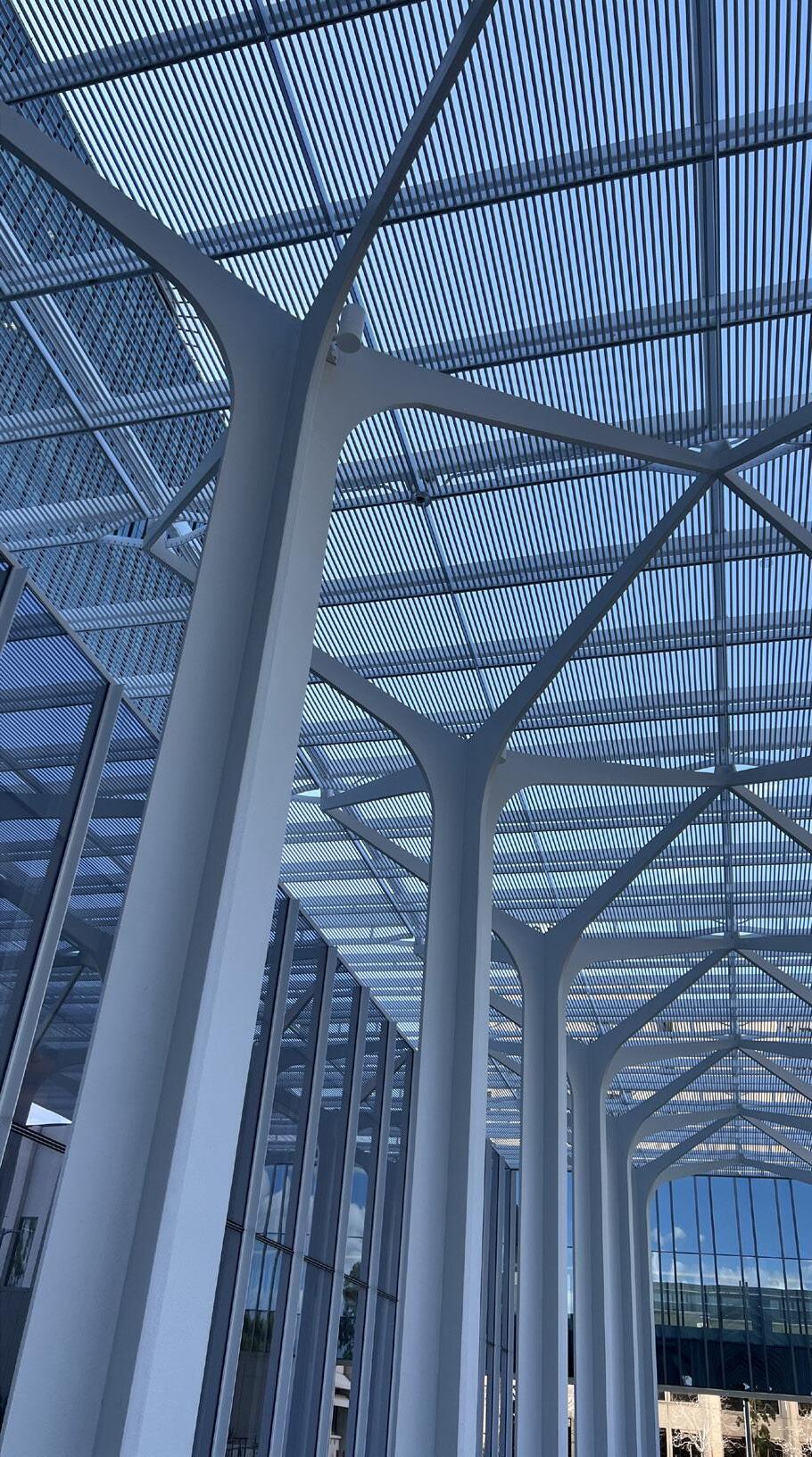
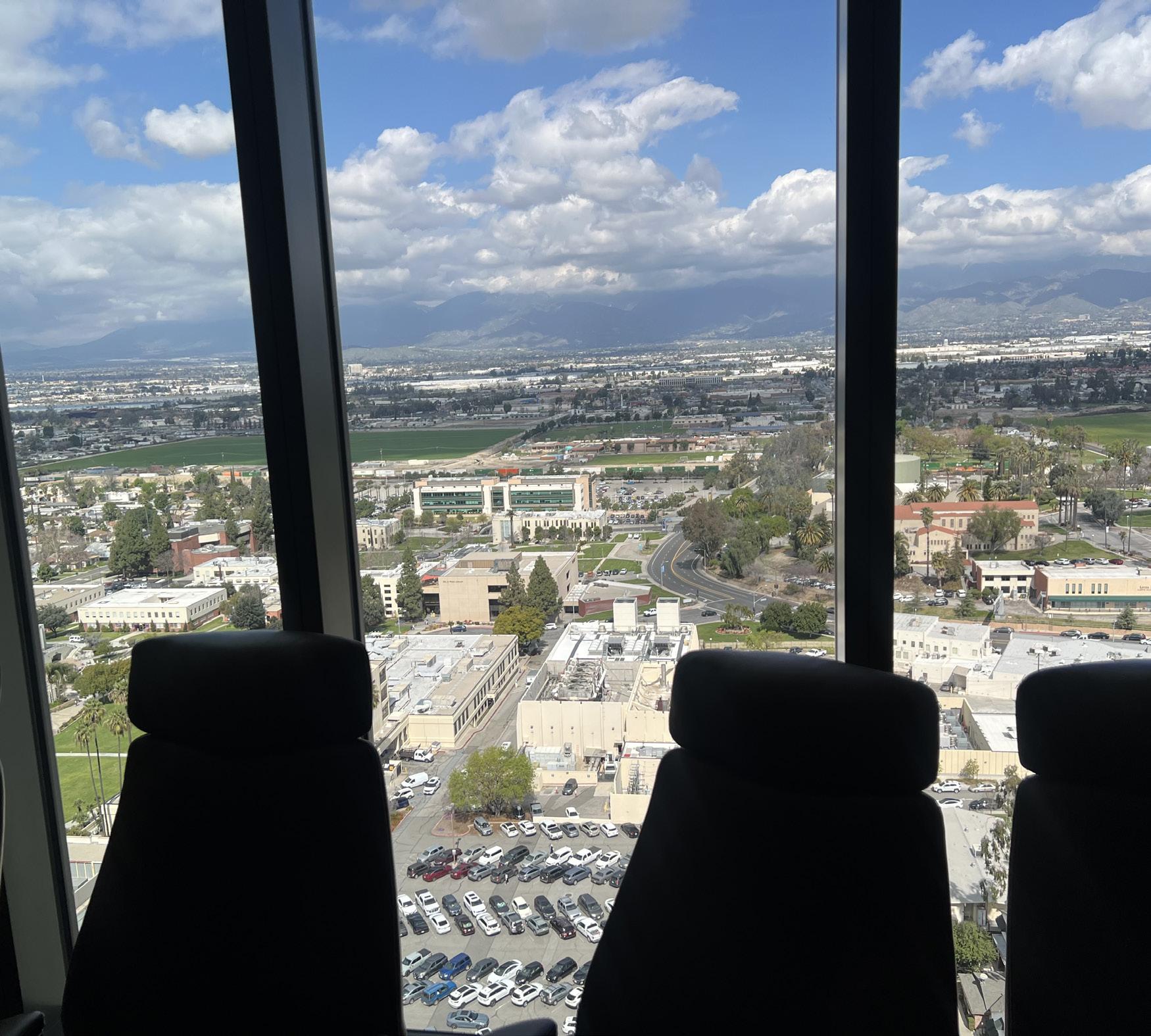
Among the multitude of exceptional design strategies employed by Loma Linda Hospital, the incorporation of scenic views stands out as a noteworthy addition. The vistas from both the conference room and patient rooms are nothing short of breathtaking, enhancing the overall patient experience during their healing journey within the hospital’s confines. These panoramic views not only provide aesthetic pleasure but also contribute to a sense of calm and serenity, fostering a conducive environment for recovery and well-being..
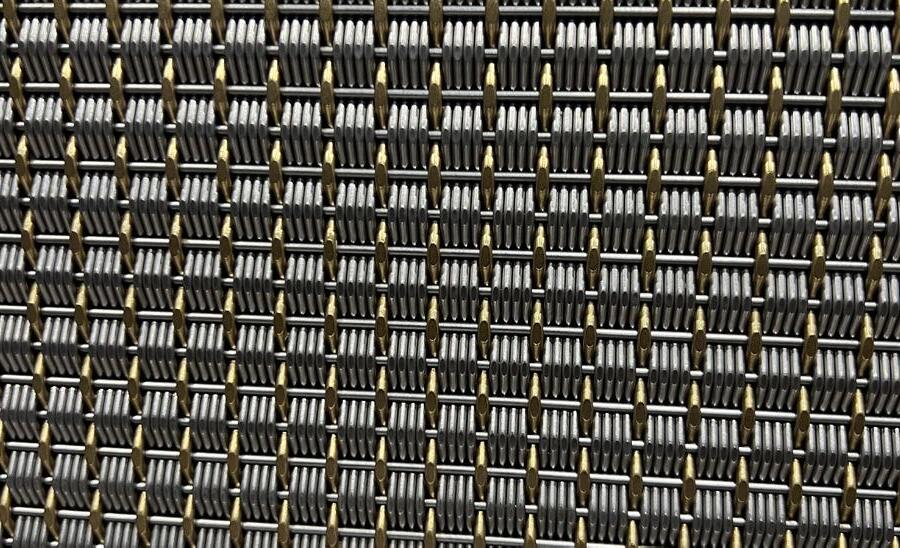
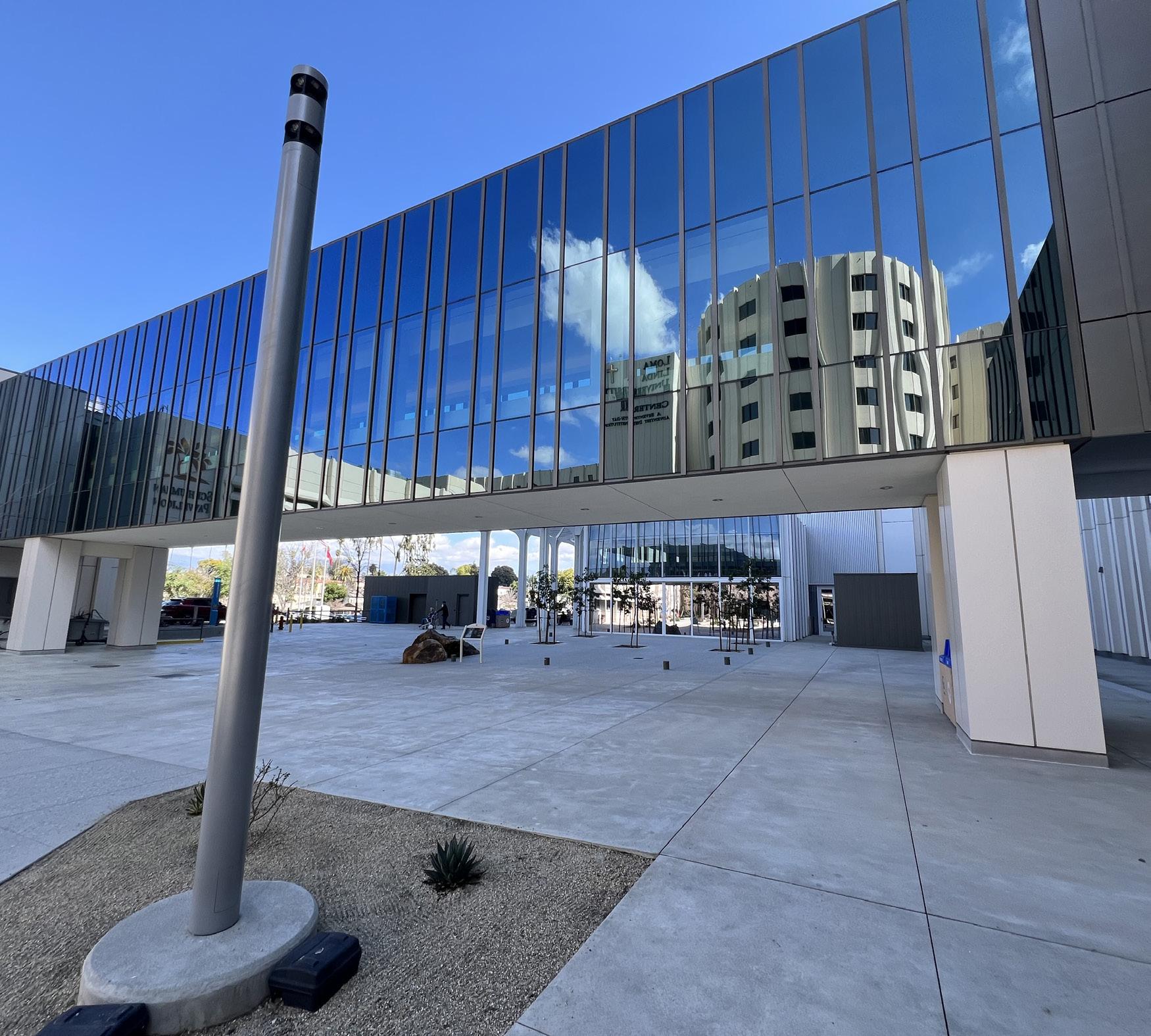


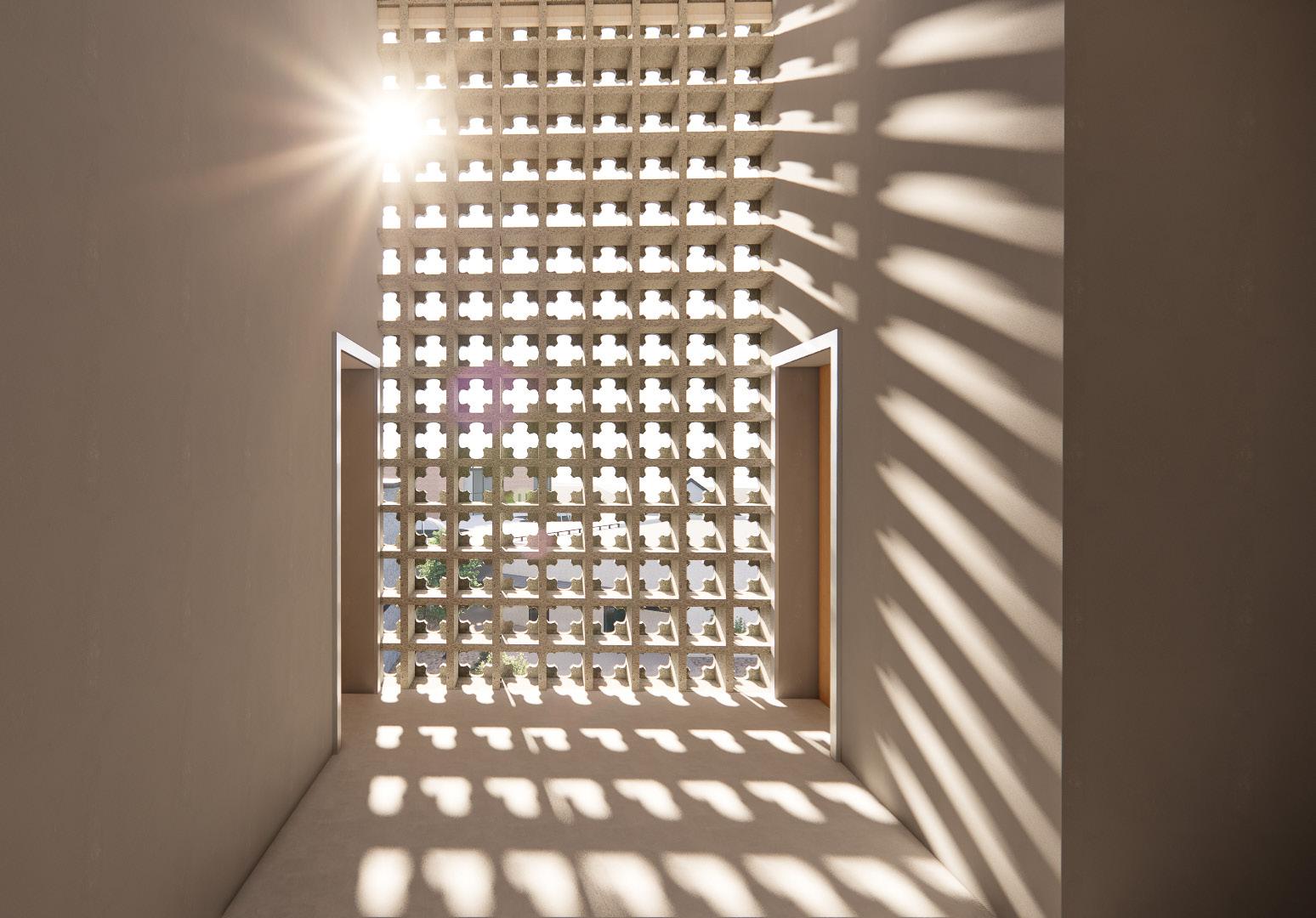
The prati diagram showcases the importance of the triad of the thesis, which comprises Congo, Hospital, and Climate. These elements respectively refer to the culture, the program, and the sustainability aspect of the building design.
This conceptual model is better suited for the design development phase because it aligns closely with the four key pieces of information: the three modules, the individual building, and their interconnectedness facilitated by Radiology. As the model begins to establish connections between these elements in the middle, it effectively bridges the various components of the program.
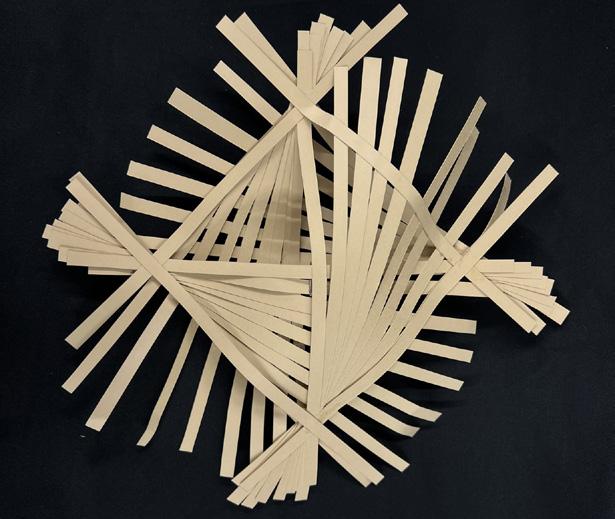
The diagram below locates both the modules and the individual buildings. The two modules are the same, and the third one is rotated at 180 degrees to create cohesiveness for the facility.
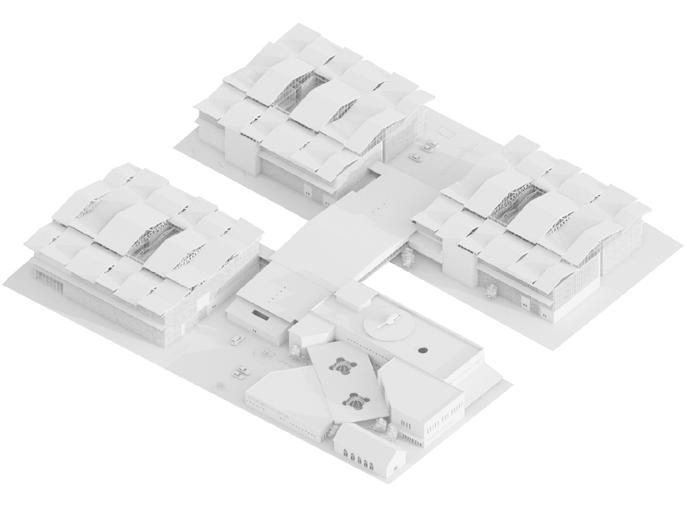
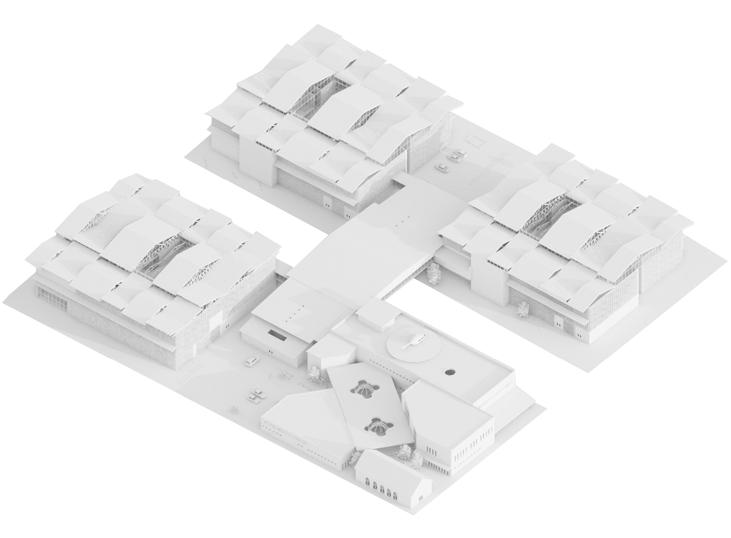
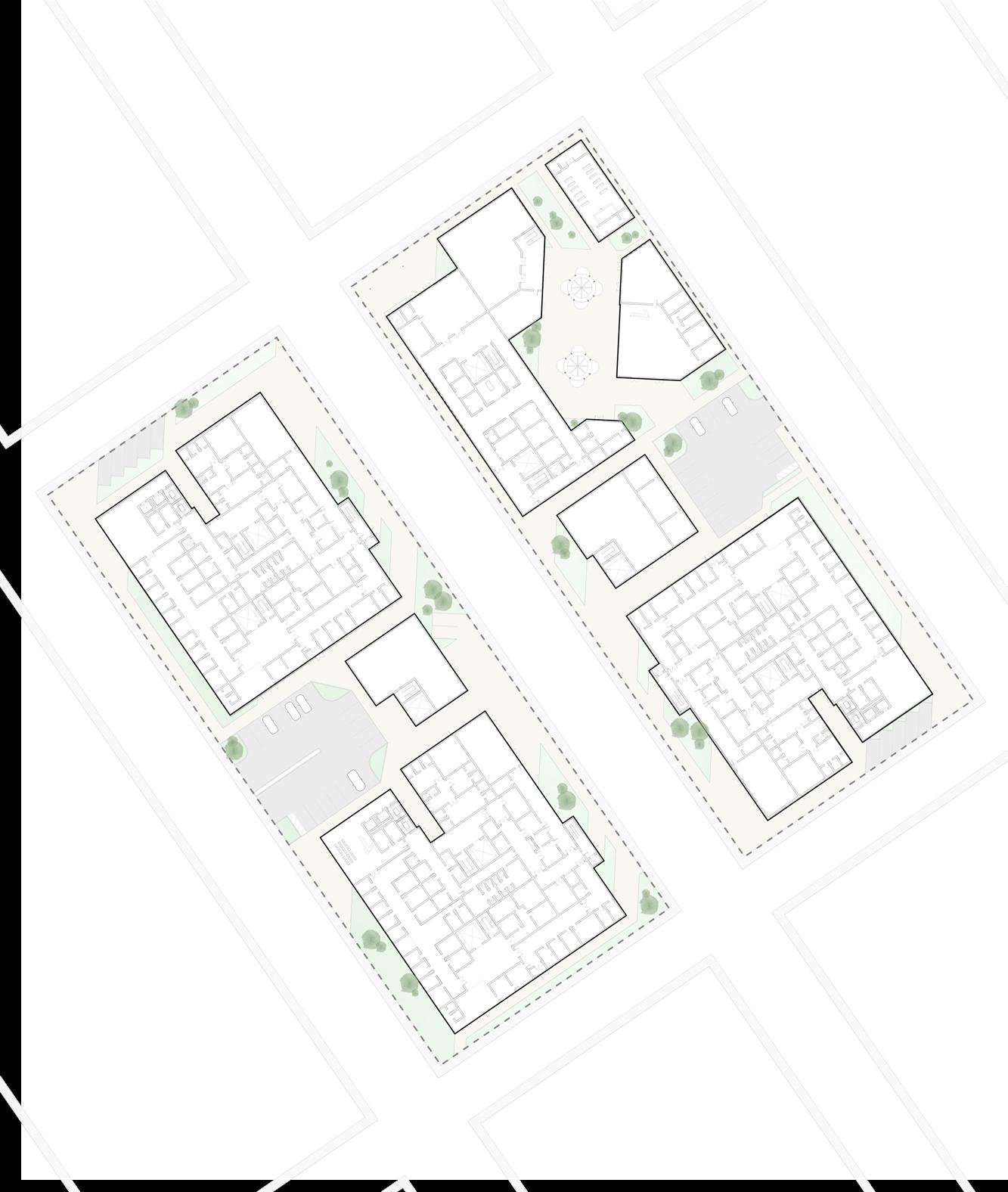
The site plan visually outlines vegetation, parking areas, and communal spaces within the project area. Given the challenges of maintaining vegetation in Congo’s tropical climate, there’s a deliberate effort to limit its presence. This decision aims to balance the benefits of greenery with practical maintenance considerations. However, where feasible, strategic placement of vegetation enhances the environment and fosters a connection to nature while respecting the constraints of the climate.
Despite these limitations, careful consideration is still given to the placement of vegetation within the site plan. Where possible, green spaces are strategically integrated to enhance the overall quality of the environment and promote a sense of connection with nature. such as in the inside community space.
All the public entrances are located on the perimeter of the site to provide a better service for each module and individual building.
All the service circulation and staff entrances are provided in the middle to limit the views of such vehicles, and the mortuary vehicle circulation in particular.
The radiology of the building becomes the connecting point for all the buildings, creating a holistic picture of the facility.

The clinic, laboratory, blood bank, operating theater, and related services are strategically situated on the first floor of the facility. This decision is driven by several considerations. Firstly, it facilitates convenient access for patients, allowing them to quickly reach essential medical services without navigating through multiple floors. Additionally, patients who are not staying in the hospital or visiting can easily depart after receiving treatment, minimizing unnecessary exposure to other areas of the facility.
Moreover, this layout enhances operational efficiency by streamlining access for medical professionals to both patients and necessary equipment, particularly during surgical procedures. By consolidating key medical services on the first floor, the facility optimizes workflow and ensures prompt delivery of care.
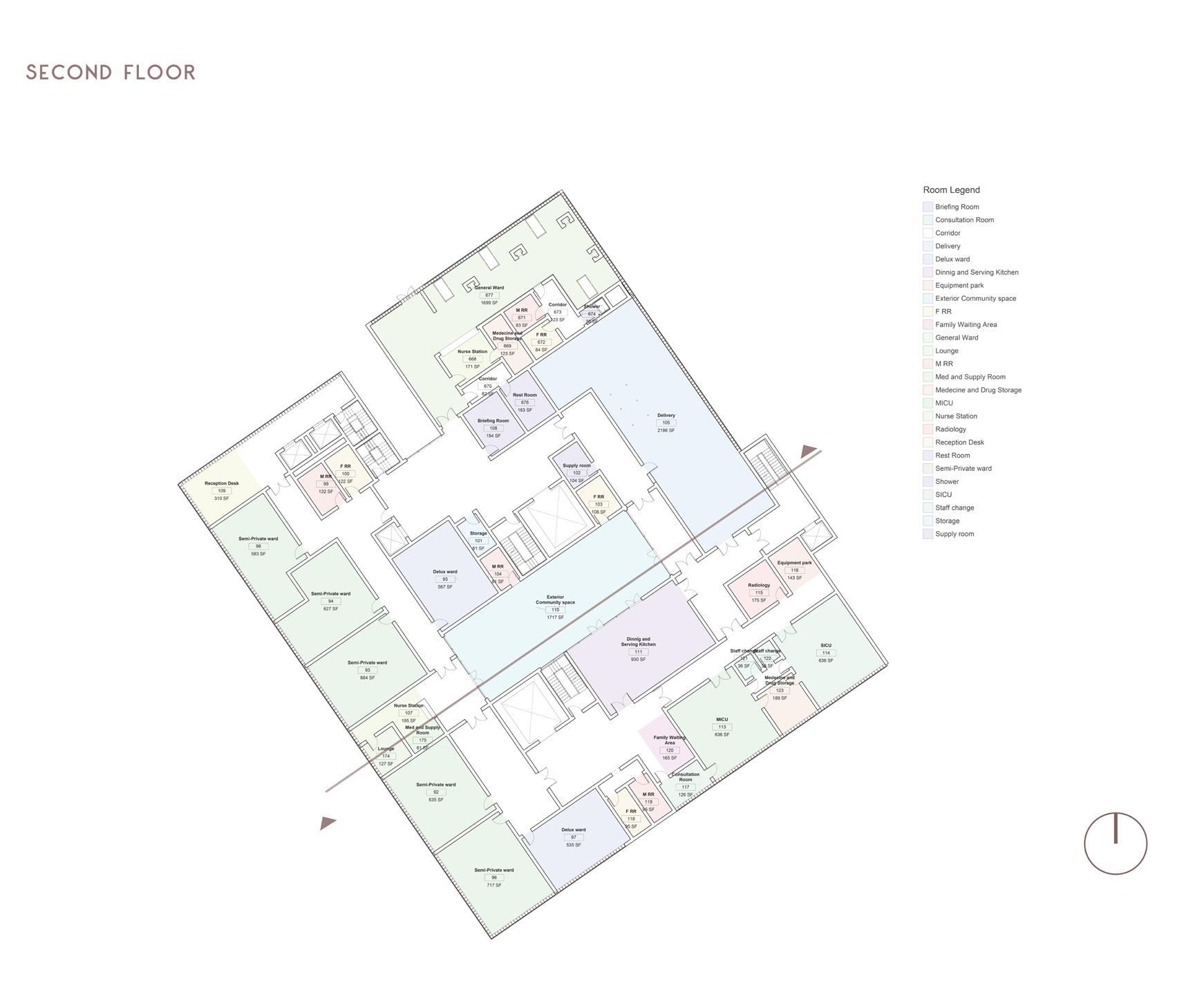
This level serves as an intermediate space, featuring semi-private wards and patient rooms. Additionally, it houses two ICUs and a delivery department. Moreover, the second floor boasts a community space where patients can interact with one another. A dining room is strategically positioned on this floor to maximize the benefits of natural light from both the first and secondfloor heights. This communal area not only fosters social interaction but also serves as a valuable source of natural light, addressing the program’s need for illumination on these levels.
Each patient room on this floor has access to natural light and takes advantage of the filtered view outside the facility.

The third floor is designed to offer a higher level of privacy, as it exclusively features patient rooms, offices, and the pharmacy. With its focus on providing a serene environment, this floor maximizes the use of sloped roofs to invite natural light into the space, creating a bright and airy atmosphere. Additionally, it caters to VIP clients by offering more luxurious accommodations and services. These rooms are generously sized and appointed with upscale furnishings to appeal to discerning clientele. Given the financial considerations of the project, generating revenue through client investment is essential.
Given the financial considerations of the project, generating revenue through client investment is essential. Consequently, the third floor is strategically tailored to meet the preferences of clients seeking premium furniture around their rooms and are willing to invest in the Hospital.
Diagram

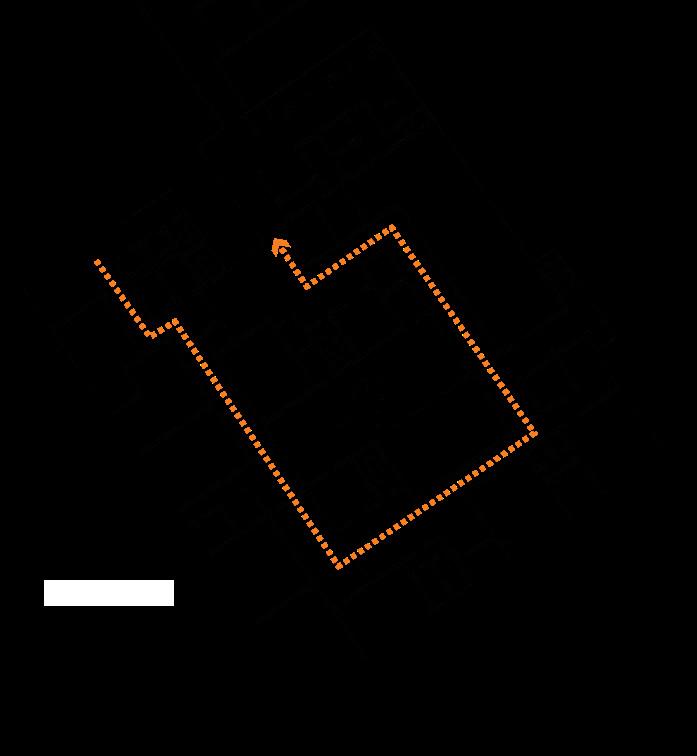
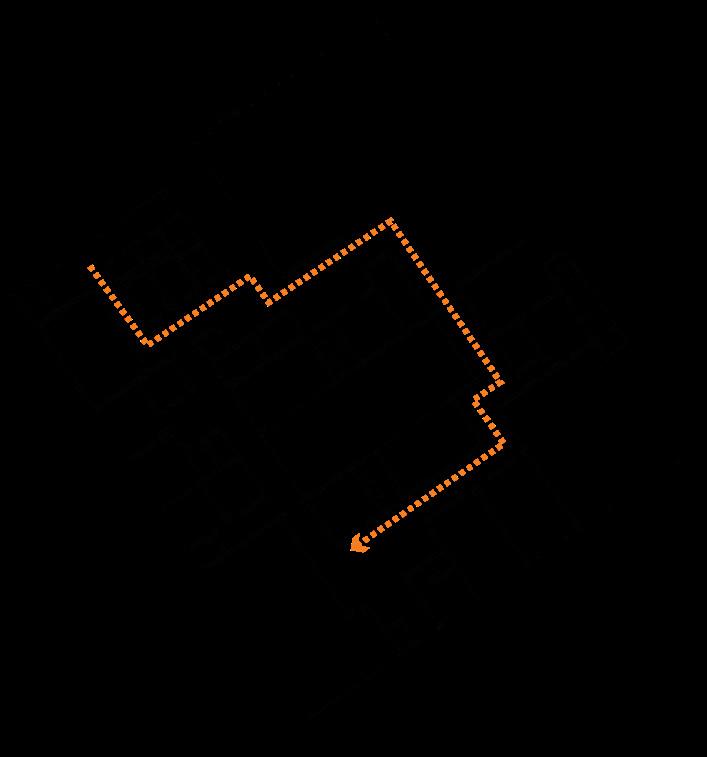
Level one demonstrates how easy it is to move around on the first floor. If someone is at the hospital for a clinic visit, they can simply enter and exit. If they need surgery, they go through the whole process in the Operating Theater.
On the second floor, you’ll find patient rooms, ICUs, a delivery area, and doctors’ offices. The layout for moving around is straightforward, much like on the first floor.
The top floor has a different layout for moving around to fit the administrative part of the program. However, all the rooms on this floor are for patients.
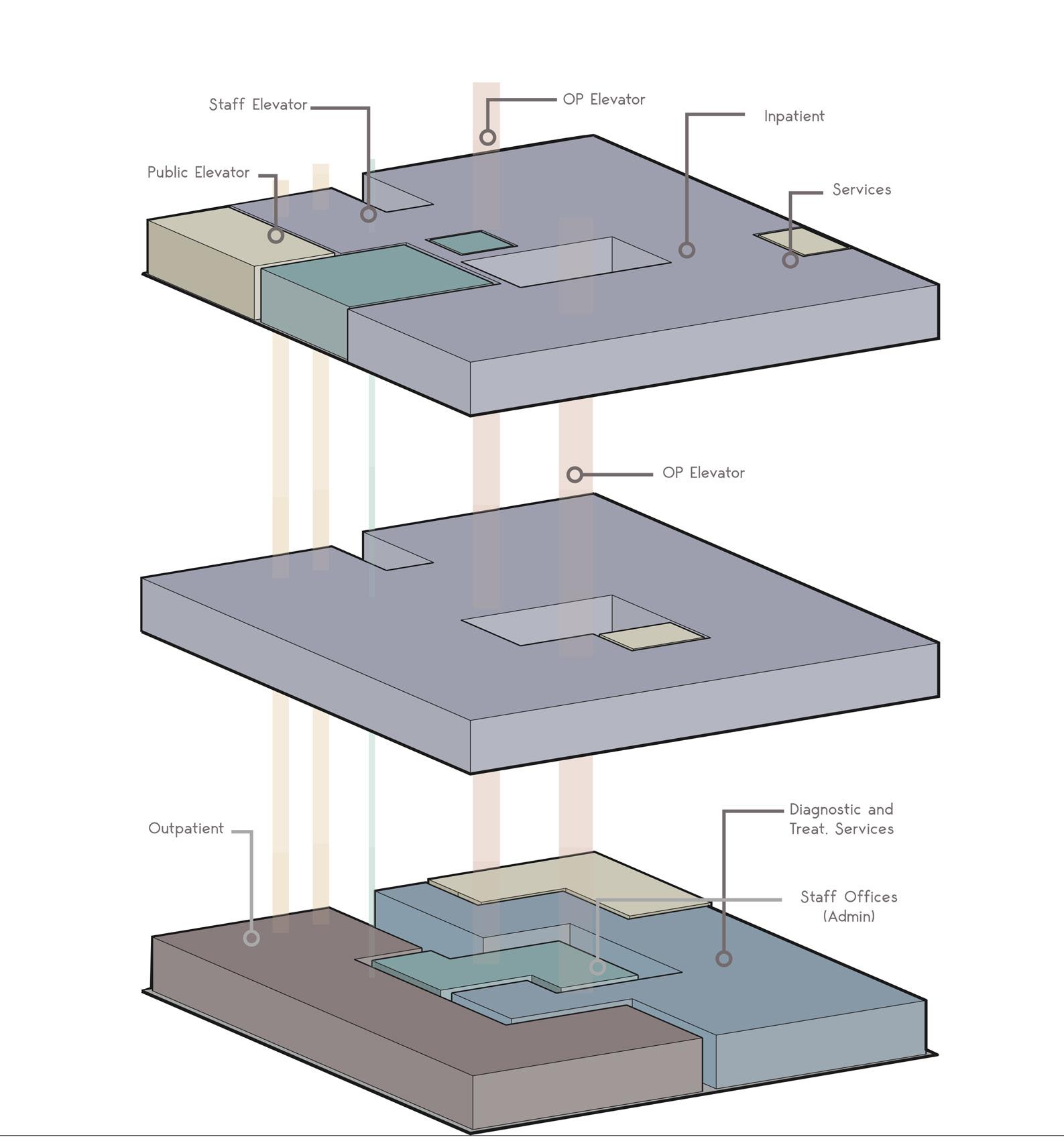
The massing, which illustrates the building’s overall form and layout, offers insight into how people navigate within the structure. Notably, distinct entrances are designated for doctors and visitors, while a separate pathway is dedicated to service-related activities.
This intentional separation of circulation pathways serves a dual purpose. Firstly, it enhances efficiency by streamlining movement within the building. With designated pathways for different user groups and functions, individuals can navigate the space more smoothly, minimizing congestion and optimizing workflow.
Secondly, the segregation of circulation pathways promotes clarity and organization. By clearly delineating routes for doctors, visitors, and service personnel, the building layout facilitates intuitive navigation, ensuring that individuals can easily locate their intended destinations without confusion.
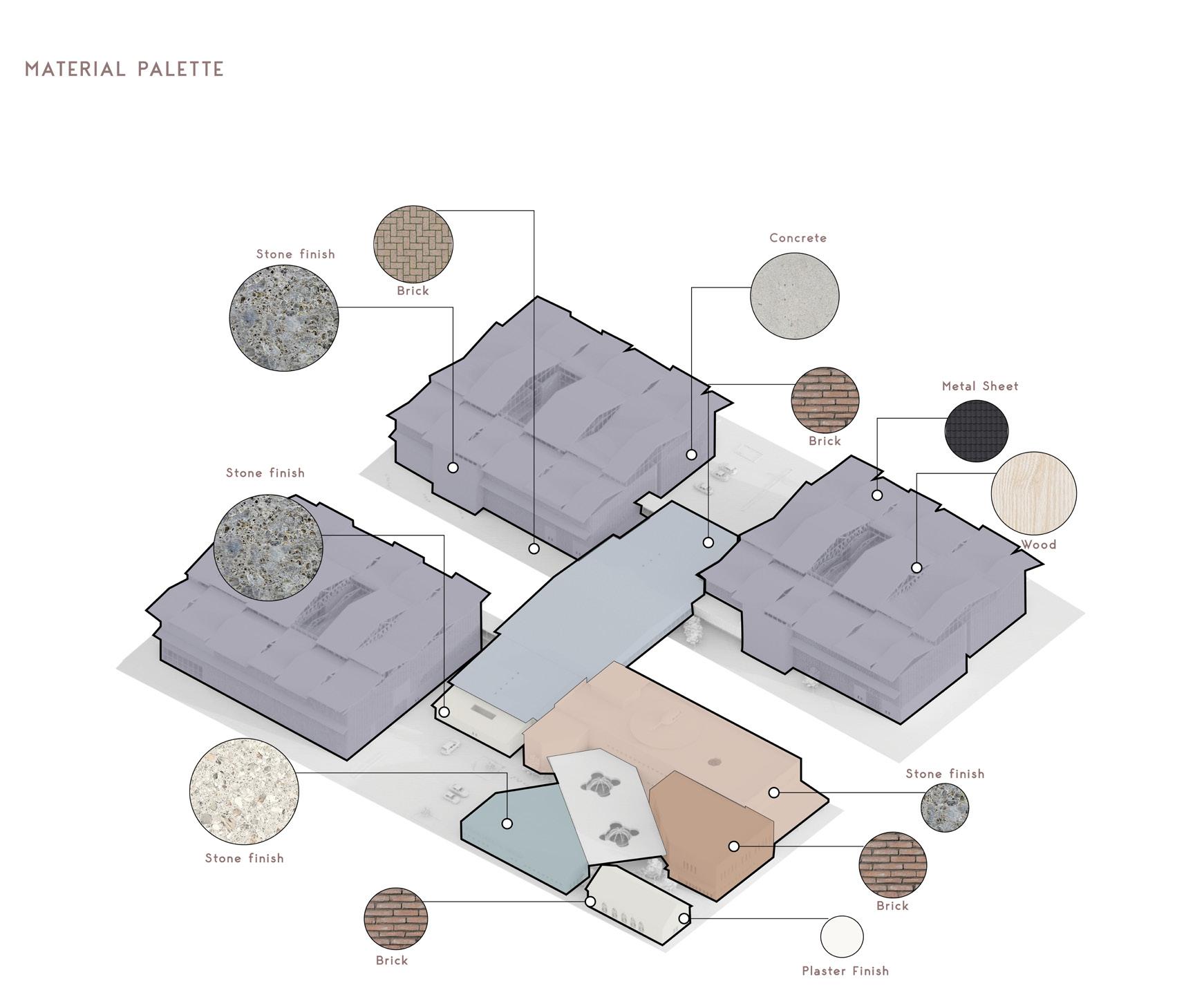
The building’s design incorporates a diverse range of materials across its facades, serving not only practical purposes but also enhancing wayfinding throughout the complex. By strategically selecting materials that are both locally sourced and culturally resonant with Congo, the project achieves a balance between cost-effectiveness and cultural expression. For instance, bricks are chosen for educational spaces, the church, and radiology areas due to their suitability for these functions. Furthermore, the use of concrete and stone finishes on the modules and emergency building
not only adds durability but also facilitates rapid drying, particularly important in Congo’s humid climate. Additionally, the implementation of concrete breeze blocks along the building’s perimeter serves a dual function: allowing natural light to filter through while effectively preventing humidity buildup.

The building incorporates sloped roofs on the modules to efficiently drain rainwater away from the structure. Specifically, the V-shaped slope channels water to a dedicated roof where it is collected via pipes and stored underground. This water harvesting system is crucial, especially considering the scarcity of potable water in many provinces of the country. The aim is to utilize the sloped roofs to gather rainwater, which will then undergo treatment to produce safe drinking water for various uses within the building. Furthermore, the heart of the facility lies in its community space, strategically to foster social interaction
Effective communication plays a vital role in the recovery process, making community spaces essential. This important in African countries, where communal gatherings are common. Therefore, by providing designated areas for communal engagement, the building not only promotes social cohesion but also enhances the overall recovery of its occupants.

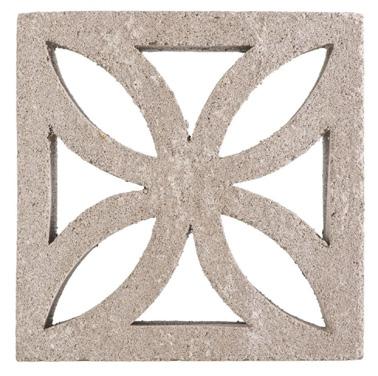
To generate the exterior envelope design with natural light and cost in mind, I draw inspiration from cultural ideas in Congo. Located in the copper belt region, Lubumbashi prompts the facade to embody the concept of copper and minerals from the Congo, emphasizing the country’s invaluable resources. Malachite serves as the centerpiece for the envelope design, highlighting regional resources. Beginning with the concept of a breeze block wall, familiar to the people of Congo, the envelope design expands to meet the need for natural light, ventilation, and humidity reduction.
While the actual breeze block may not incorporate malachite, its symbolic placement represents the unity and strength of Congolese culture. With a depth of 12 inches, the block regulates the entry of natural light into the building. Glass within the block ensures transparency and structural integrity against rain and wind.
Some breeze blocks remain open at the top, allowing natural airflow as needed, while removable glass covers regulate airflow based on climatic conditions. To further integrate the essence of Congolese culture into the envelope design, elements such as traditional motifs or patterns can be incorporated into the glass or facade, serving as a homage to the rich heritage of the region. Additionally, the strategic placement of green spaces or courtyards within the building complex can enhance the connection with nature and promote a sense of well-being among occupants.
Moreover, the use of sustainable materials and construction techniques not only aligns with environmental consciousness but also reflects a commitment to preserving the natural beauty of the Congo. By amalgamating cultural inspiration, functionality, and sustainability,
the envelope design not only serves its practical purpose but also becomes a symbolic representation of the identity and aspirations of the Congolese people.”









The section provides a comprehensive view of how natural airflow circulates throughout the building, ensuring a fresh and comfortable environment. It illustrates how cross ventilation effectively moves air through the space, promoting air exchange and reducing the buildup of humidity. This circulation is particularly facilitated by the design of the community space, which acts as a central hub for air movement. Moreover, the community space serves as a source of abundant natural light, which not only illuminates the hospital but also creates a welcoming atmosphere.
To regulate the influx of sunlight, a sun shading device is incorporated into the community space, ensuring optimal lighting conditions while minimizing glare and heat.
Furthermore, the integration of natural light into other areas of the program within the modules enhances the overall healing environment by providing a sense of openness and connection to the outdoors. This multifaceted approach to lighting and ventilation contributes to a more comfortable and therapeutic experience for patients, supporting their recovery journey.
Additionally, the presence of vegetation in the community space not only enhances indoor air quality but also fosters a connection to nature, which has been shown to have positive effects on mental and emotional well-being. By incorporating greenery into the environment, the hospital promotes a holistic approach to healing that addresses the physical, emotional, and psychological needs of patients.
In summary, the design strategies implemented within the building prioritize patient comfort, well-being, and healing. Through thoughtful consideration of airflow, lighting, and vegetation, the hospital creates a nurturing environment that promotes healing and supports the holistic health of the Congolese community it serves.The effectiveness of the roof shape becomes evident when we observe how water flows from one roof to another. The slope and design of the roofs are specifically engineered to facilitate efficient drainage, ensuring that rainwater is effectively directed away from the building structure.
This prevents water accumulation and potential damage to the roof and surrounding areas, safeguarding the integrity of the building over time.
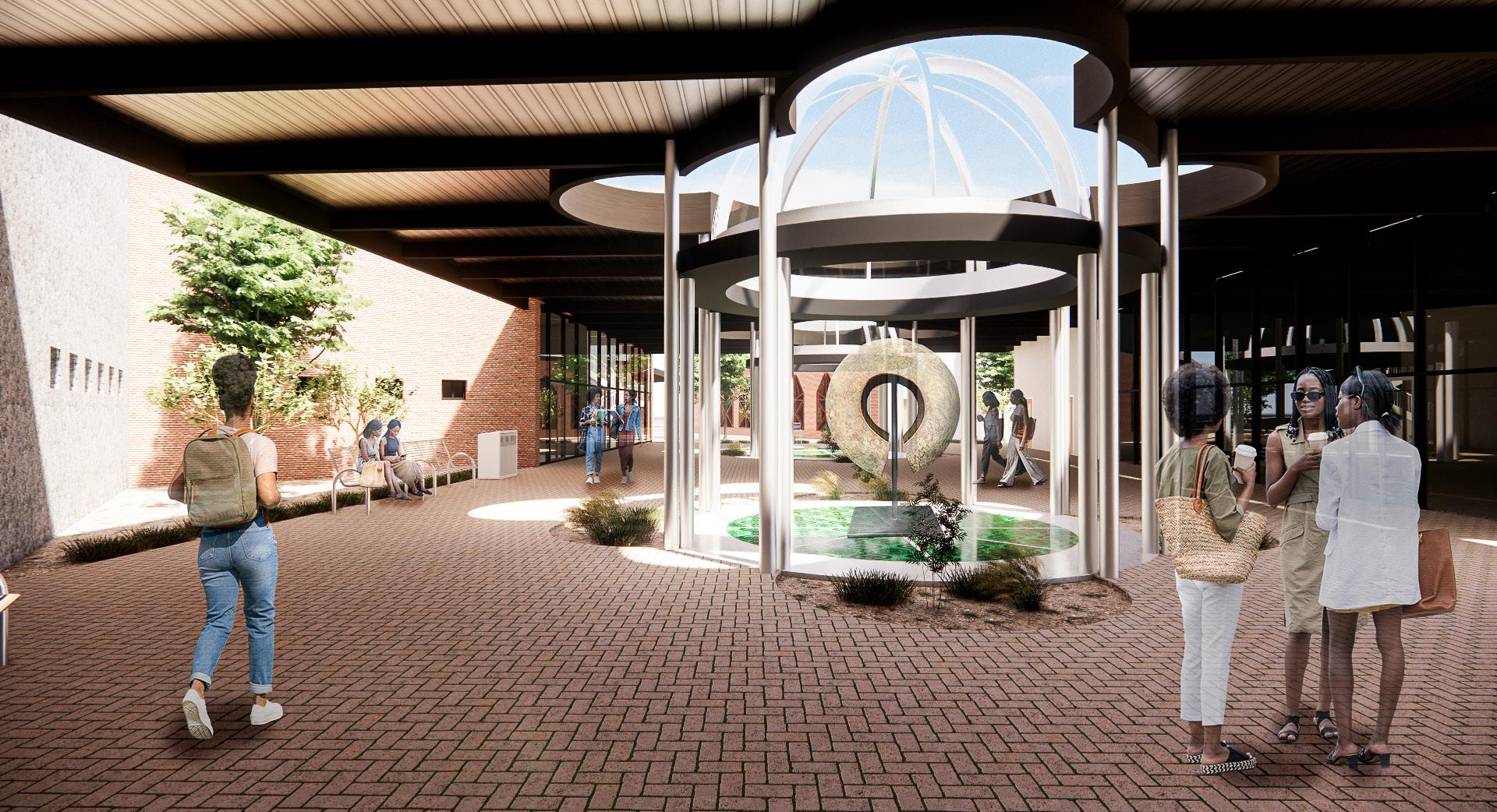

The exterior gathering space serves as a platform for the community to interact with the hospital. Additionally, it houses the educational component of the program, featuring a public library accessible to the community. Covered to accommodate gatherings during both rainy and dry seasons, this space acts as a shelter for community engagement. It provides a venue for events such as art expos or markets, which not only enrich the local culture but also stimulate economic activity both within and outside the hospital building perimeter.
The outside of the building resonates with the community surrounding it through the use of different materials that teach Congolese culture.
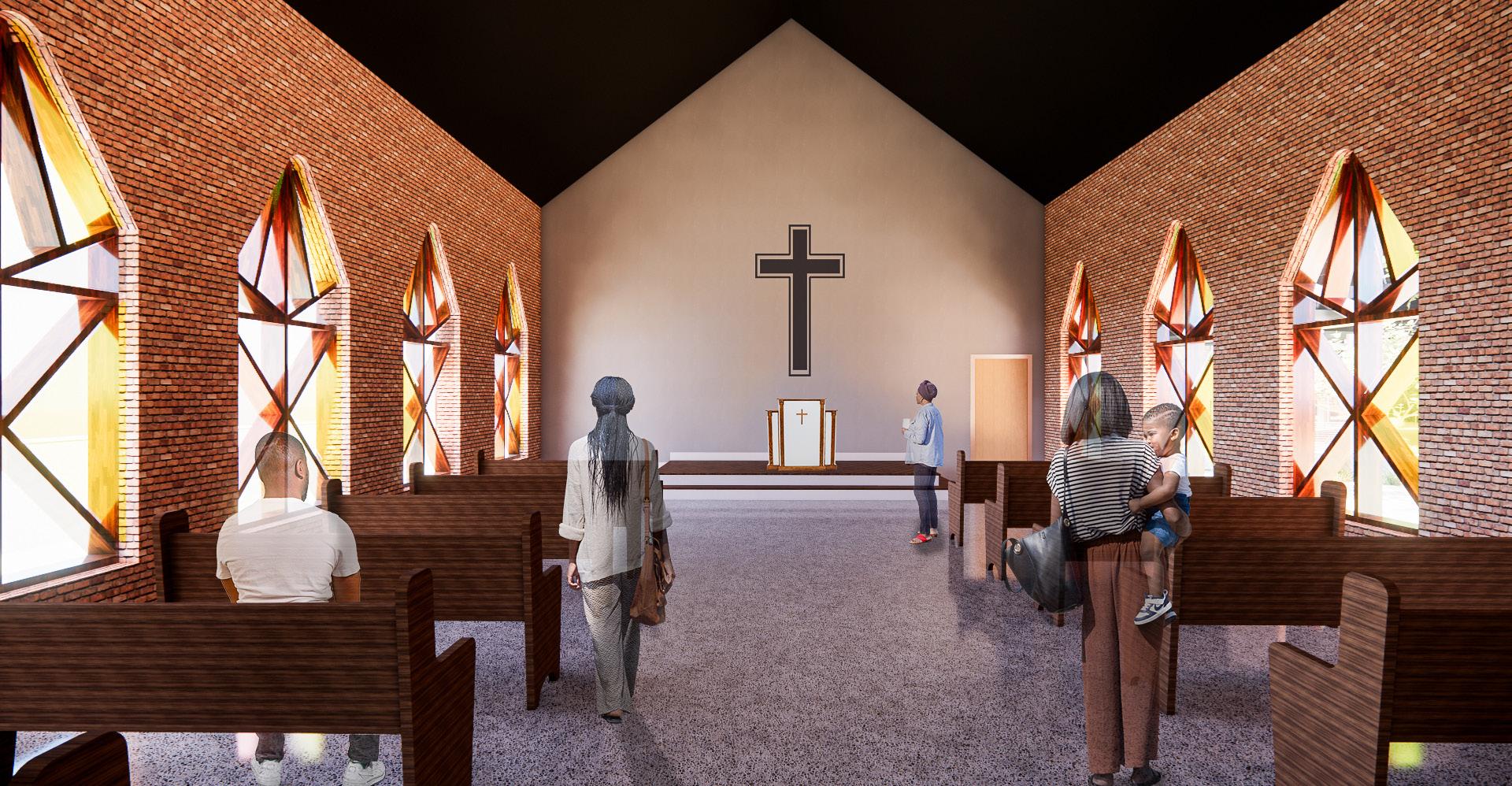

With approximately 96% of the population identifying as Christian, the chapel holds significant importance within this facility. It serves as a sanctuary for patients’ families seeking solace in prayer and connection with God. Positioned at the corner of the facility, the chapel reflects the African tradition of communal prayer, as it will host public masses on Sundays for the community. Additionally, the General Administration building stands out with its white exterior, serving as the main entrance to the facility for patients and the community, ensuring easy accessibility and visibility.
The hospital chapel and administration are strategically positioned to better serve the community, as they are adjacent to the outside community space. This proximity enhances interaction and engagement between the community and Stone Medical Center. Morover they location allows the community to build trust and transparency toward the hospital.
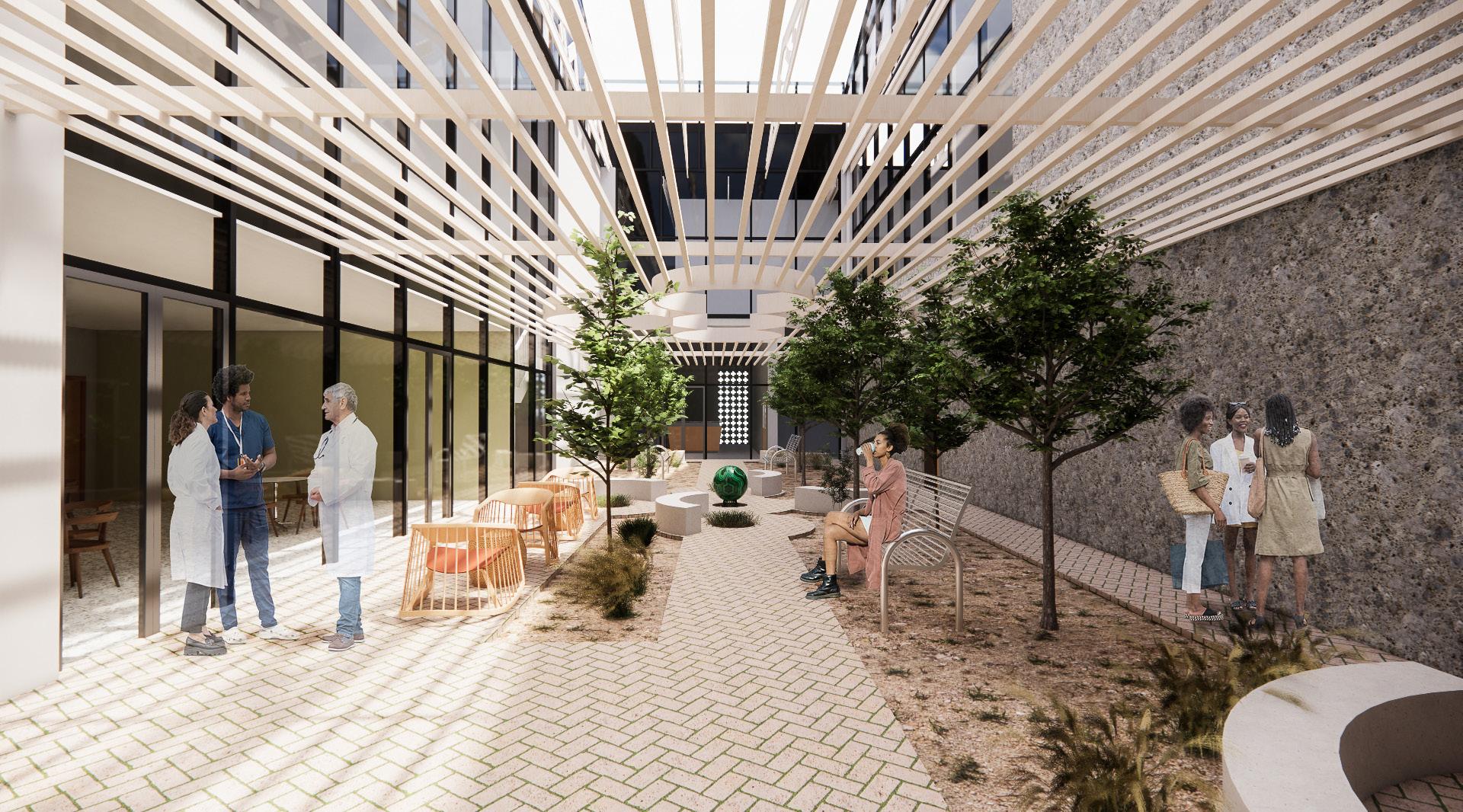
Community spaces play a vital role in African hospitals, serving as hubs for social interaction, support, and healing within the local context. These spaces are designed to facilitate connections among patients, families, and caregivers, fostering a sense of community and belonging.
In African hospitals, community spaces often serve multiple purposes. They provide areas for patients and their families to gather, share experiences, and offer each other support during challenging times. it is also a place for patient and Doctor interaction outside their patient rooms.
Moreover, community spaces in African hospitals contribute to holistic healing by addressing the social and emotional dimensions of health. They offer opportunities for patients to engage in recreational activities, participate in group therapy sessions, or simply find moments of respite amidst their medical treatment. By nurturing a supportive environment and encouraging social connections, these spaces promote mental well-being and resilience among patients.
Furthermore, community spaces are often integrated with natural elements, such as gardens or courtyards, to create calming and rejuvenating environments. Access to outdoor spaces allows patients to reconnect with nature, which can have therapeutic benefits and contribute to overall healing.
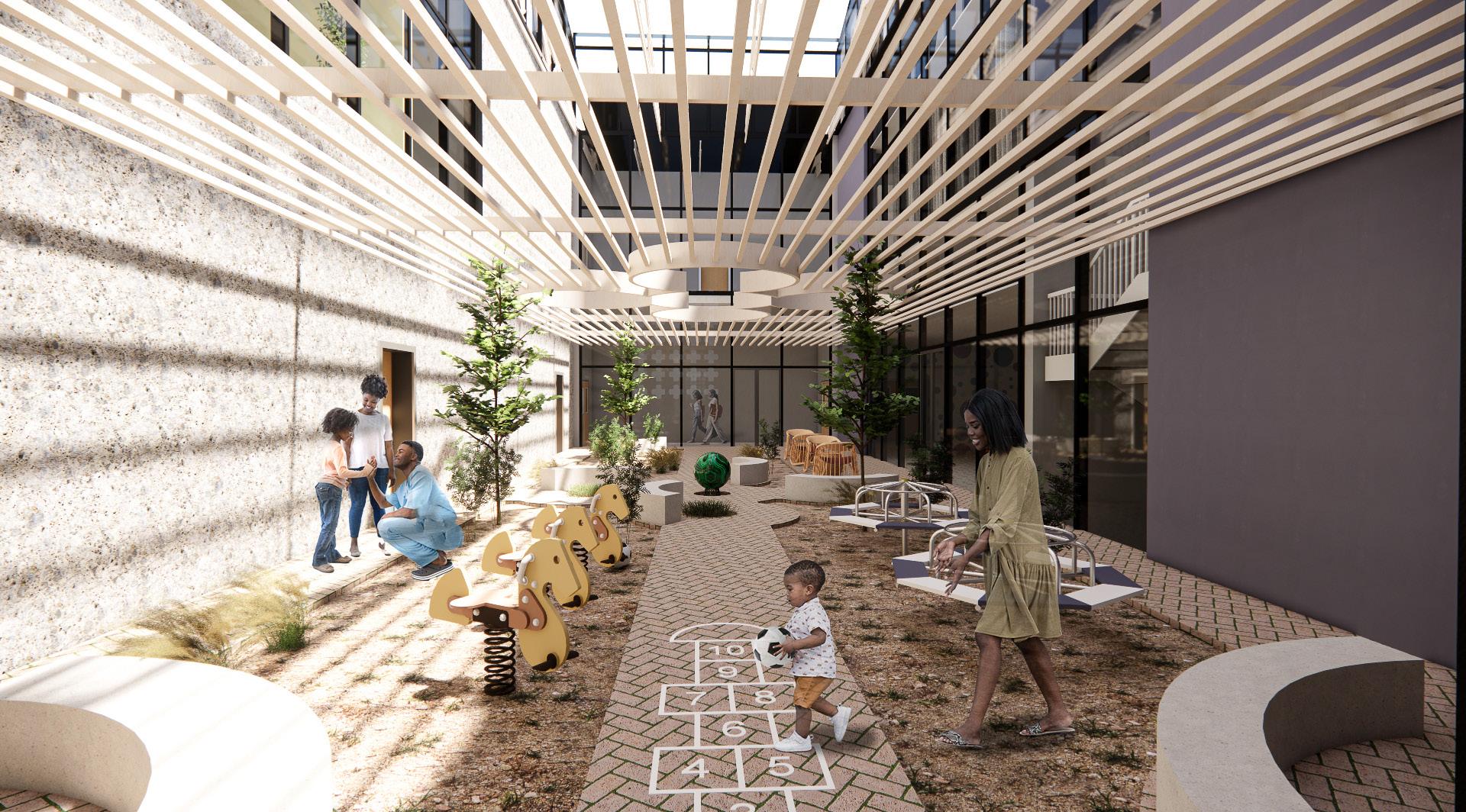
In African hospitals, community spaces designed specifically for children play a crucial role in fostering healing and well-being. These kid-friendly areas are carefully crafted to cater to the unique needs and preferences of young patients, offering a vibrant and playful environment compared to adult community spaces.
One of the distinguishing features of these children community spaces is the infusion of color and games. Bright, cheerful hues adorn the walls, furniture, and decor, creating an inviting and stimulating atmosphere that appeals to children’s senses and imagination.
Moreover, these spaces are equipped with a variety of games, toys, and interactive activities tailored to different age groups and interests. From board games and puzzles to arts and crafts stations, children have opportunities for play, creativity, and social interaction. These activities not only provide entertainment but also serve as valuable therapeutic tools, promoting cognitive development, emotional expression, and social skills among young patients. additionally,the pops of color not only uplift spirits but also contribute to a sense of joy and positivity during what can often be a challenging
By prioritizing the inclusion of color, games, and playful elements, kid community spaces in Congolese hospitals aim to alleviate stress, reduce anxiety, and promote a sense of normalcy for young patients and their families.
Semi-Private Room
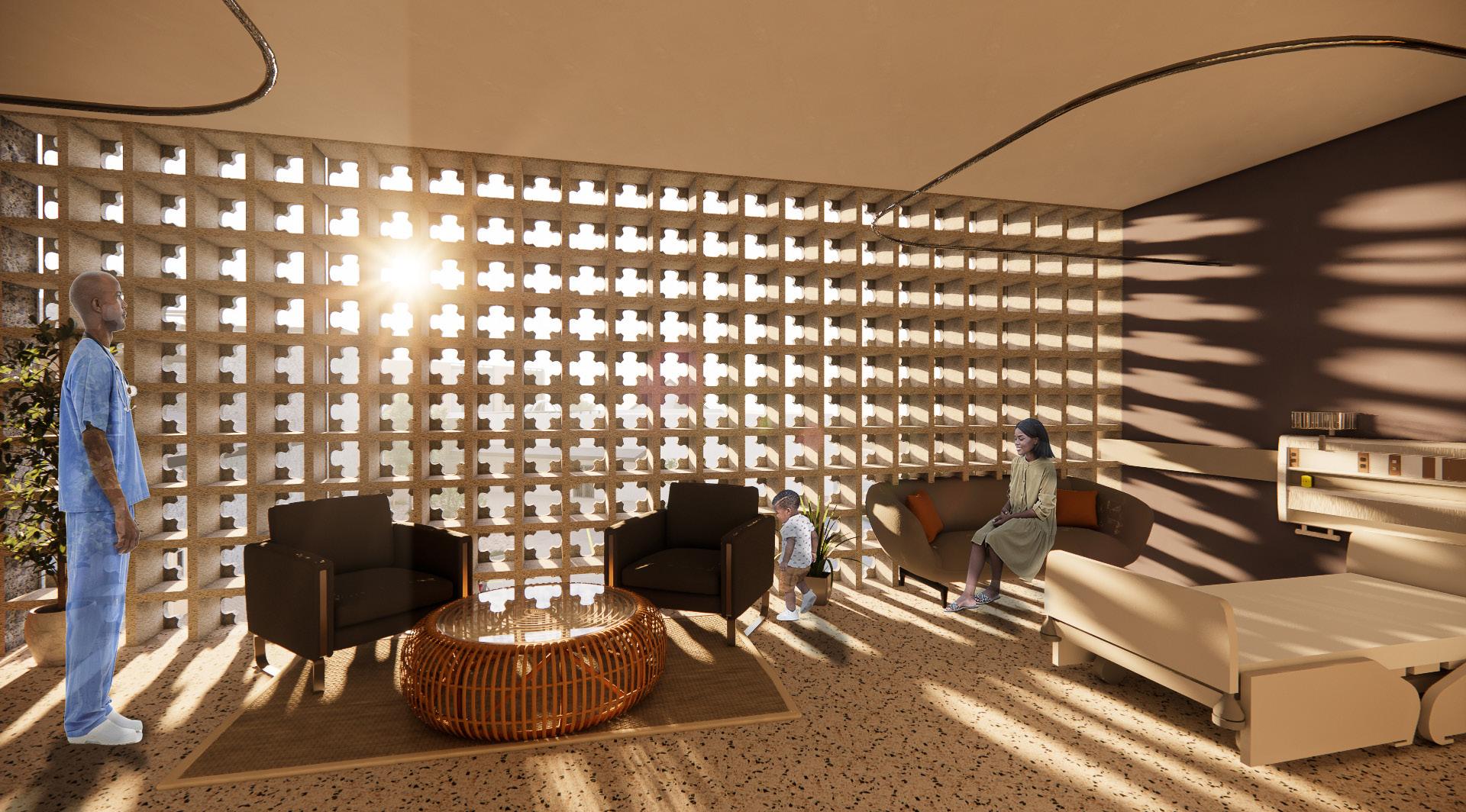
Semi-private rooms are strategically designed to maximize the infusion of natural light, particularly during key moments of the day, such as evening hours, as exemplified by the Northwest semi-private room in Module 1.
These rooms feature a shared family space, fostering meaningful interaction between patient families and encouraging patient-to-patient engagement. To afford patients the privacy they require, curtains are installed around each bed, ensuring discretion as needed.
Moreover, careful consideration is given to the layout, with beds positioned at a distance from each other to minimize sound transmission between occupants. The subtle play of shadows cast by the setting sun imbues the space with a serene ambiance, offering patients a tranquil view and fostering a sense of peace during their stay.Different flooring materials are utilized in the patient rooms compared to the corridor spaces to mitigate the sun’s glare within the rooms. This intentional choice is made to minimize the reflective effect of sunlight in the patient areas, as they already receive ample natural light.
By opting for flooring materials with lower reflectivity in the rooms, a more comfortable and visually balanced environment is achieved, enhancing the overall well-being of the patients.
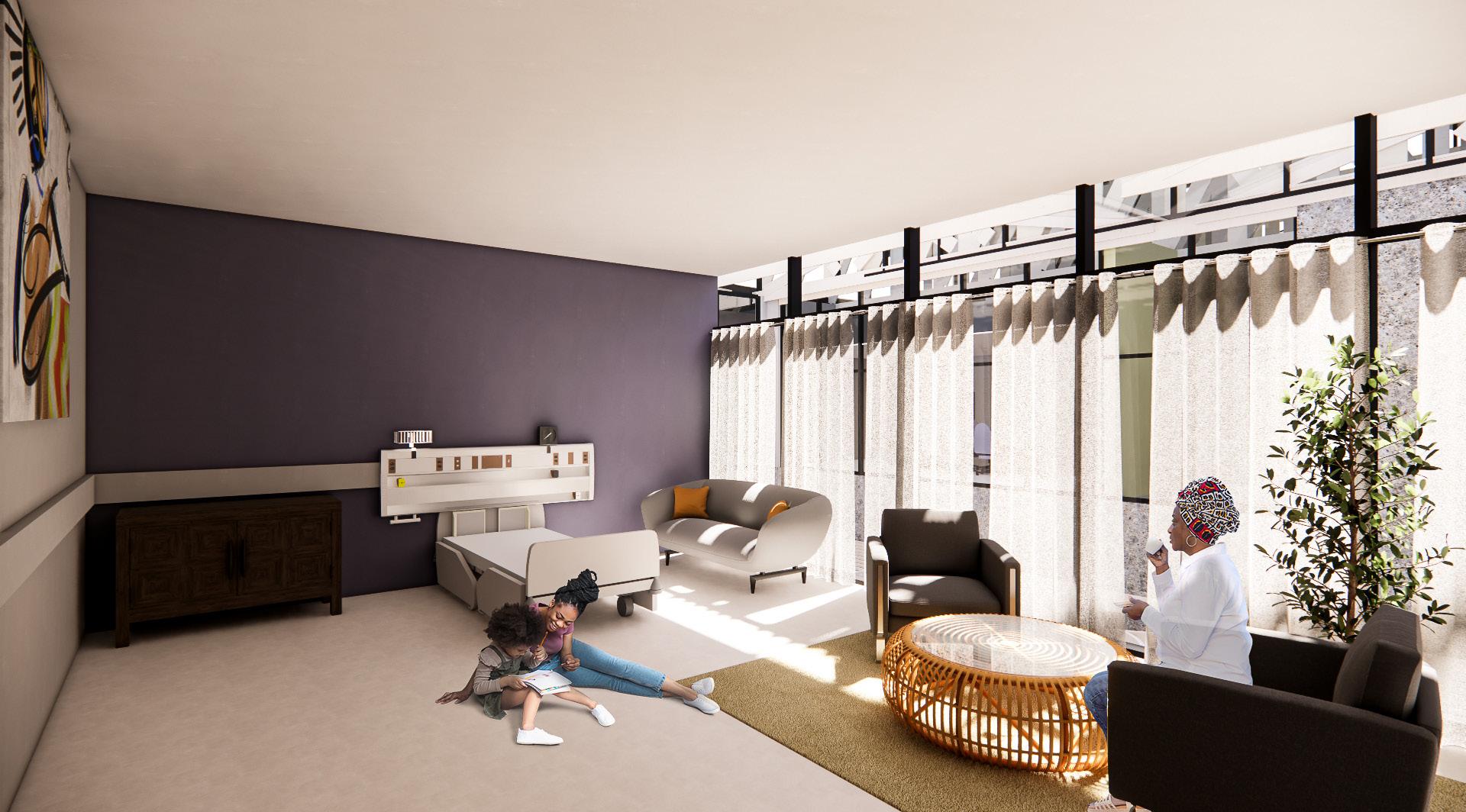
The private room adjacent to the atrium space, casting its light over the bustling community area below, fosters a profound connection between the patient and the surrounding community. Enhanced by the shading structure and the captivating malachite globe situated above the community area,
the view from this room is both tranquil and inspiring. Inside, the spaciousness of the private room accommodates a multitude of family members who gather to visit the patient. These distinctive features not only reflect and celebrate Congolese culture but also contribute to the healing journey of patients.
Furthermore, the placement of the private room by the atrium space serves to elevate the patient experience by providing a serene retreat amidst the bustling activity of the community area. With its strategic positioning and panoramic views, the room becomes a sanctuary where patients can find solace and respite, surrounded by the soothing ambiance of natural light and the gentle hum of communal interaction below. This intentional design fosters a sense of tranquility and connectedness, encouraging patients to feel integrated into the vibrant fabric of their community while still maintaining a sense of privacy.
In essence, the private room by the atrium not only embodies the rich cultural heritage of the Congo but also embodies a holistic approach to healing, where physical, emotional, and social elements converge to promote wellness and wholeness for patients in their care.
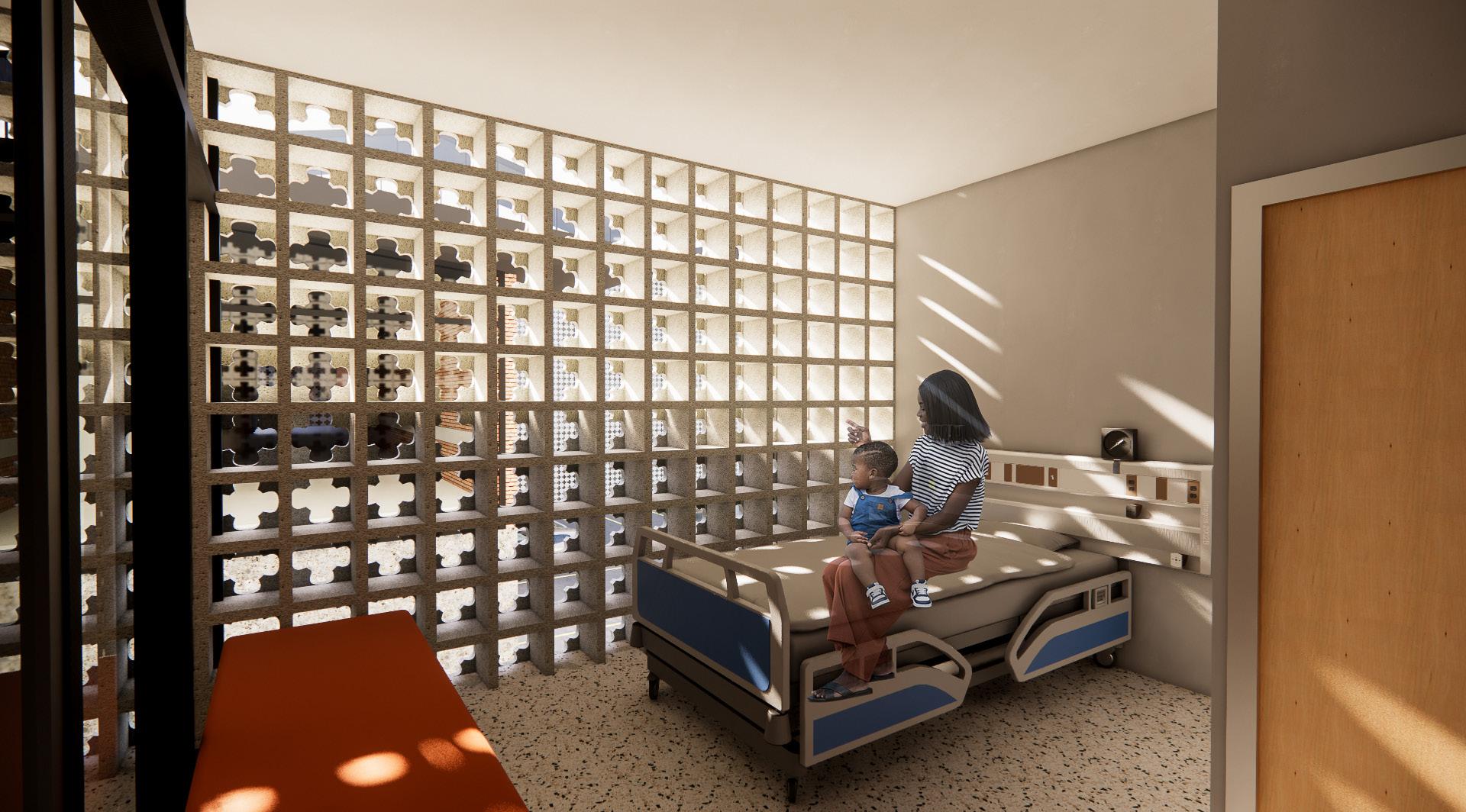

In the pediatric Intensive Care Unit (ICU), the inclusion of natural light holds profound benefits for young patients and their families. Natural light streaming into the ICU creates a soothing and comforting environment that promotes healing and well-being.
For children undergoing intensive medical treatment, the presence of sunlight serves as a source of hope and positivity, lifting their spirits and alleviating feelings of anxiety and fear. Additionally, natural light supports the body’s natural circadian rhythms, helping to regulate sleep-wake cycles and promote restorative rest, crucial for the recovery process. Moreover, for parents and caregivers spending extended periods in the ICU, access to natural light fosters a sense of connection to the outside world, reducing feelings of isolation and providing a semblance of normalcy during challenging times.
Overall, the integration of natural light in the pediatric ICU not only enhances the physical environment but also contributes to the emotional and psychological well-being of young patients and their families, fostering a healing atmosphere conducive to recovery.
Pediatric Ward
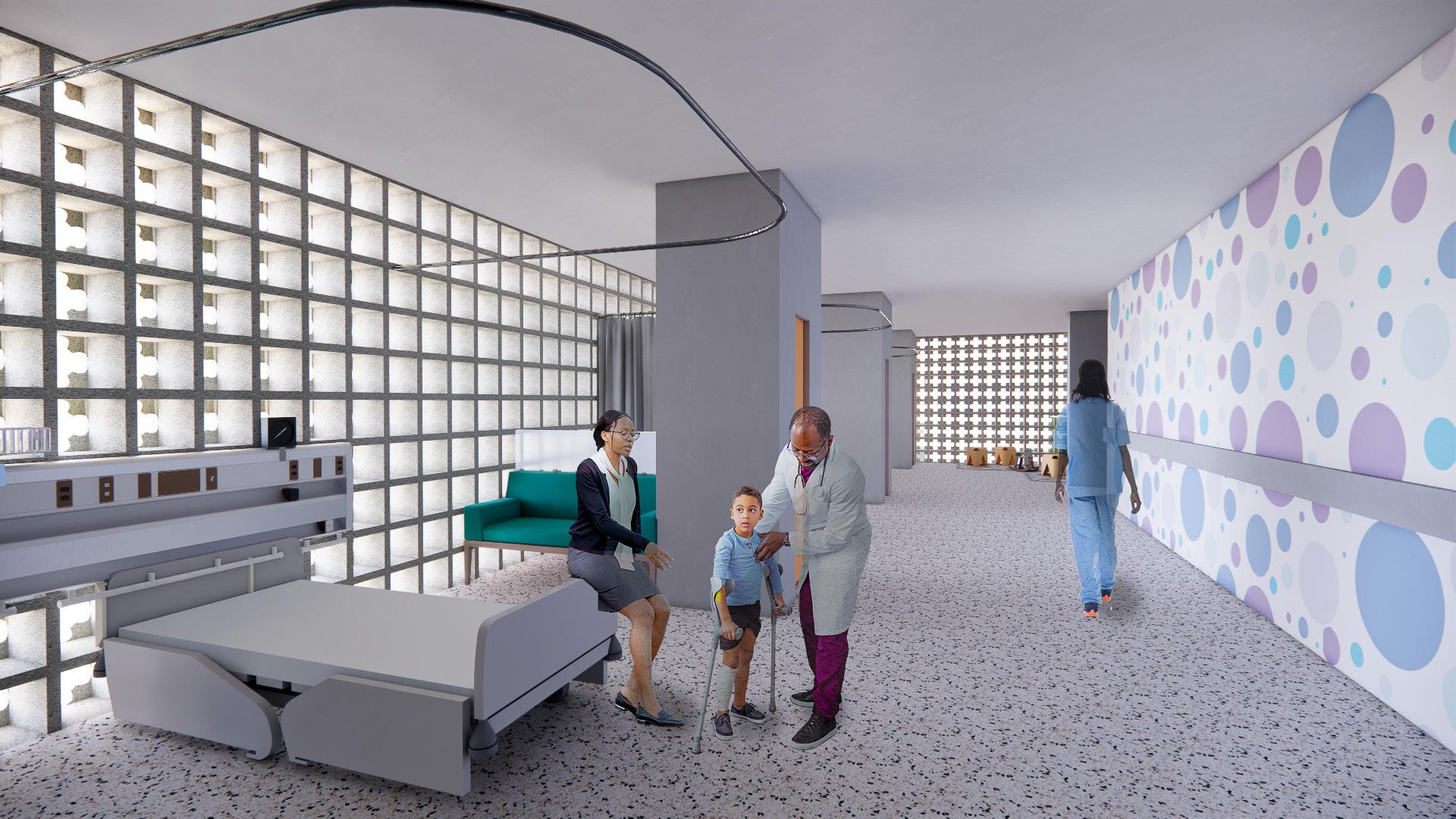

In the pediatric ward, as well as throughout all the wards, thoughtful design elements enhance the comfort and functionality of the space to better meet the needs of patients and their families. One notable feature is the incorporation of vibrant colors, which brighten the environment
Additionally, the inclusion of extra spaces between the beds allows for the placement of a sofa, providing a comfortable seating area for patients and their families. In the pediatric ward specifically, these spaces serve as an area where parents can sit or even sleep by their child’s bedside, Furthermore, partitional pillars are utilized to integrate shelving and a fridge, offering convenient storage for patients’ personal belongings and food items brought from home. This is particularly important in Congo, where patients receive homemade meals from family members,
Additionally, a dedicated room equipped with supplies and a microwavehave been added, ensuring the patient can warm up their food.. By incorporating these thoughtful design elements, the ward not only promotes physical comfort but also supports the emotional well-being and sense of home for patients and their families during their hospitalization.
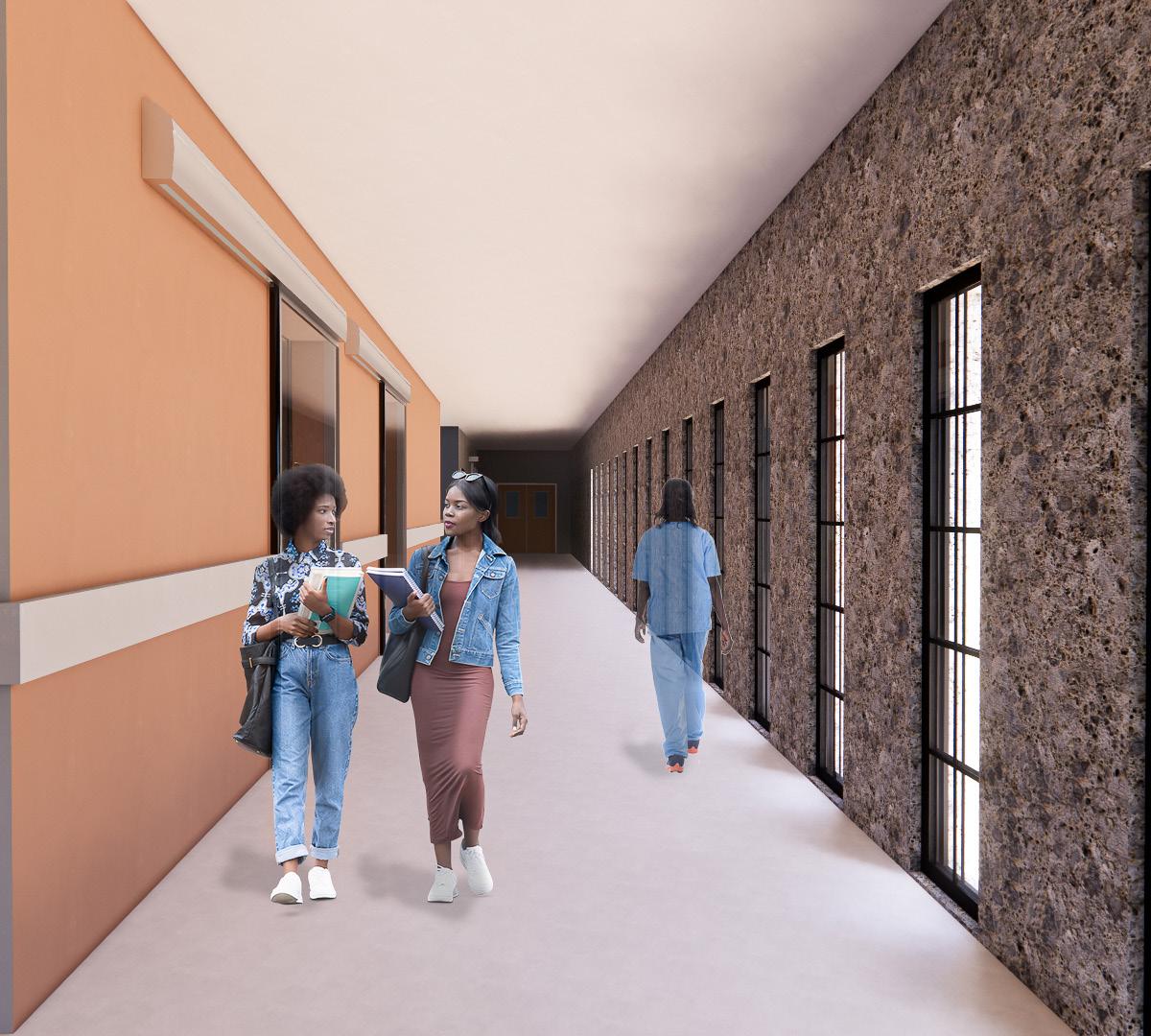
In the Emergency building, the hallway is thoughtfully designed to incorporate pockets of natural light streaming in through the windows. This deliberate integration serves to enhance the user experience by illuminating the space, creating a calming ambiance, and mitigating the often hectic atmosphere of the emergency department. Furthermore, these windows not only infuse the Emergency room with natural light but also ensure a balance between illumination and privacy for patients.
By allowing sunlight to filter through while maintaining discretion, the design fosters a healing environment that promotes both physical and emotional well-being for individuals seeking urgent medical care.
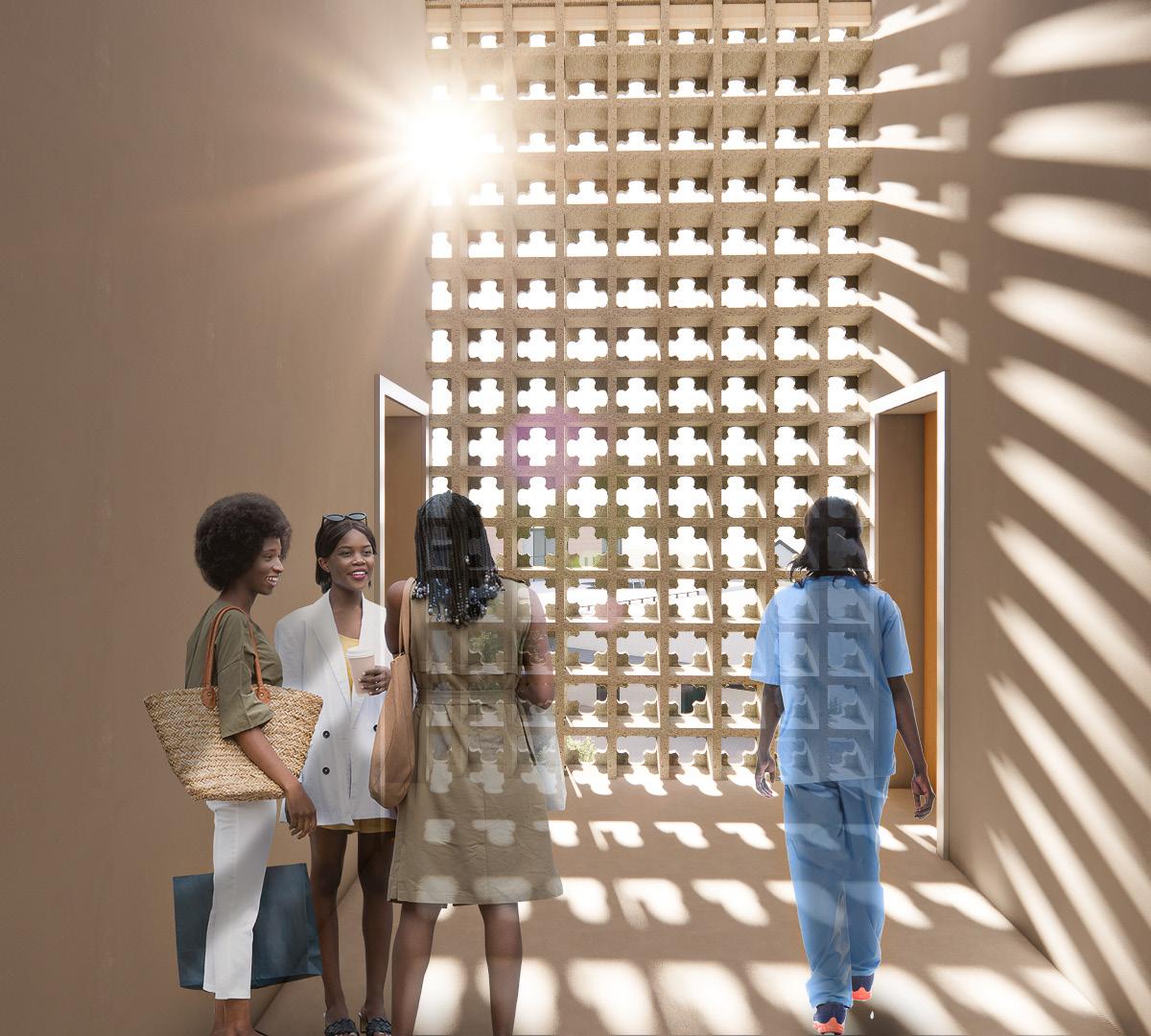
In Congolese hospitals, the abundant presence of natural light serves as a powerful source of upliftment for patients, caregivers, and staff alike. Streaming through windows, skylights, and open spaces, natural light infuses the environment with warmth, vitality, and a sense of openness. For patients confined to hospital beds, the gentle rays of sunlight filtering into their rooms can provide a welcome respite from the clinical atmosphere, lifting their spirits and fostering a sense of hope and comfort. Similarly, for caregivers, natural light creates a positive atmosphere, enhancing mood, and focusin their work.
The design of this hospital also connects to the biophilia to enhance green outside spaces for the patient. In Figure 31, we start seeing how this building addresses circulation using bridges in between buildings to help circulate from one building to the

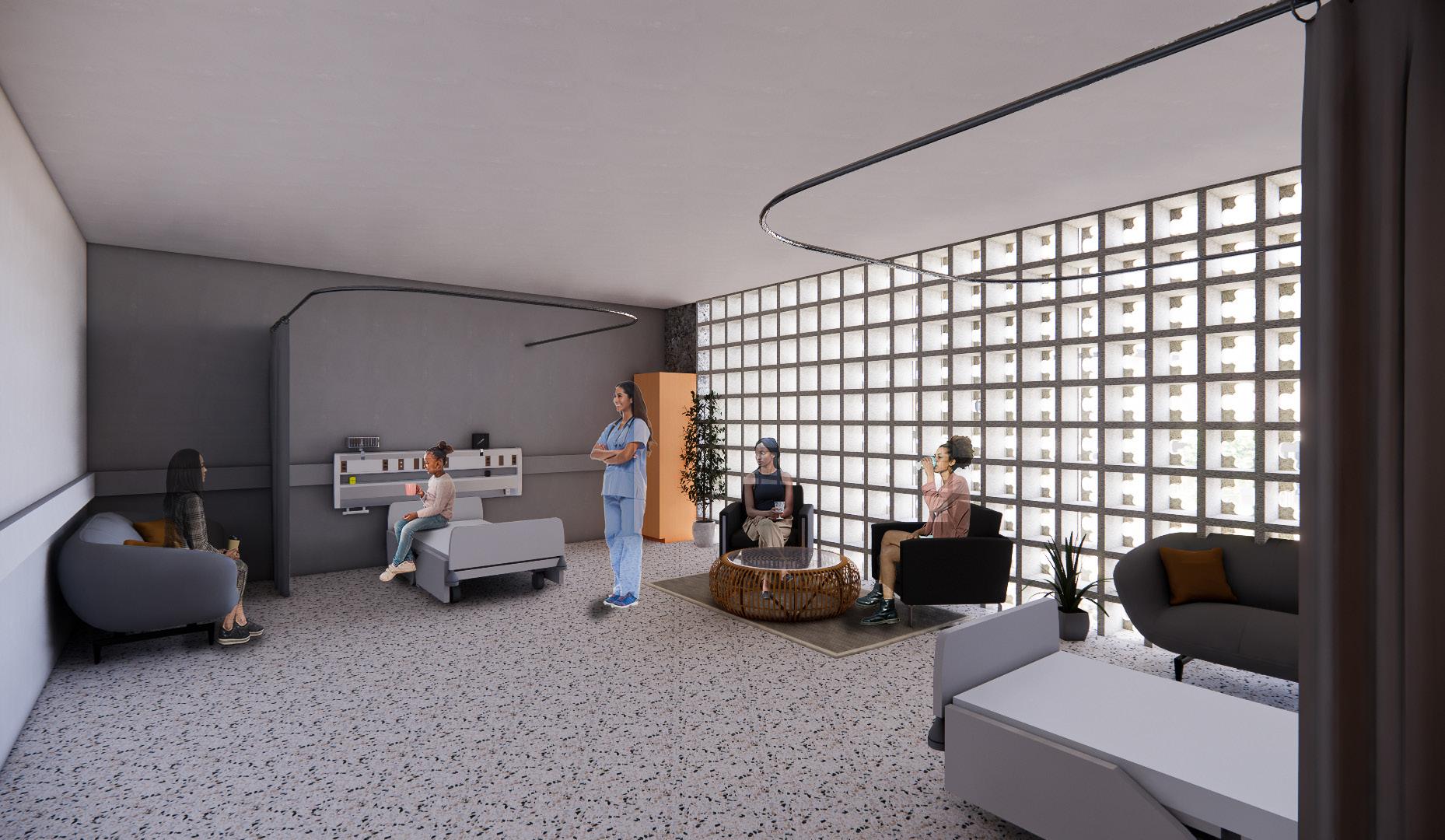
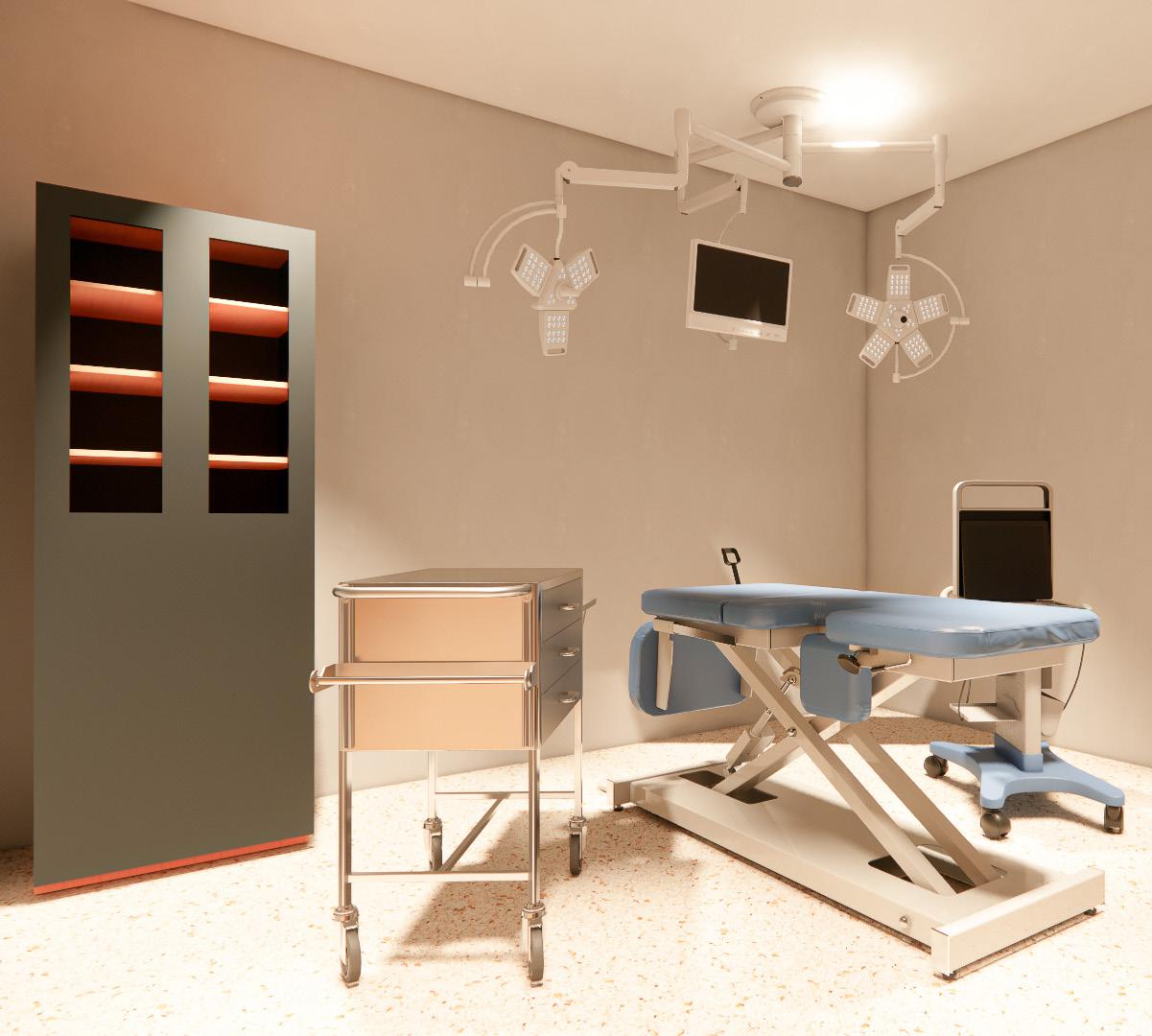
In the operating theater, precise control over the environment is essential to ensure surgeries are conducted safely and accurately. This means using air conditioning to keep the temperature steady and filter out any potential contaminants that could cause infections. Additionally, natural air and light are intentionally kept out to maintain a sterile setting and minimize distractions during procedures. These measures create a controlled and focused environment where surgical teams can work with confidence, enhancing patient outcomes and safety.
The operating theater is also placed on the first floor for all modules and located on the second floor of the Emergency department to allow easy access and get material as fast as possible.

The addition of a trauma room within the emergency department is a crucial development, especially in regions like the Democratic Republic of the Congo where such facilities are lacking. Currently, doctors face challenges in treating trauma patients due to the absence of dedicated trauma rooms. With this new addition, equipped with specialized tools and r
esources, healthcare providers can swiftly assess and treat severe injuries, improving patient outcomes and saving lives. This enhancement not only addresses a critical gap in the healthcare system but also enhances the overall preparedness of hospitals to respond to emergencies and mass casualty incidents.
The windows along the side hallway of the emergency room serve to flood the space with abundant natural light, creating a welcoming and comforting environment for patients and staff alike. Additionally, with the trauma rooms situated on the first floor, there is less necessity for outpatient (OP) facilities on this level of the emergency department. This design consideration optimizes the use of available space, ensuring efficient workflow and resource allocation within the facility.
The choice of materials in the emergency care building is crucial for creating a culturally welcoming and safe environment for patients. By incorporating materials that reflect the local culture and prioritizing safety, the building fosters a sense of comfort and security for patients who may not be familiar with such healthcare settings. This approach ensures that patients feel supported and cared for both physically and emotionally in the facility.
Proper ventilation plays a critical role in mitigating humidity and addressing poor sanitary conditions within buildings. Therefore, an analysis was conducted to ensure the building was designed to respond to the comments mentioned in the doctor’s survey. Because adequate ventilation can:
- Helps to regulate indoor humidity levels by removing excess moisture from the air. High humidity can promote the growth of mold, mildew, and bacteria, leading to issues such as dampness, musty odors, and potential health hazards. By facilitating the exchange of indoor and outdoor air,
Excessive condensation can promote the growth of mold and mildew, cause structural damage, and compromise indoor air quality. Adequate ventilation helps to reduce the risk of condensation by regulating indoor humidity levels and promoting air circulation.
ur facility is meticulously designed to facilitate the ingress and egress of air without inducing humidity. This strategic design approach is crucial to ensure optimal conditions for patient healing within the hospital environment.
where patients can experience improvements in their health outcomes, as opposed to facing exacerbation or complications during their stay. The subsequent study was conducted within the confines of a patient’s room, with the primary objective of assessing the adequacy and efficiency of airflow. This investigation was undertaken as part of our ongoing commitment to ensuring optimal environmental conditions within healthcare settings.
This study represents a crucial component of our continuous quality improvement efforts, as it provides invaluable insights into the performance of our ventilation ventilation helps to maintain a comfortable and healthy indoor environment.
- Helps to prevent condensation from forming on indoor surfaces. Condensation occurs when warm, moist air comes into contact with cooler surfaces, leading to the formation of water droplets.
By preventing the buildup of excess moisture, we aim to create a conducive atmosphere where patients can recuperate effectively, rather than being exposed to conditions that may impede their recovery. This focus on moisture control is essential in fostering a healing environment
systems. By identifying any potential deficiencies or areas for enhancement, we can proactively address concerns and implement targeted interventions to optimize airflow conditions throughout the facility.
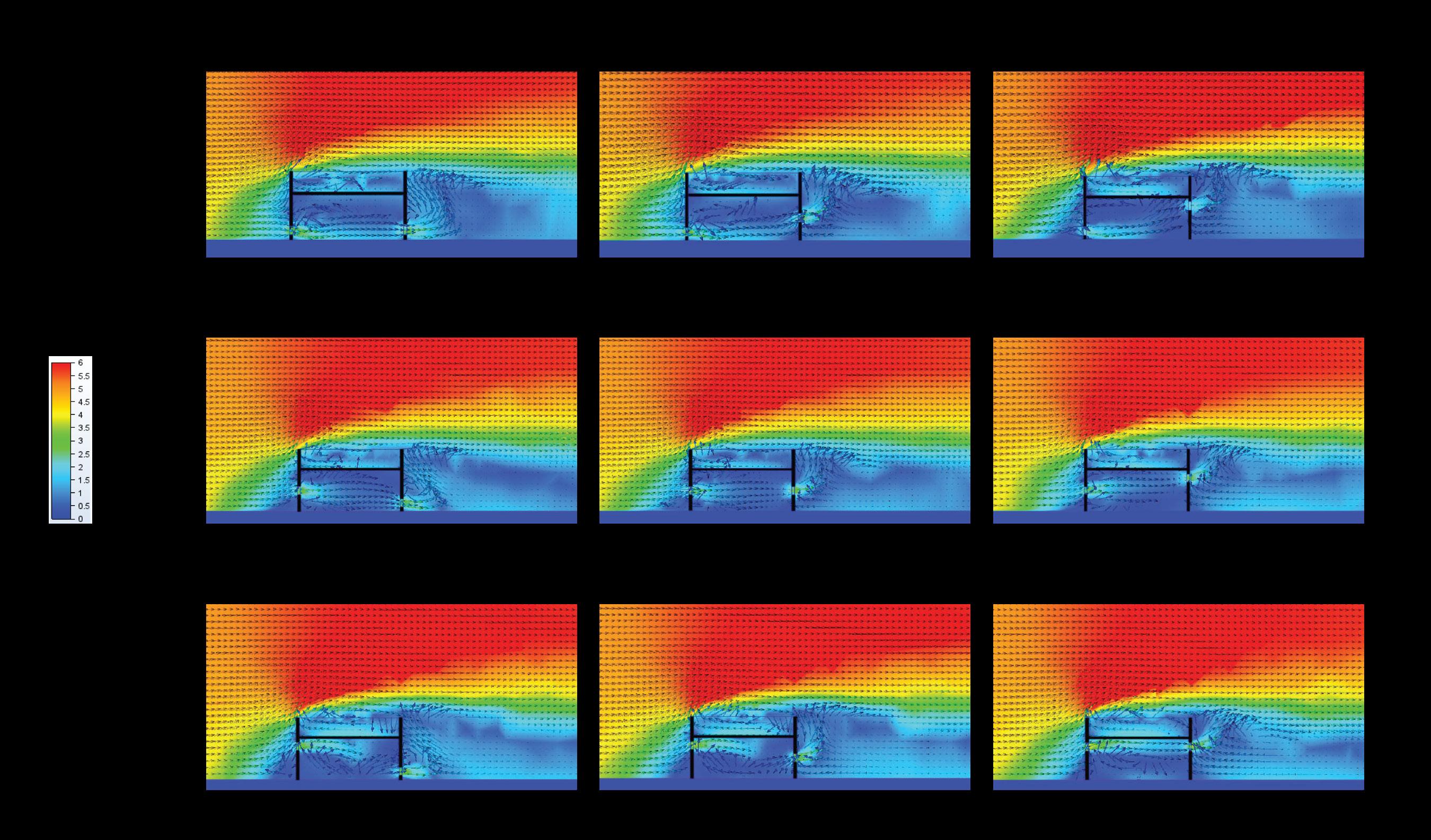
With the Contribution of Luis Llannos Master of Architecture in 2020
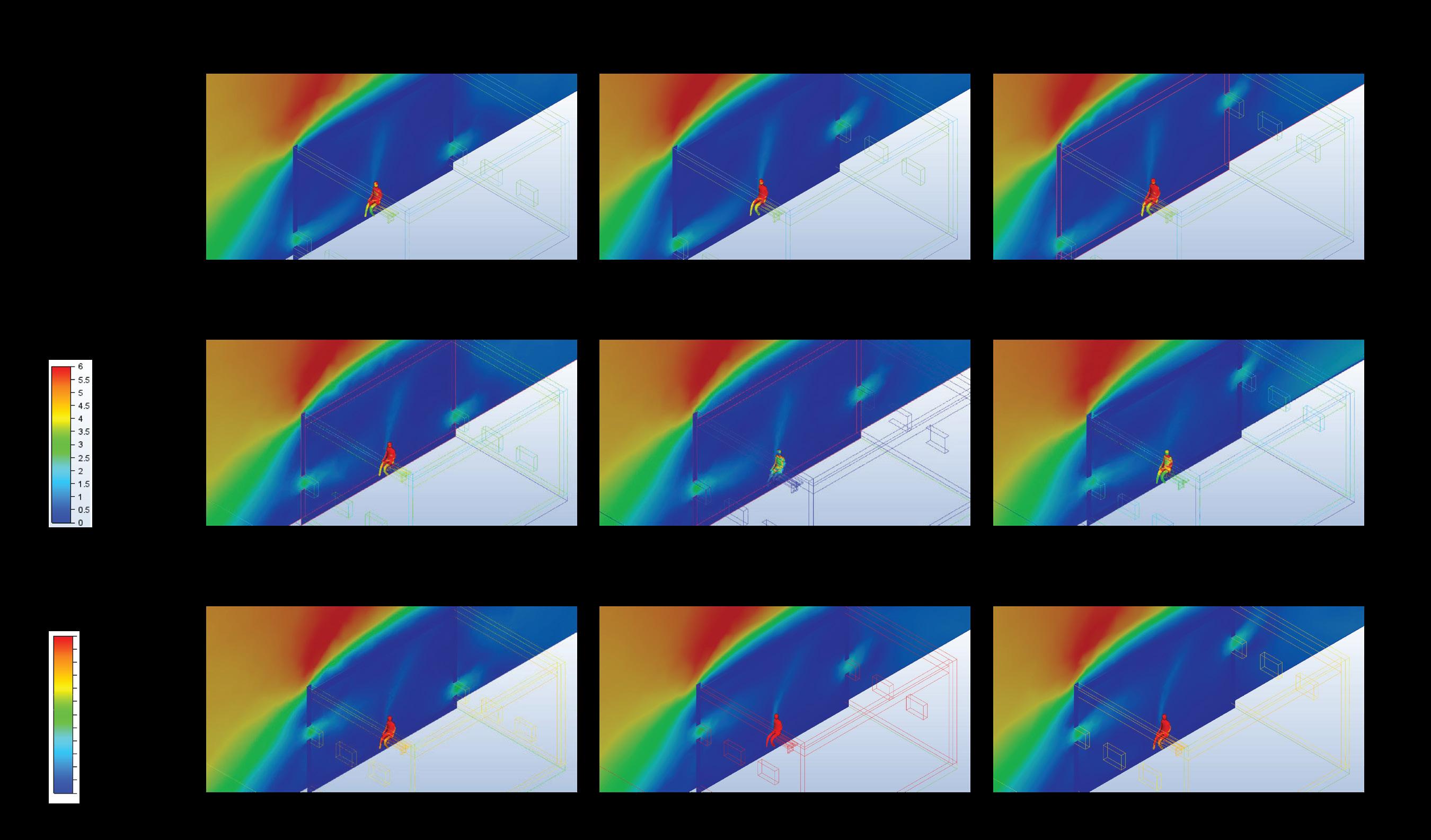
With the Contribution of Luis Llannos Master of Architecture in 2020
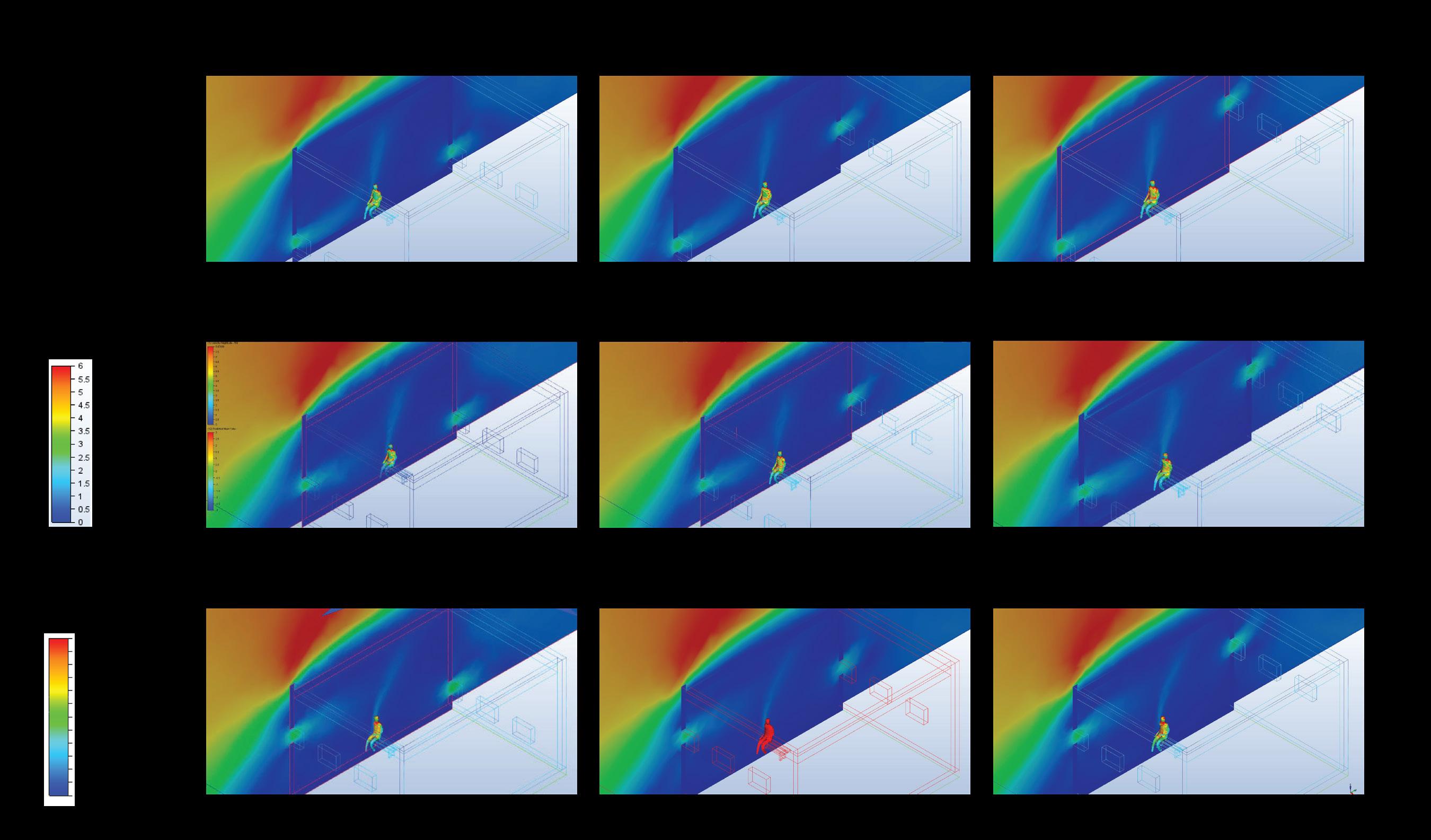
With the Contribution of Luis Llannos Master of Architecture in 2020

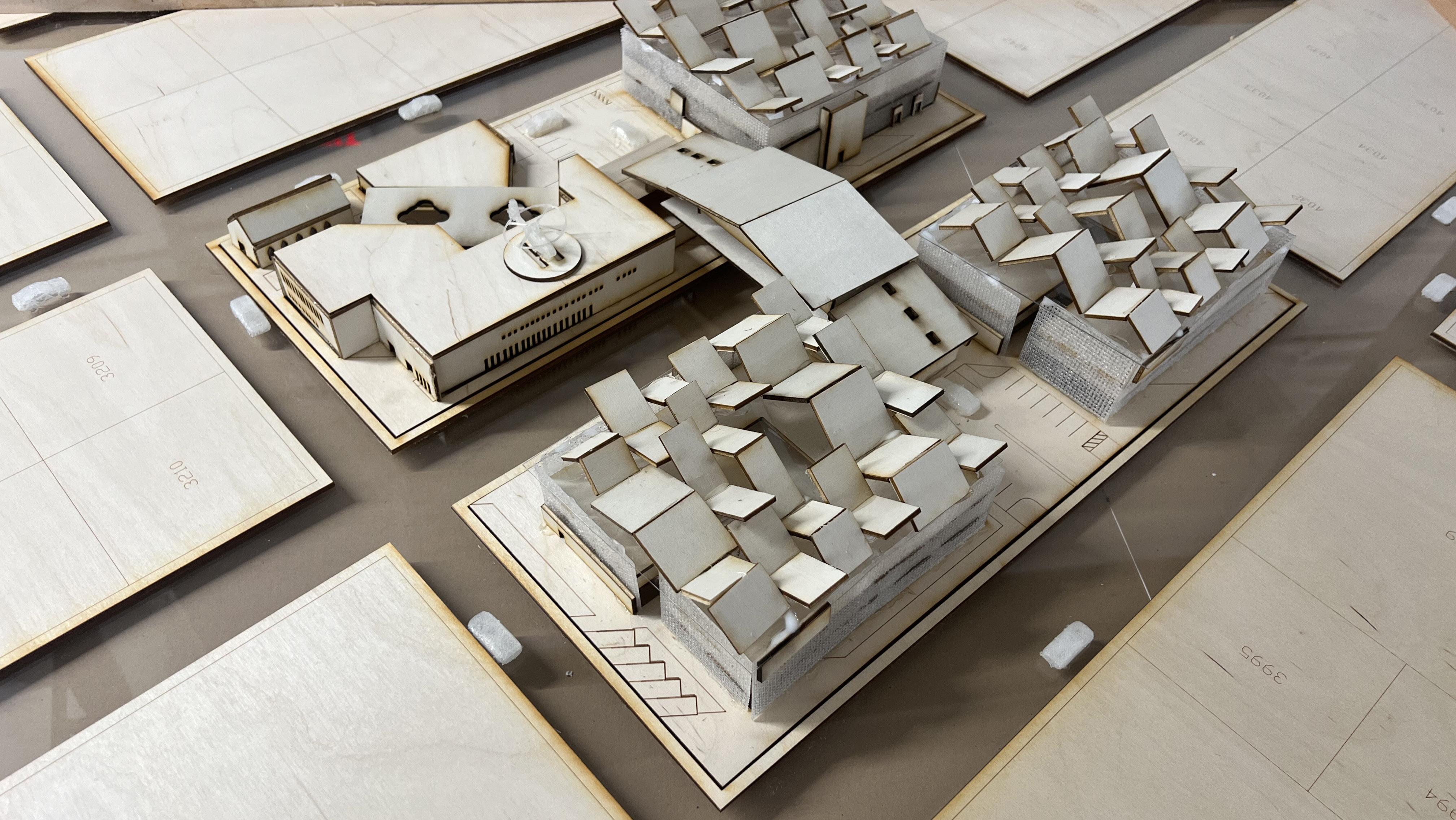
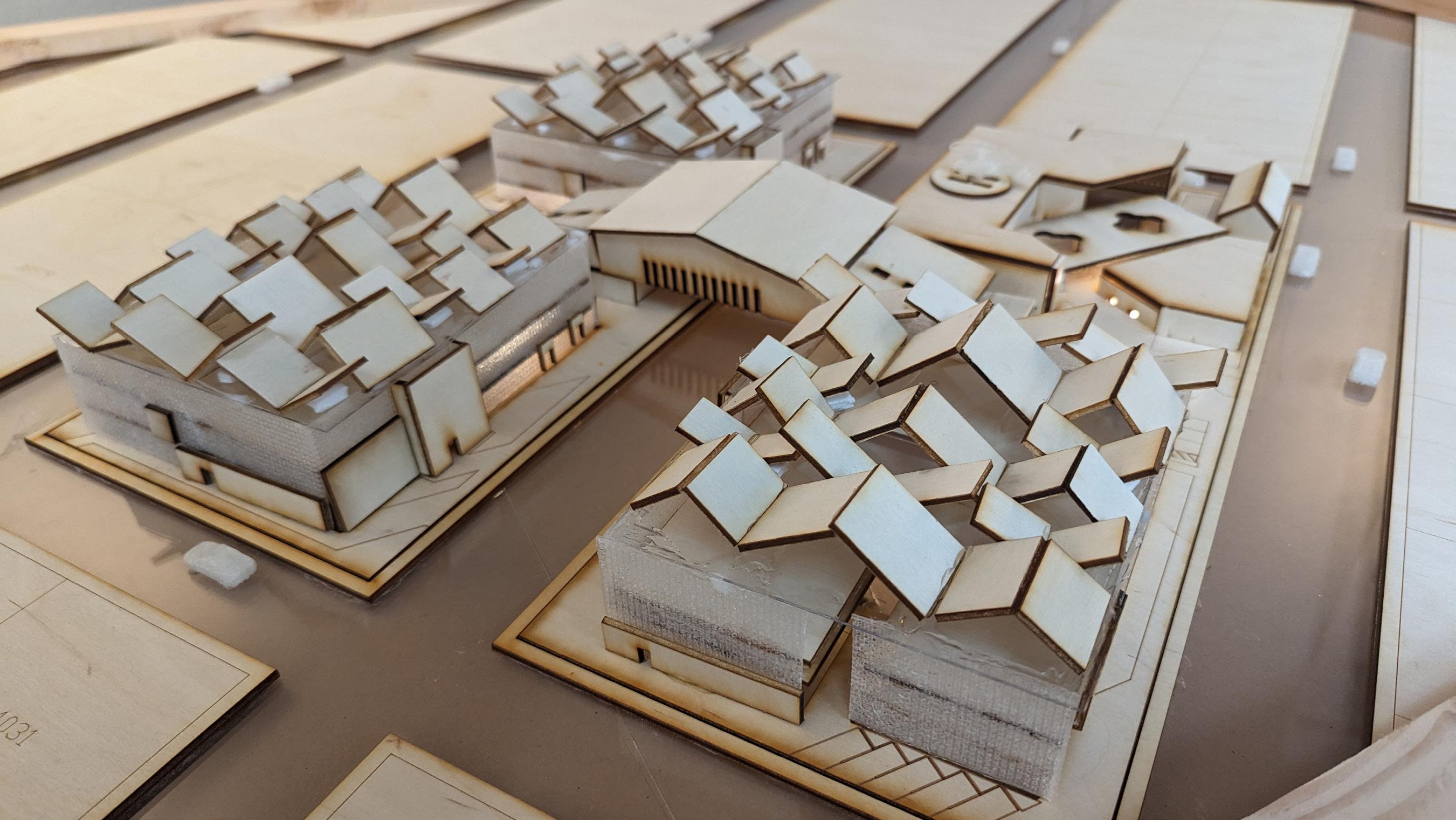
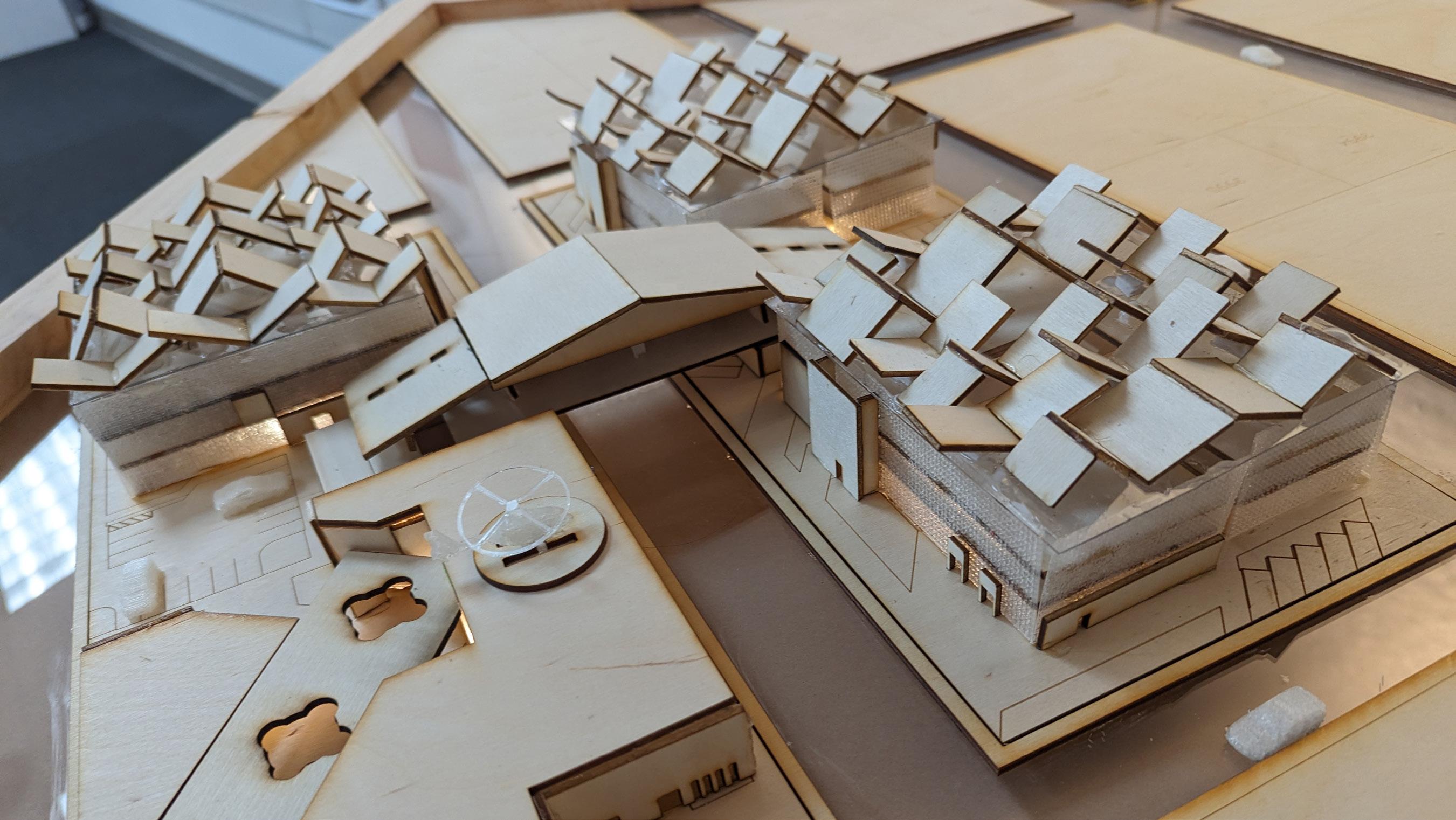
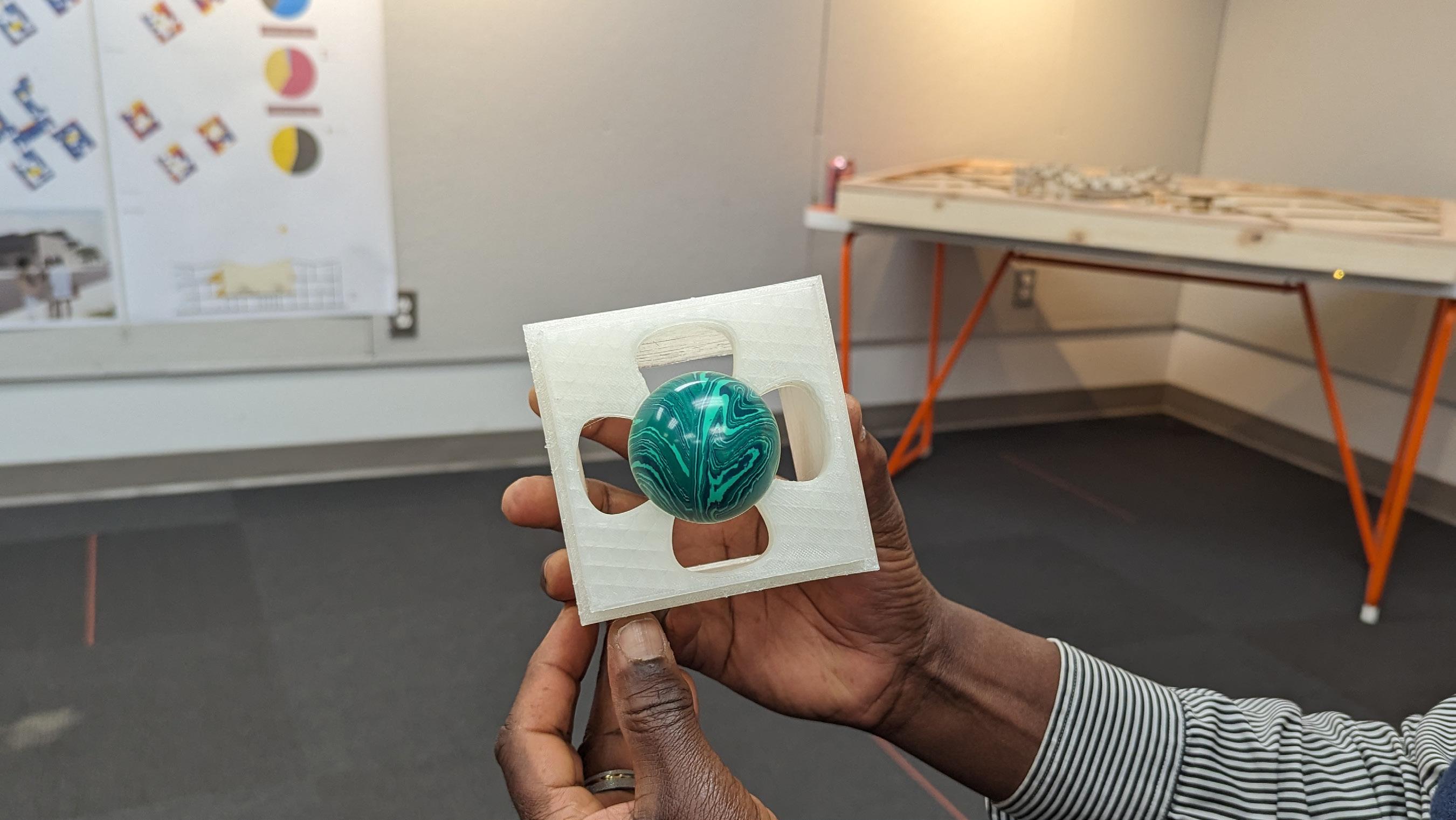

“Democratic Republic of the Congo - United States Department of State.” U.S. Department of State, June 2, 2022. https:// www.state.gov/reports/2021-report-on-international-religious-freedom/democratic-republic-of-the-congo/.
“Accueil: Ministère de La Santé Publique, Hygiène et Prévention.” Accueil | Ministère de la Santé Publique, Hygiène et Prévention. Accessed July 2, 2023. https://sante....
“A Propos de Nous.” Home -, November 21, 2021. https://cpmrdc.com/a-propos-de-nous/.
BBC News. Accessed July 17, 2023. https://www.bb...
Bahga, Sanyam, and Gaurav Raheja. “Complexities of Practicing Architectural Regionalism in India: An Interview Study.” Frontiers of Architectural Research 9, no. 3 (2020): 568–78. https://doi.org/10.1016/j.foar.2020.03.003.
Berlin, Charité – Universitätsmedizin. “About Us.” [ALT + 0]. Accessed August 2, 2023. https:// https://www.charite.de/ en/charite/about_us/
Bobineau, Julien, and Philipp Gieg. The Democratic Republic of the Congo: Problems, progress and prospects = La Republique Democratique du Congo: Problemes, Progres et perspectives. Berlin: Lit, 2016.
Bobineau, Julien, and Philipp Gieg. The Democratic Republic of the Congo: Problems, progress and prospects = La Republique Democratique du Congo: Problemes, Progres et perspectives. Berlin: Lit, 2016.
Brammer, Mikki. “HOSPITALITY: Au Naturel.” Metropolis: Architecture Design, July 2019, 50–52. https://search-ebscohostcom.libproxy.calbaptist.edu/login.aspx?direct=true&db=asu&AN=137446098&site=ehost-live&scope=site.
“Bukavu – Holistic Quality Health.” HPGR, September 30, 2023. https://hpgrbukavu.org/.
Cartañá, Guillermo E. Alvarez. 2017. “Fast-Setting Success for Tropical Climates.” Construction Specifier 70 (10): 30–36. https://search-ebscohost-com.libproxy.calbaptist.edu/login.aspx?direct=true&db=asu&AN=125574887&site=ehostlive&scope=site.
“CDC in the Democratic Republic of the Congo.” Centers for Disease Control and Prevention, September 28, 2022. https://www.cdc.gov/globalhealth/countries/drc/default.htm.
Central Intelligence Agency. Accessed July 17, 2023. https://www.cia.gov/the-world-factbook/countries/congodemocratic-republic-of-the/
Cooper, Nancy. “THE WORLD’S BEST Specialized Hospitals 2023.” Newsweek Global 179, no. 10 (September 23, 2022): 28–61. https://search-ebscohost-com.libproxy.calbaptist.edu/login.aspx?direct=true&db=aph&AN=159120940&site=eh ost-live&scope=site “Democratic Republic of Congo.” World Health Organization. Accessed July 3, 2023. https:// www.af...
“En République Démocratique Du Congo, Les Enfants Menacés Par Des Épidémies Meurtrières de Rougeole et de Choléra.” UNICEF. Accessed June 27, 2023. https://www.unicef.org/fr/communiqu%C3%A9s-de-presse/en-r%C3%A9publiqued%C3%A9mocratique-du-congo-les-enfants-menac%C3%A9s-par-des-%C3%A9pid%C3%A9mies.
Guenther, Robin, and Gail Vittori. Sustainable Healthcare Architecture. Second Editioned. Hoboken , New Jersey: Wiley, 2013.
Heal Africa, February 2, 2023. https://healafrica.org/.
“HJ Hospitals.” Services De Soins De Santé. Accessed July 15, 2023. https://www.hjhospitals.org/en.
“Hôpital de La Sokimo à Watsa Visité Par Le Dg Pistis Bonongo Tokole Lors de Sa Visite de Travail.” YouTube, December 16, 2022. https://www.youtube.com/watch?v=upgcOD_z1xA.
“Hôpitaux Universitaires Pitié Salpêtrière.” Hôpitaux Universitaires Pitié Salpêtrière, June 30, 2023. https://pitiesalpetriere. aphp.fr/
Hosseini, Hengameh. 2021. “How to Design Hospital Settings for Visually Impaired Patients.” Hospital Topics 99 (2): 75–80. doi:10.1080/00185868.2020.1854063.
Hu, Min, Wen Chen, and Winnie Yip. “Hospital Management Practices in County-Level Hospitals in Rural China and International Comparison.” BMC Health Services Research 22, no. 1 (January 13, 2022): 1–11. doi:10.1186/s12913-02107396-y.
Jaiyeoba, Emmanuel Babatunde, and Zvi Efrat. 2022. “The Modern Architecture of Arieh Sharon’s Obafemi Awolowo University Campus, IleIfe, Nigeria.” Curator 65 (3): 591–601. doi:10.1111/cura.12517.
KAABI, SAAD A. L., BETSY VARUGHESE, and RAJVIR SINGH. “Public and Private Healthcare System in Terms of Both Quality and Cost: A Review.” Journal of Clinical & Diagnostic Research 16, no. 8 (August 2022): 1–8. doi:10.7860/ JCDR/2022/55387.16742
125
Kindangen, Jefrey I., Octavianus H. Rogi, Pierre H. Gosal, and Veronica A. Kumurur. 2022. “Attic Ventilation and Radiant Heat Barriers in Naturally Ventilated Galvanized Metal-Roofed Buildings.” Advances in Building Energy Research 16 (5): 669–95. doi:10.1080/17512549.2022.2084640.
Klüppel, Griselda Pinheiro. “Aspects of the Tropical Climate Adaptation in Brazilian Modern Movement Architecture.” Docomomo Journal, September 2, 2006, 84–90. https://search-ebscohost-com.libproxy.calbaptist.edu/login.aspx?dir ect=true&db=asu&AN=40838881&site=ehost-live&scope=site.
Kutikov, Alexander, Boris Rozenfeld, Brian L. Egleston, Mohit Sirohi, Raymond W. Hwang, and Robert G. Uzzo. 2012. “Academic Ranking Score: A Publication-Based Reproducible Metric of Thought Leadership in Urology.” European Urology 61 (3): 435–39. doi:10.1016/j.eururo.2011.10.025.
Lapisa, Remon, Arwizet, Andre Kurniawan, Krismadinata, Haolia Rahman, and Zaid Romani. “Optimized Design of Residential Building Envelope in Tropical Climate Region: Thermal Comfort and Cost Efficiency in an Indonesian Case Study.” Journal of Architectural Engineering 28, no. 2 (June 2022): 1–11. doi:10.1061/(ASCE)AE.1943-5568.0000529.
“Life Expectancy in the U.S. Dropped for the Second Year in a Row in 2021.” Centers for Disease Control and Prevention, August 31, 2022. https://www.cdc.gov/nchs/pressroom/nchs_press_releases/2022/20220831.htm.
“Map Gallery (0).” SEDAC. Accessed July 17, 2023. https://sedac.ciesin.columbia.edu/maps/gallery/ search?facets=country:democratic+republic+of+the+congo.
Mayo Clinic College of Medicine and Science. “Campus and Community - Mayo Clinic College of Medicine & Science.” Mayo Clinic College of Medicine and Science. Accessed August 3, 2023. https://colleg...
Mead, Mitchell, and Andrew M Ibrahim. “Strategies to Evaluate the Quality of Hospital Design with Clinical Data.” Journal of Hospital Medicine 18, no. 6 (June 2023): 538–43. doi:10.1002/jhm.12987
MELVIN, JEREMY. “Climate Control.” Architectural Review 231, no. 1383 (May 2012): 28–37. https://search-ebscohost-com. libproxy.calbaptist.edu/login.aspx?direct=true&db=asu&AN=75132346&site=ehost-live&scope=site
“NASA Survey Technique Estimates Congo Forest’s Carbon – Climate Change: Vital Signs of the Planet.” NASA, November 16, 2017. https://climate.nasa.gov/news/2656/nasa-survey-technique-estimates-congo-forests-carbon/ New Karolinska Solna | Skanska - Global Corporate Website. Accessed August 8, 2023. https://group.skanska.com/ projects/57344/New-Karolinska-Solna/
Newsweek. “World’s Best Hospitals 2022 - Top 250.” Newsweek, October 14, 2022. https://www.newsweek.com/worldsbest-hospitals-2022. NIELD, LAWRENCE, and TONY COX. “Cooling a Tropical City.” Landscape Architecture Australia, no. 147 (August 2015): 23–26. https://search-ebscohost-com.libproxy.calbaptist.edu/login.aspx?direct=true&db=asu& AN=109117792&site=ehost-live&scope=site.
Obregon, Jessica. “Cuba: Architecture and the Social Order.” Thesis, SURFACE, 2014.
O’Rourke, Timothy. “Architecture for Indigenous Healthcare in the Regions.” Architecture Australia 108, no. 1 (January 2019): 62–63. https://search-ebscohost-com.libproxy.calbaptist.edu/login.aspx?direct=true&db=asu&AN=134819377& site=ehost-live&scope=site.
Pingel, Michael J. 2021. “A National Look at Hospital Bed Tower Design.” Health Environments Research & Design Journal (HERD) (Sage Publications, Ltd.) 14 (3): 305–19. doi:10.1177/1937586721996251.
Rapoport, Amos. House form and culture. Englewood Cliffs, NJ: Prentice-Hall, 1991.
“SAFE AND WELCOME: Evolving Hospitality Design.” 2020. Interior Design 91 (7): 32–33. https://search-ebscohost-com. libproxy.calbaptist.edu/login.aspx?direct=true&db=asu&AN=143864300&site=ehost-live&scope=site.
SCHWIRCK, SAMANTHA. “More Than Medicine.” Lighting Design & Application 46, no. 10 (October 2016): 48–52. https://searchebscohost-com.libproxy.calbaptist.edu/login.aspx?direct=true&db=asu&AN=118514854&site=ehost-live&scope=site
Sulaiman , Shaharin A. “Overview of Geography, Socio-Economy, Energy and Environment of the Tropical Countries.” Essay. In Clean Energy Opportunities in Tropical Countries, 1–31. S.l.: SPRINGER VERLAG, SINGAPOR, 2021.
“THE WORLD’S BEST Smart Hospitals 2023.” Newsweek Global 179, no. 10 (September 23, 2022): 62–65. https://searchebscohost-com.libproxy.calbaptist.edu/login.aspx?direct=true&db=aph&AN=159120941&site=ehost-live&scope=site. Toronto General Hospital. Accessed July 4, 2023. https://www.uhn.ca/OurHospitals/TGH. Tshimbombu, Tshibambe N., Antoine Beltchika Kalubye, Caitlin Hoffman, John H. Kanter, Gail Rosseau, Daniel Safari Nteranya, Arsene Daniel Nyalundja, and Jean-Pierre Kalala Okito. “Review of Neurosurgery in the Democratic Republic of Congo: Historical Approach of a Local Context.” World Neurosurgery 167 (November 2022): 81–88. doi:10.1016/j.wneu.2022.07.113.
Tshiunza, Alexis, Manlio Michieletto, and Olatunde Adedayo. “Sustainability in the New Congo’s Tropical Architecture: A Case Study of the Sabena Towers by Claude Laurens.” Sustainable Development Research 3, no. 3 (2021): 1–16. https://doi.org/10.30560/sdr.v3n3p1.
Zhang, Tingkai, Xinran Qi, Qiwei He, Jiayi Hee, Rie Takesue, Yan Yan, and Kun Tang. 2021. “The Effects of Conflicts and Self-Reported Insecurity on Maternal Healthcare Utilisation and Children Health Outcomes in the Democratic Republic of Congo (DRC)” Healthcare 9, no. 7: 842. https://doi.org/10.3390/healthcare9070842
